Abstract
A survey of bilharziasis and its vectors in certain countries of north-east Africa and of the Red Sea area, carried out between December 1951 and February 1952, is described within the framework of a review of the somewhat scattered and incomplete information already available on this subject in the literature. Clinical inquiry and microscopic examination of random stool and urine specimens were used to obtain data on the endemicity of the disease, and many samples of suspect mollusc vectors of Schistosoma haematobium and S. mansoni were collected from varied habitats and subsequently classified. A section on malacology discusses the difficulties of systematization of the African freshwater snails. The need for a fuller investigation of human incidence, particularly in the inland and highland districts, is stressed, and the author suggests measures for the control of vectors, sanitation of water channels, prophylaxis of the disease, health education and legislation, and biological and chemical research. He draws the conclusion that the future economy of these countries depends upon the joint efforts of the physician, the malacologist, the chemist, and the engineer in controlling the spread of bilharziasis from the highly endemic areas to regions where its incidence is still slight.
Full text
PDF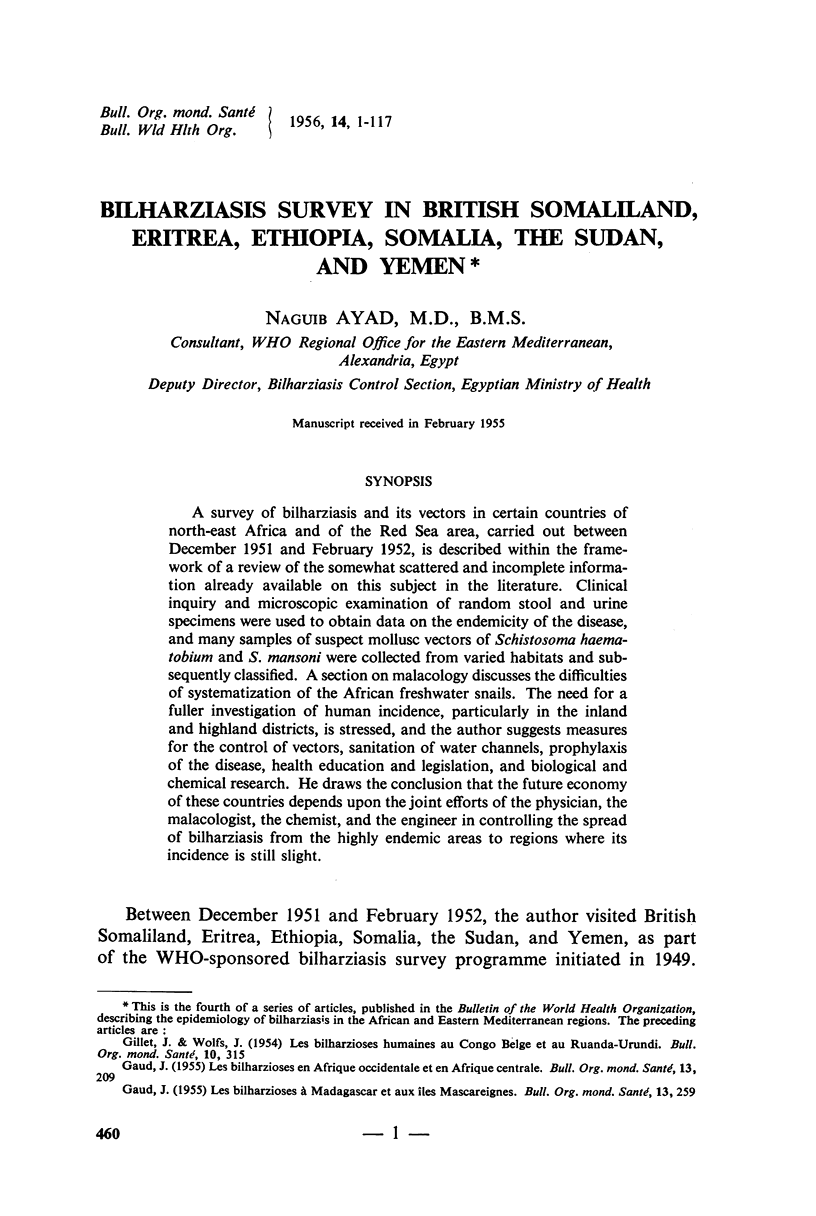

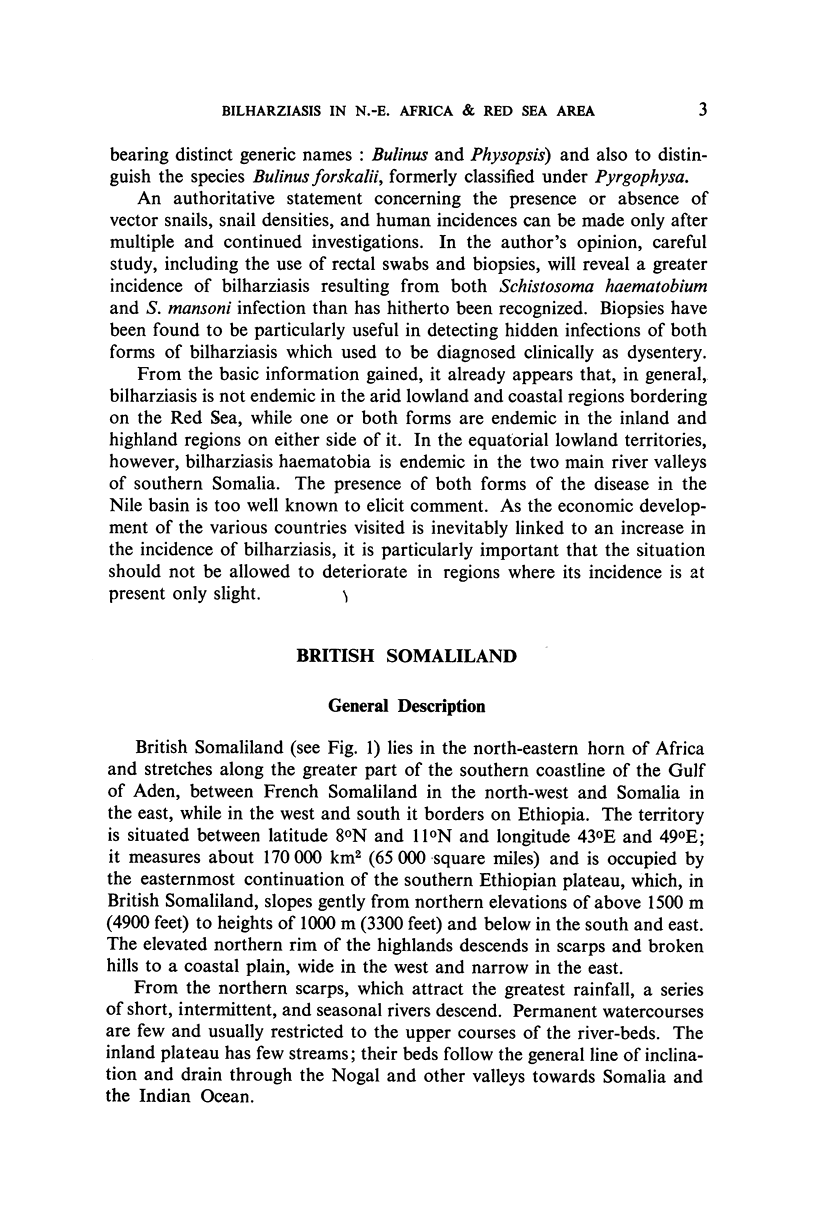
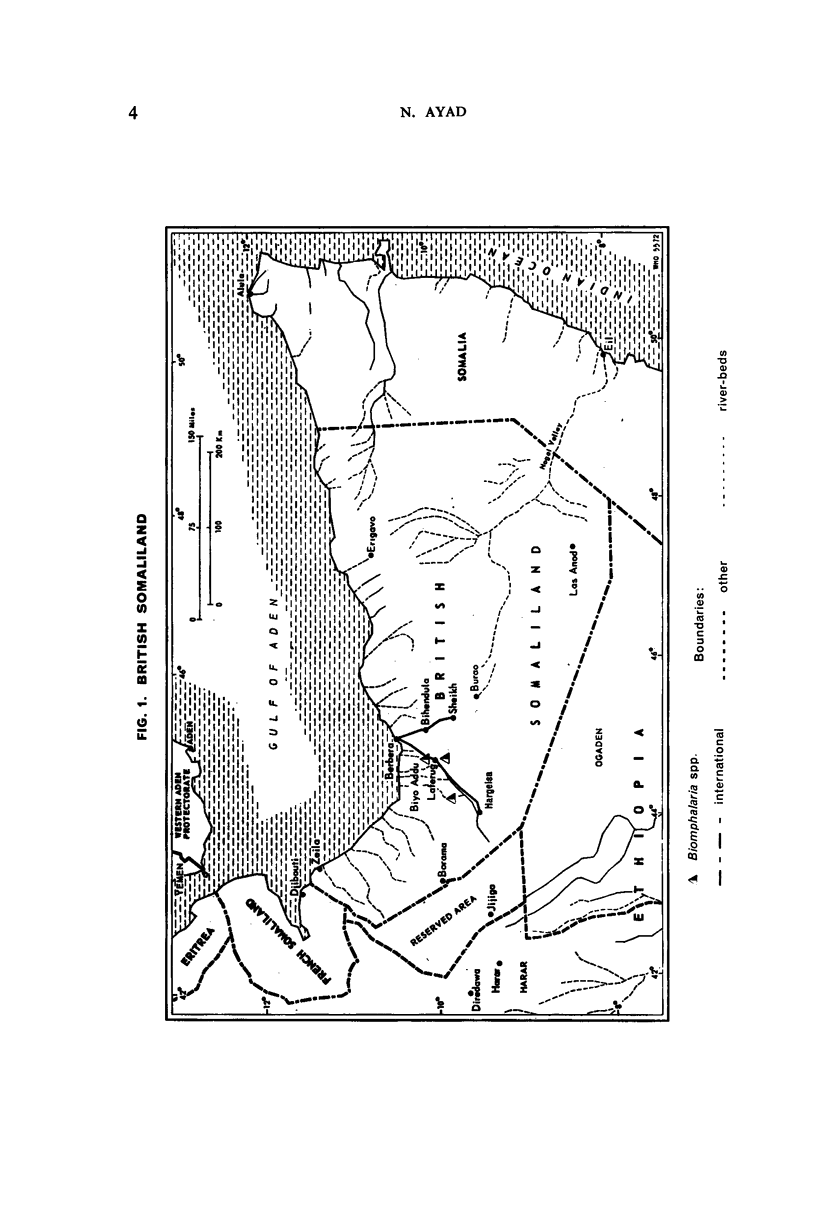
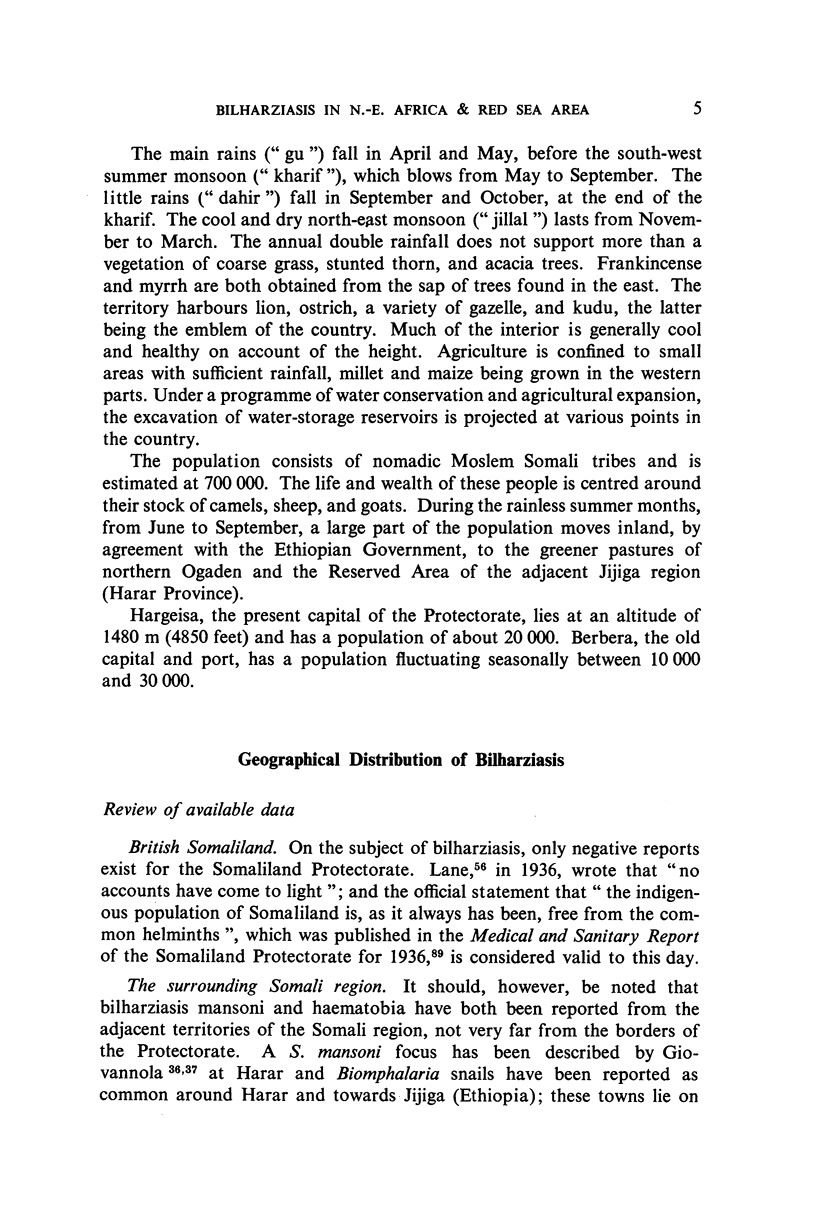
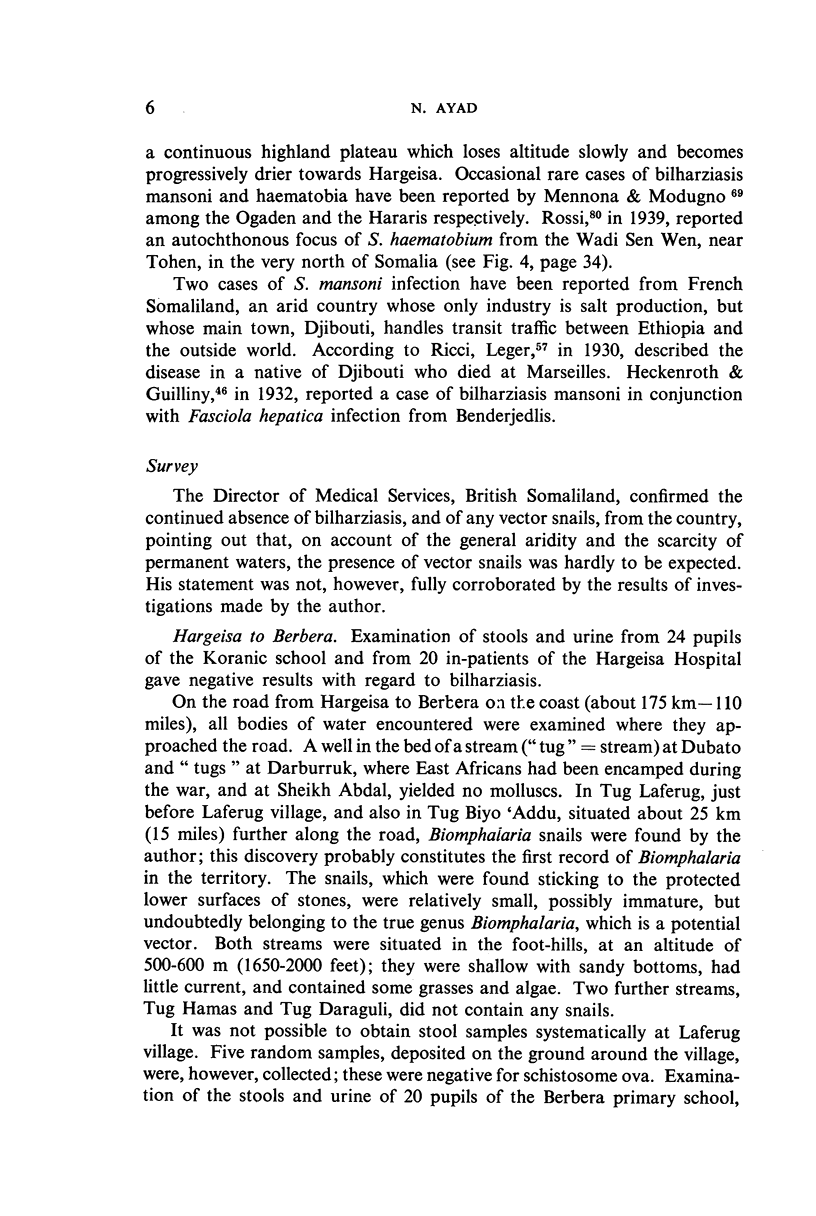
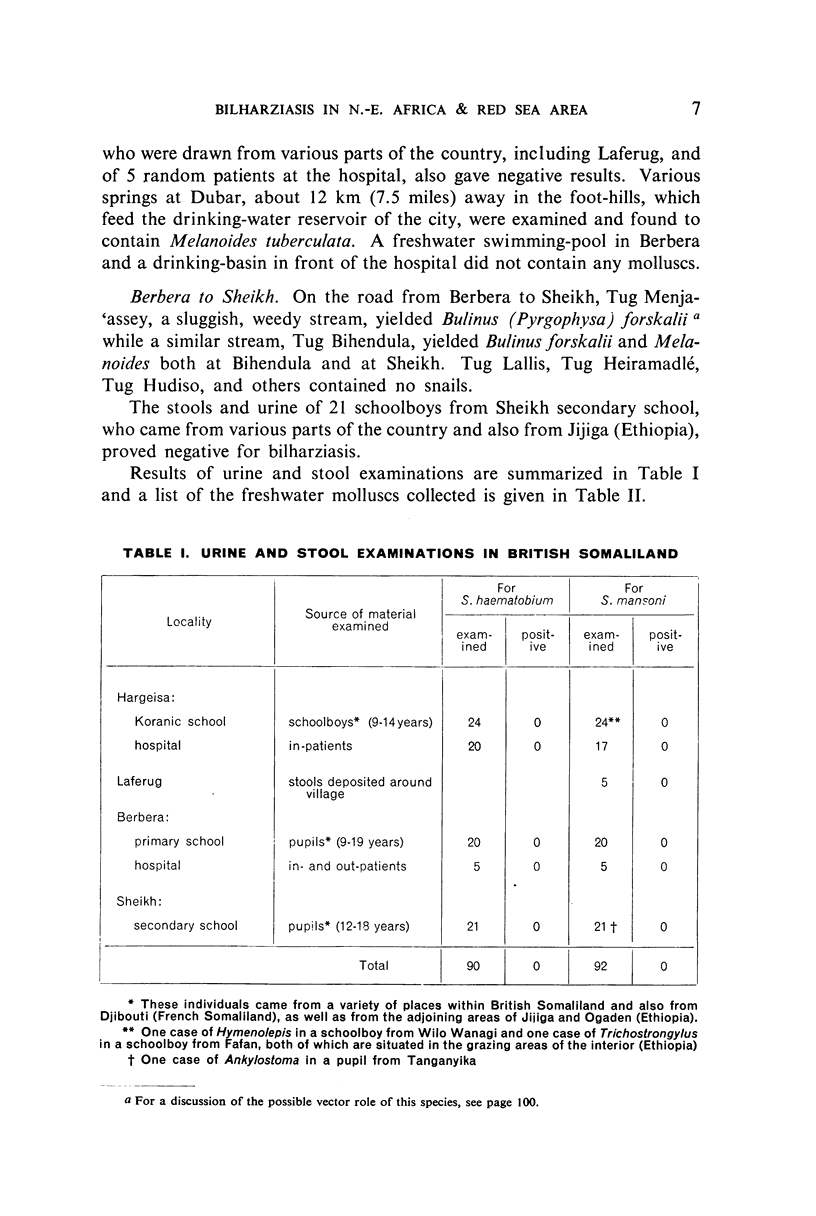

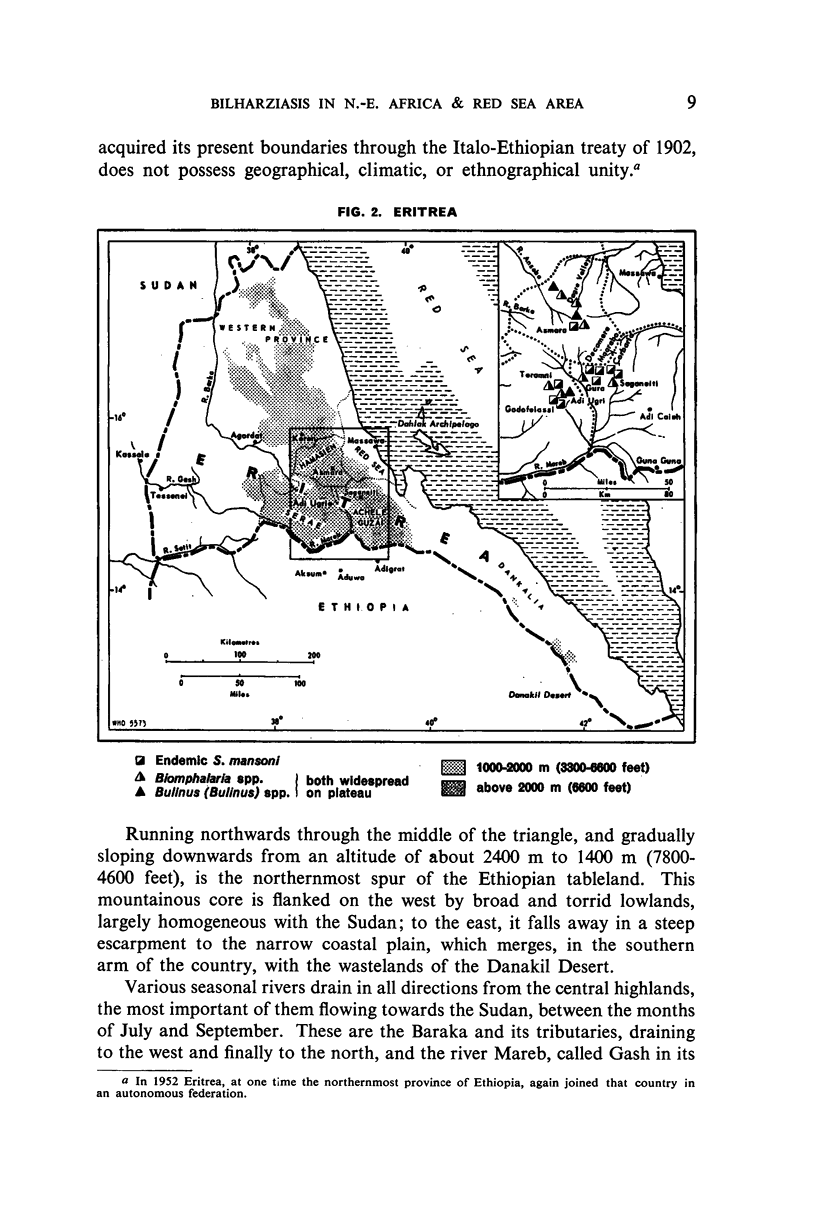
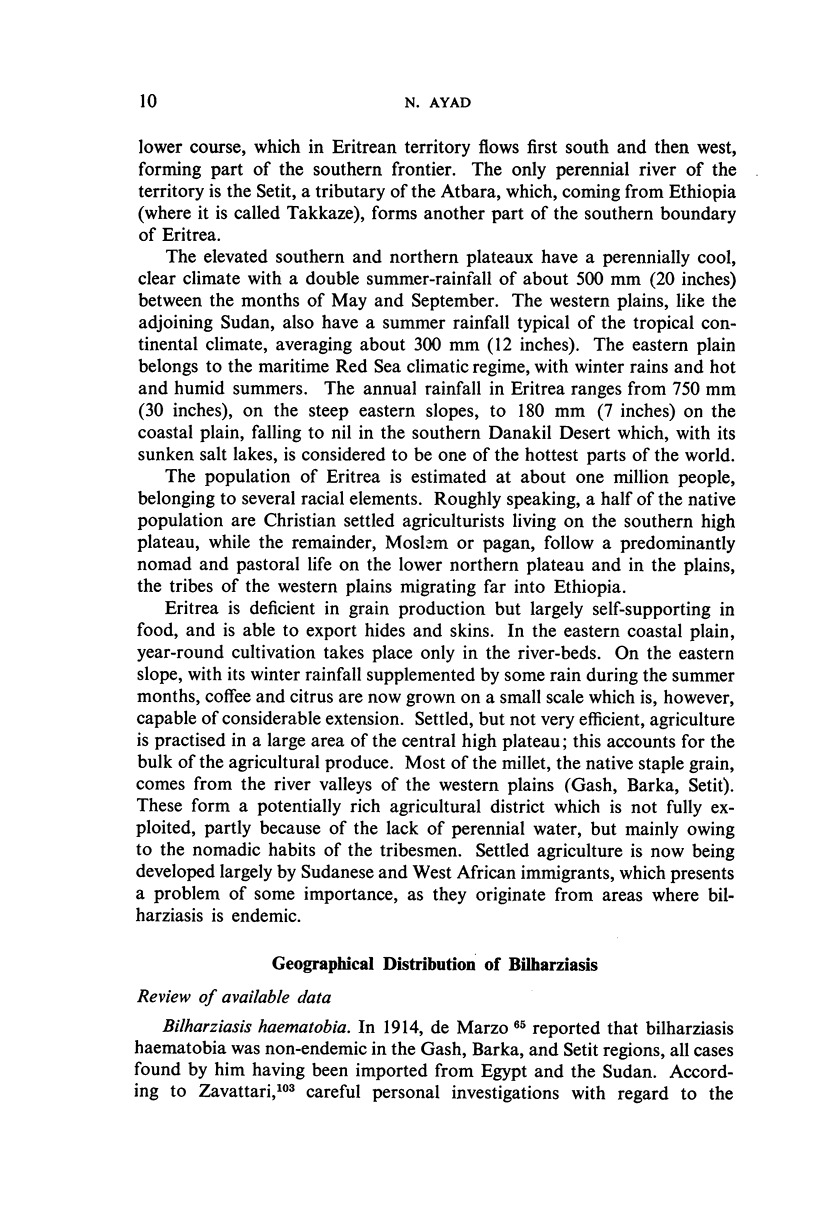

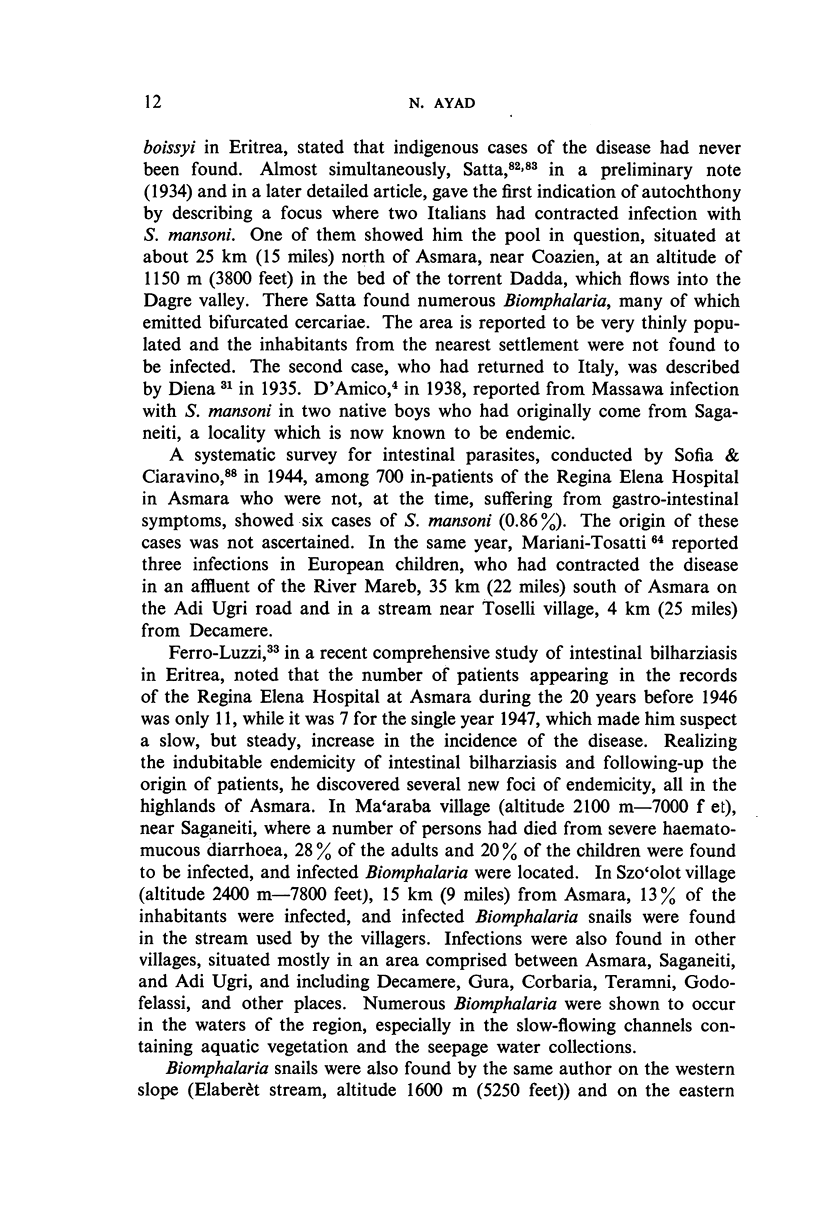



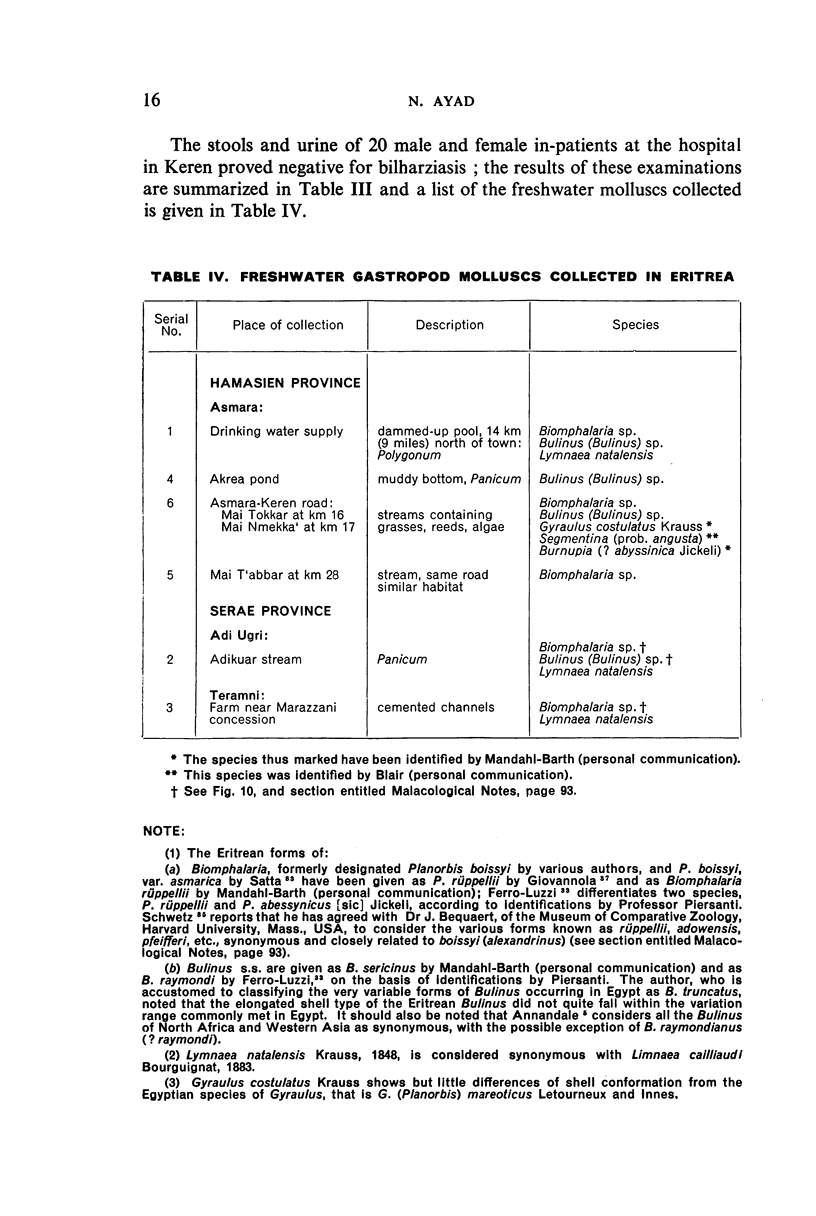
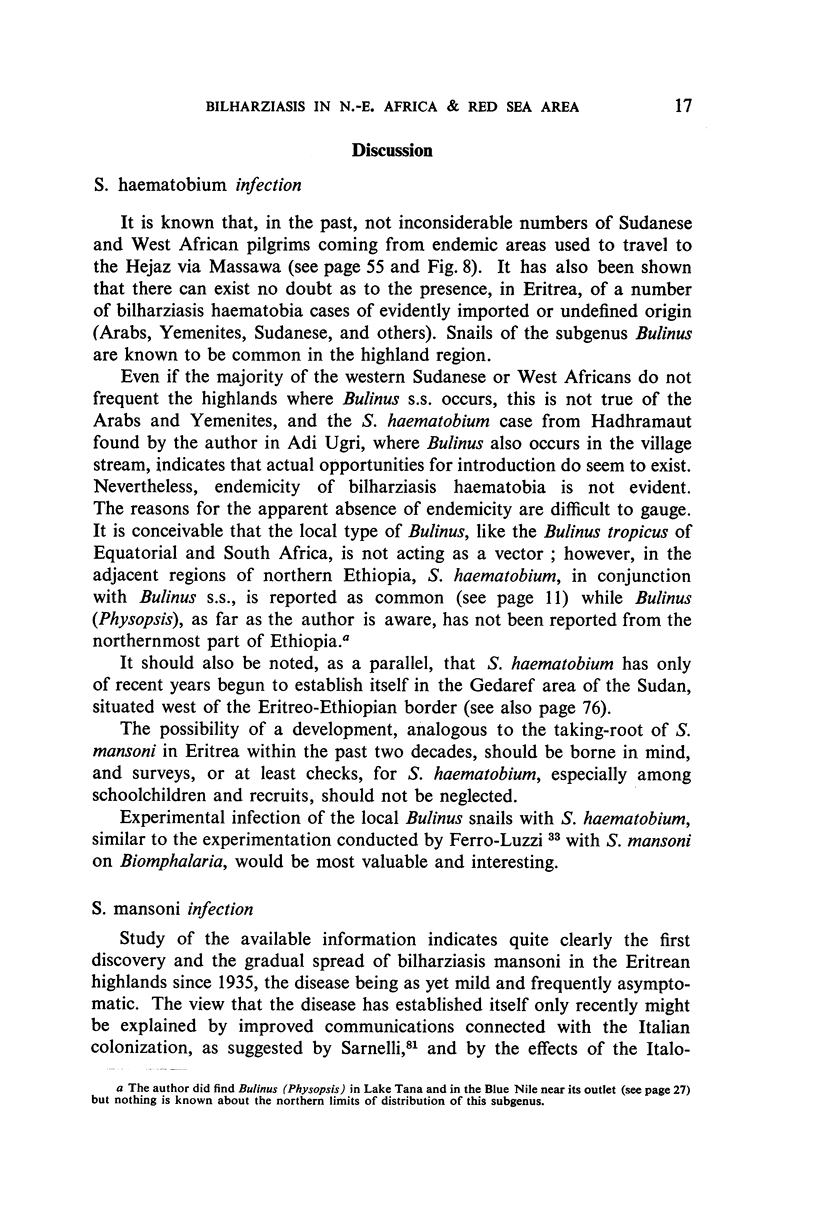

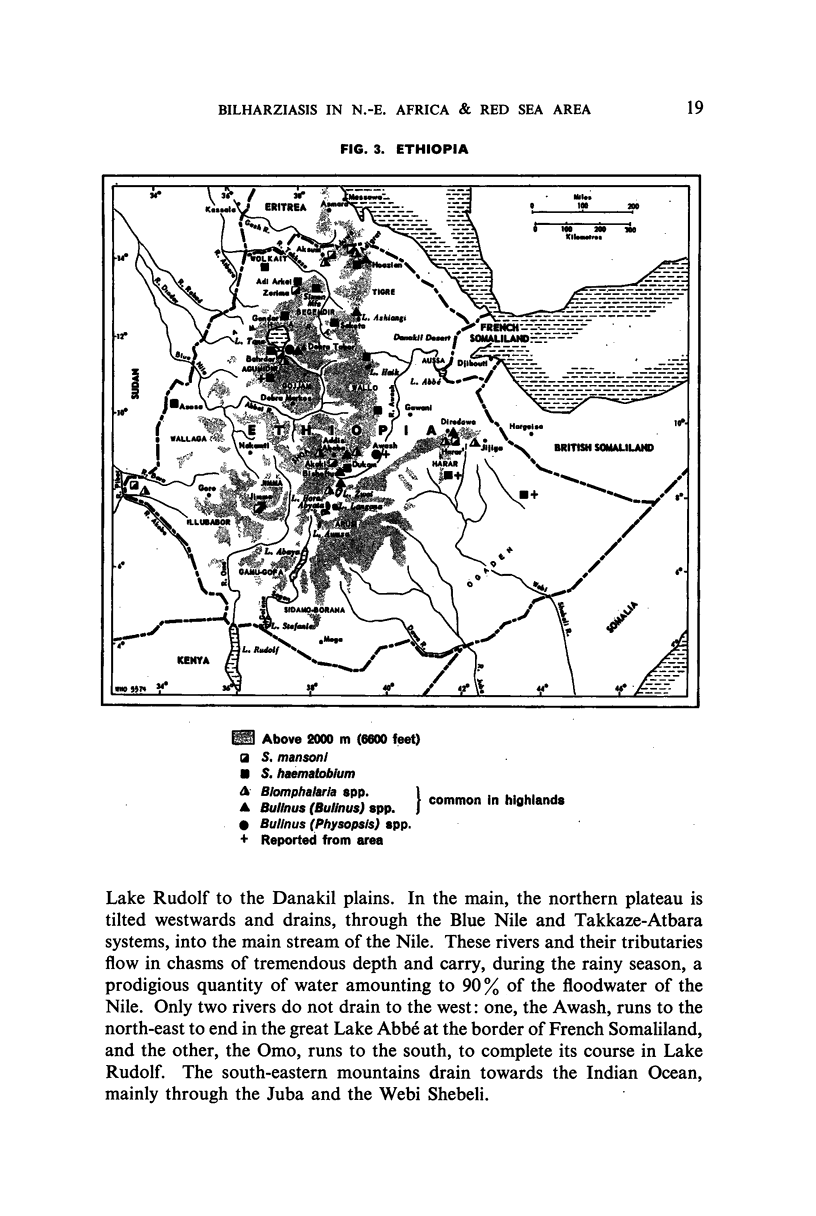
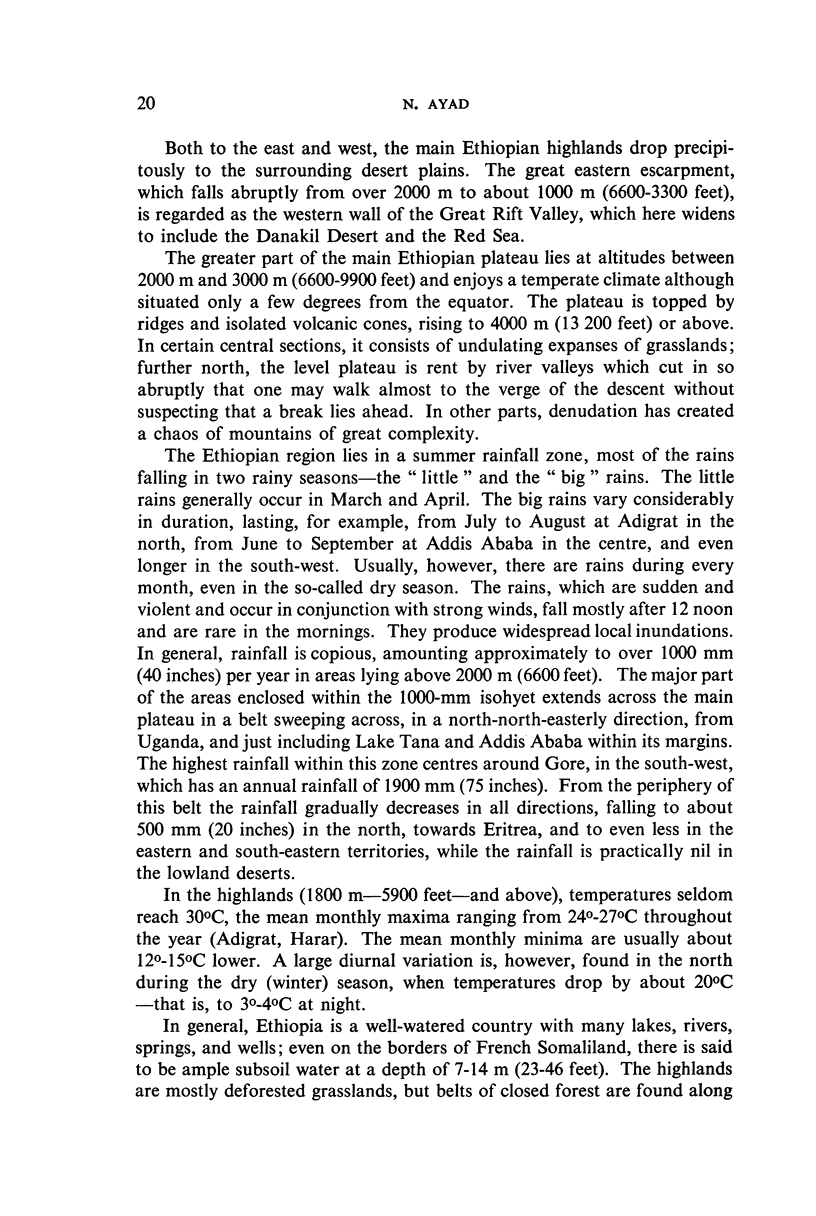

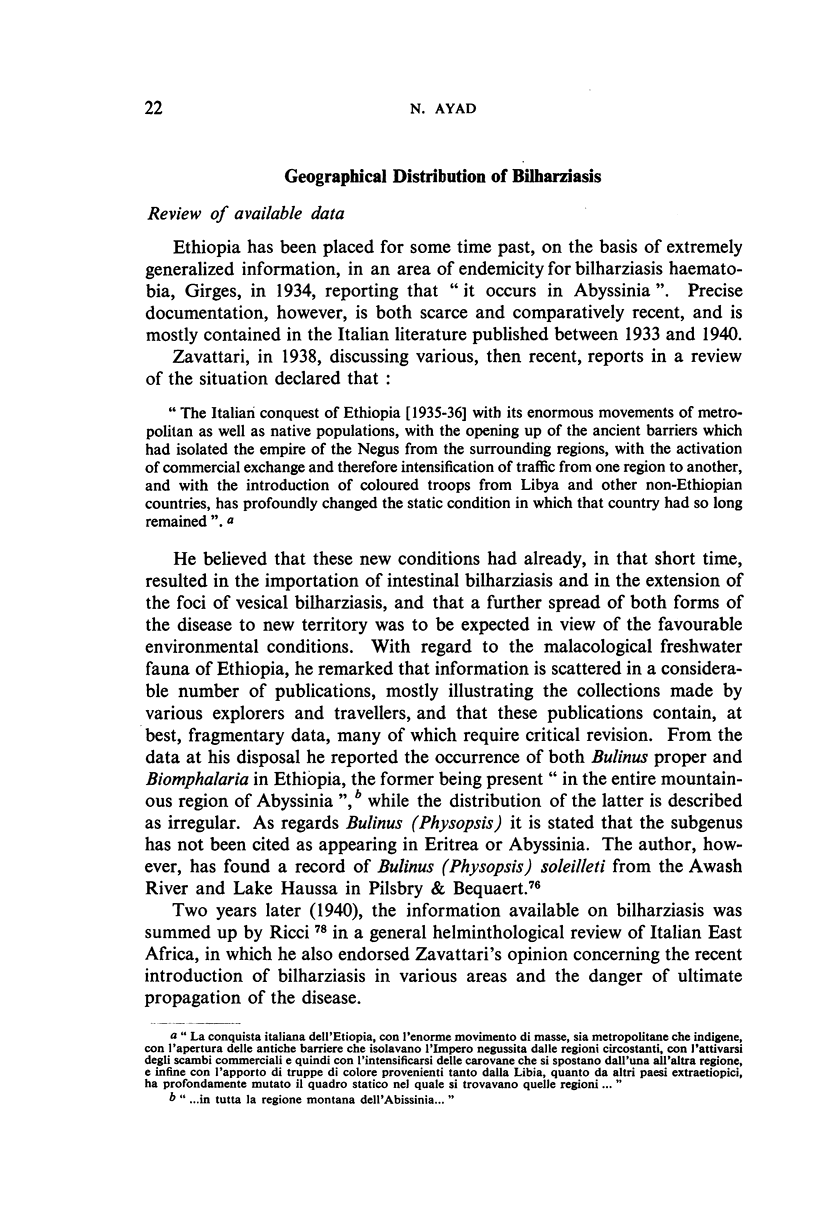
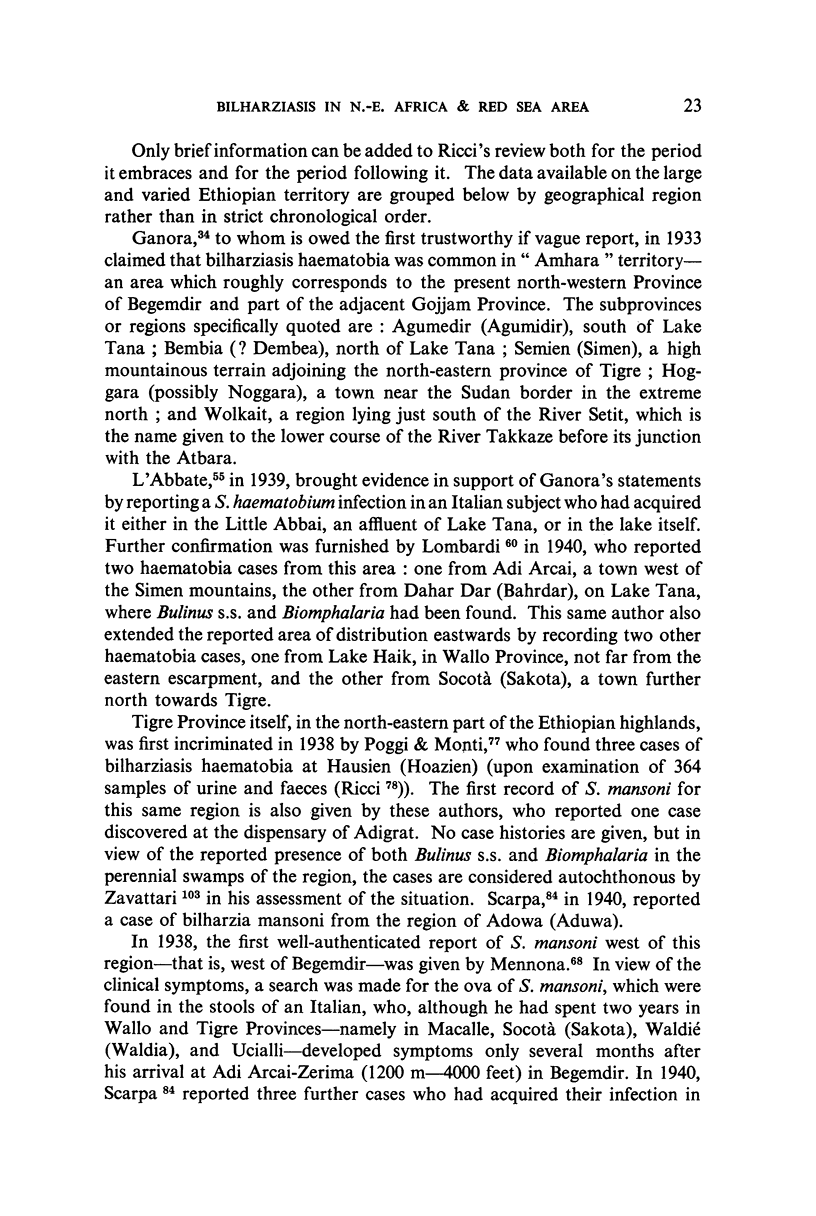
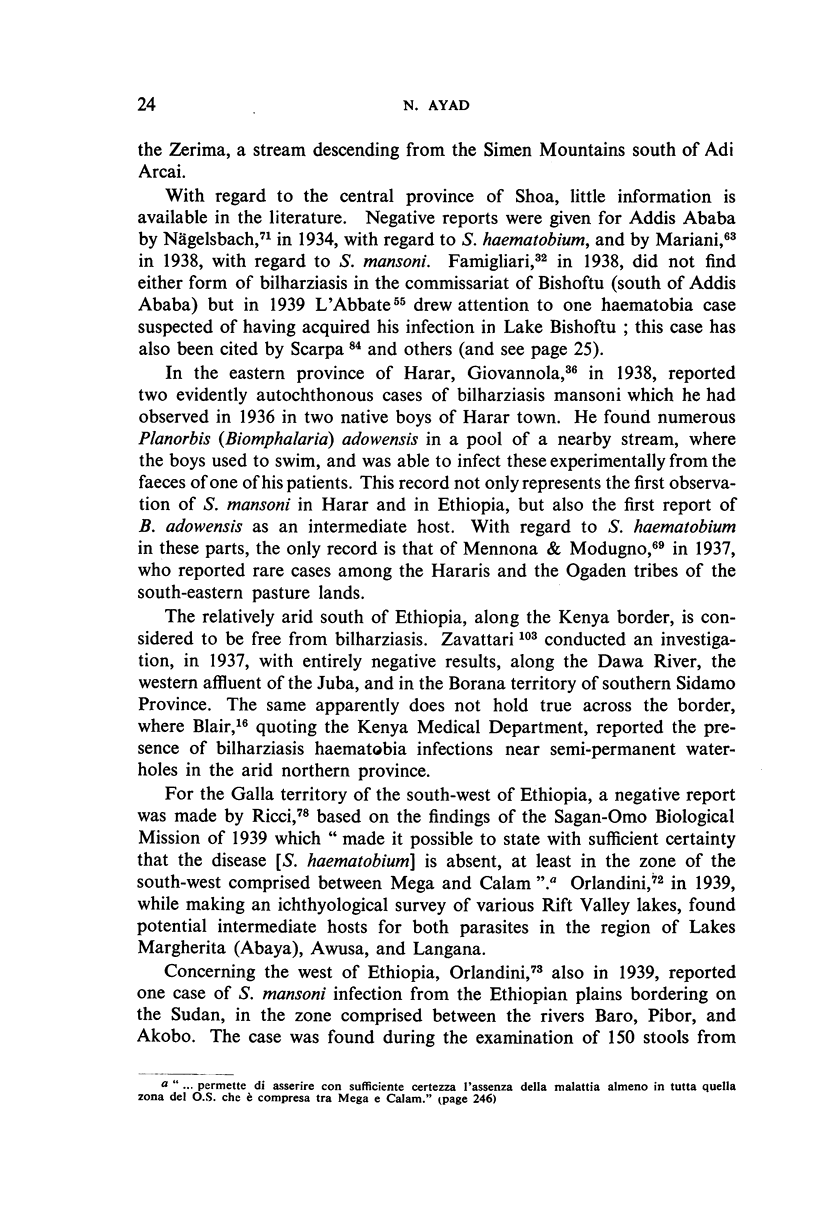

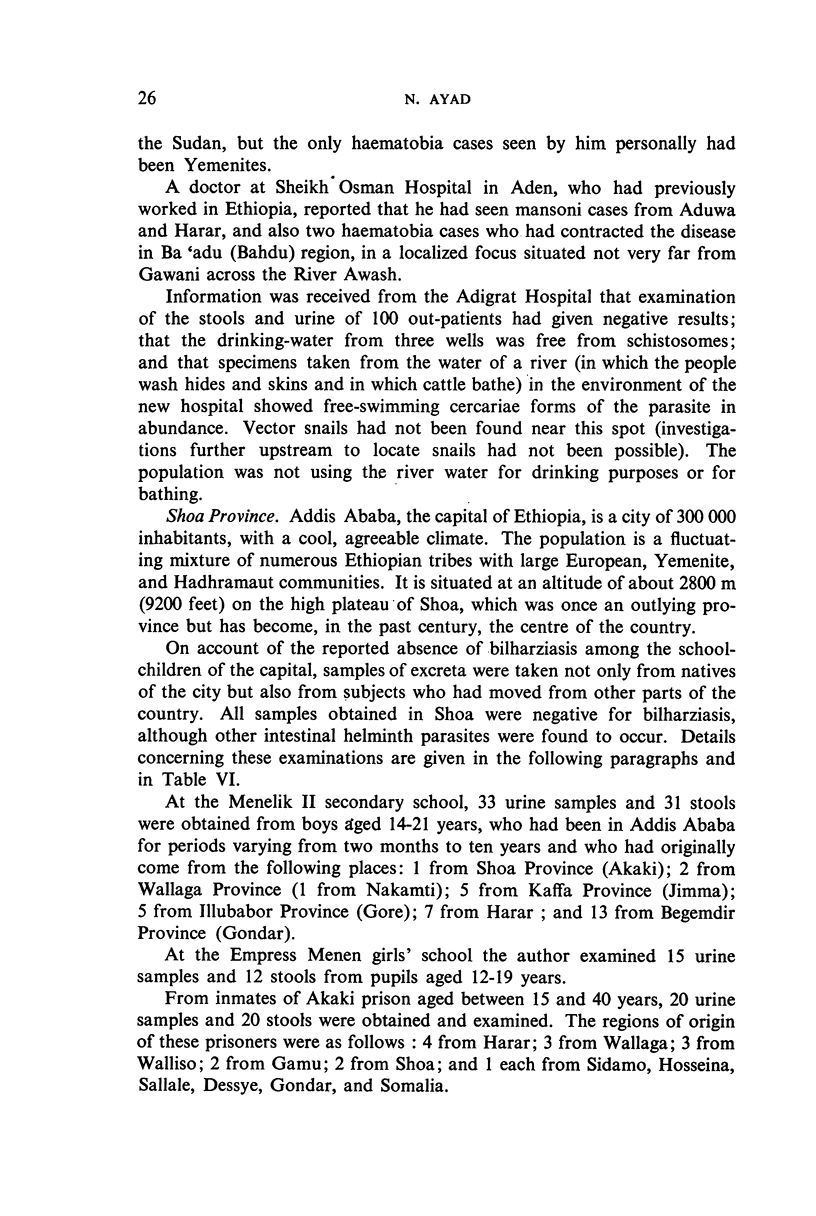



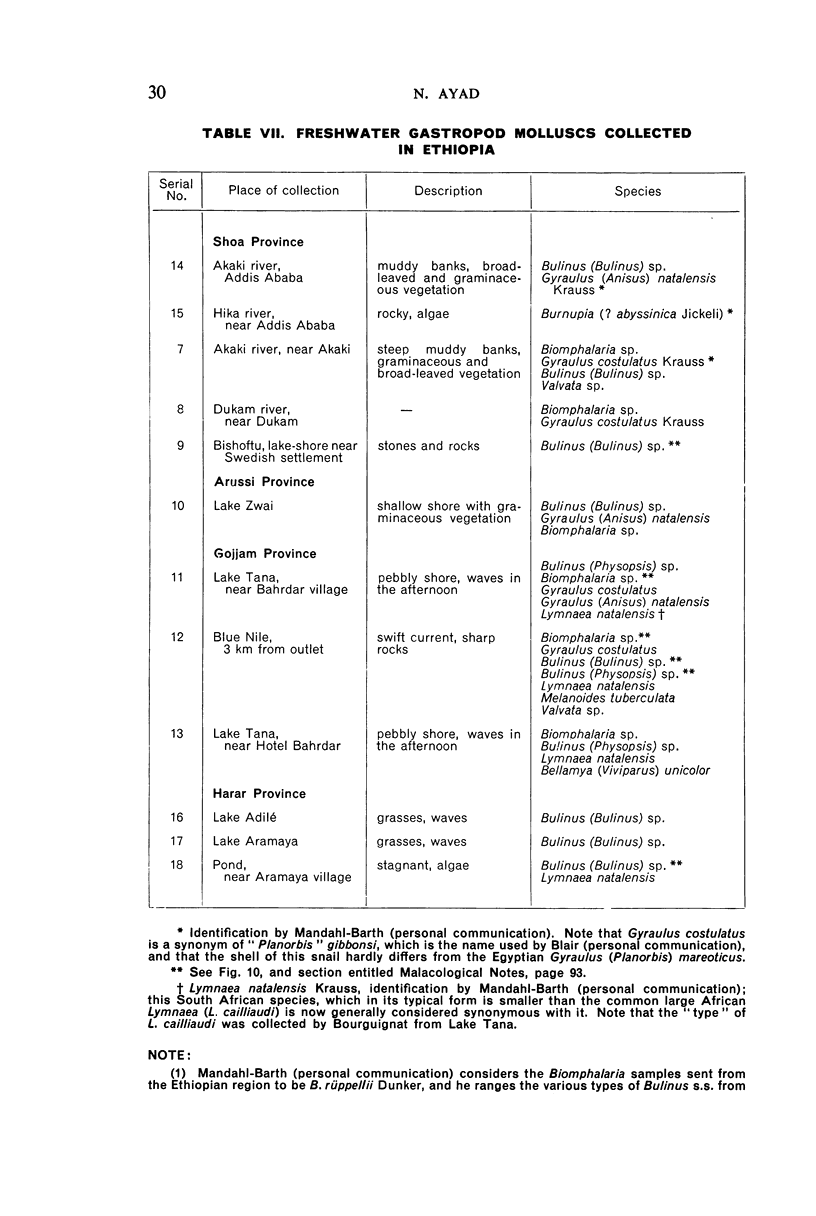
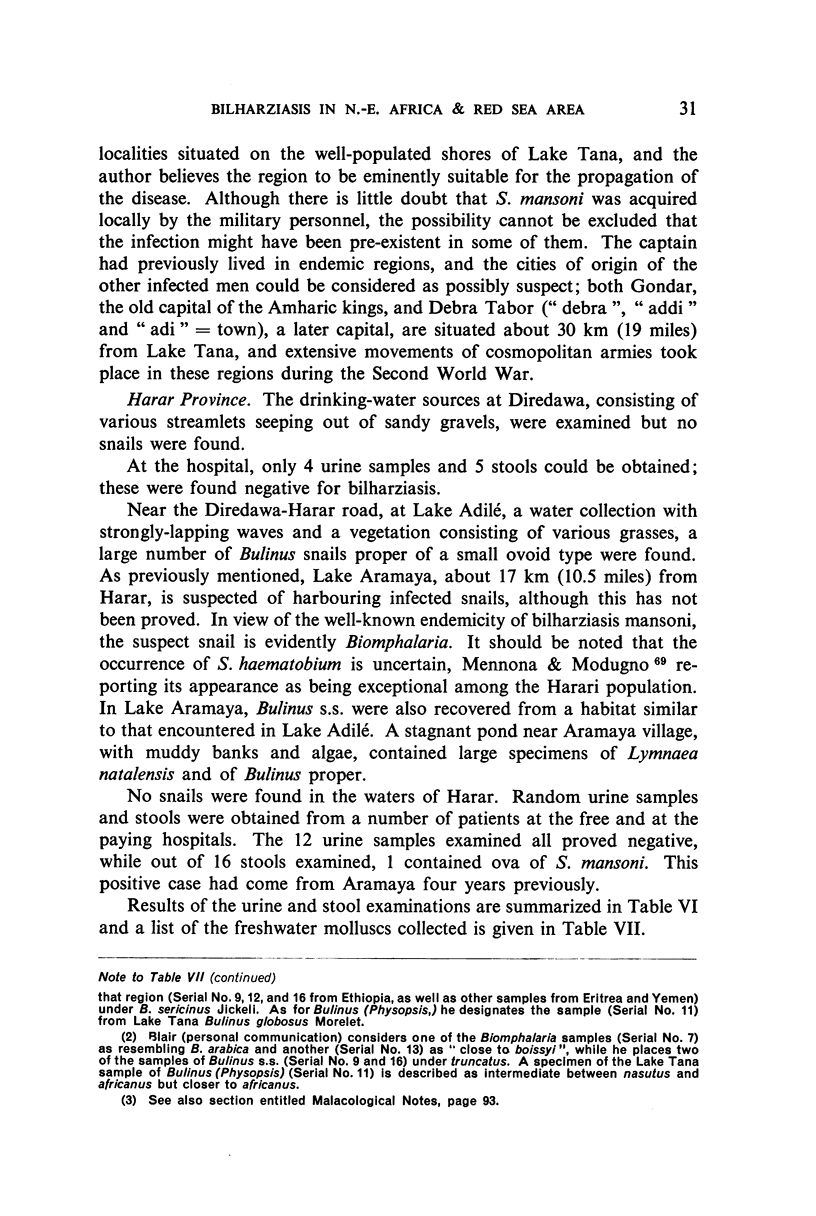
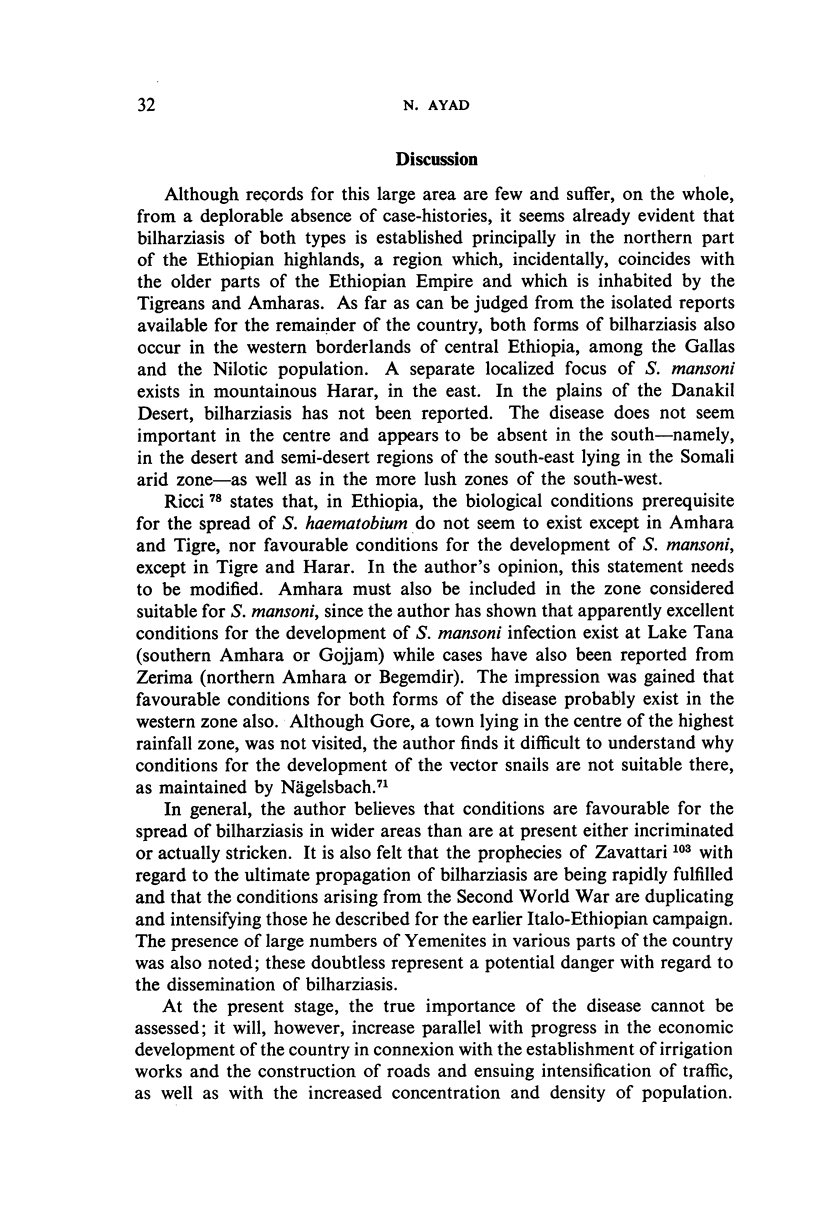
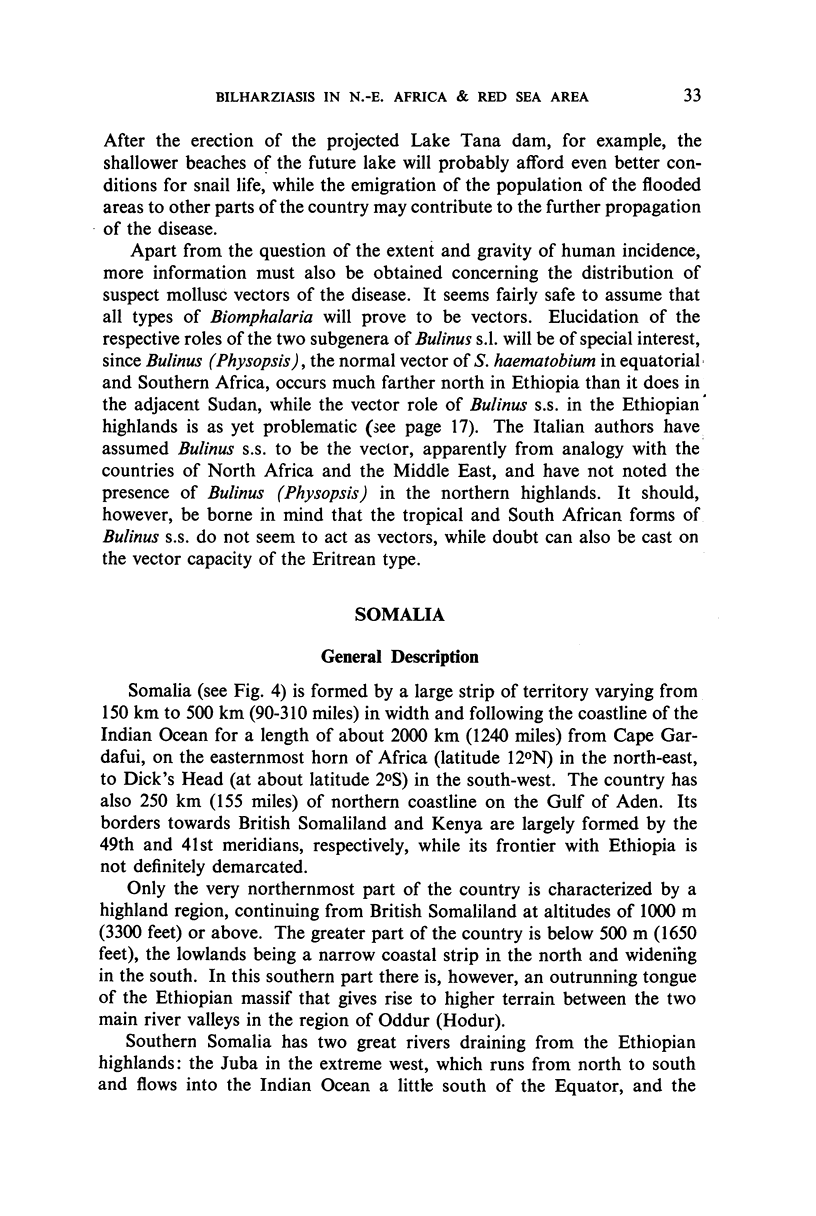
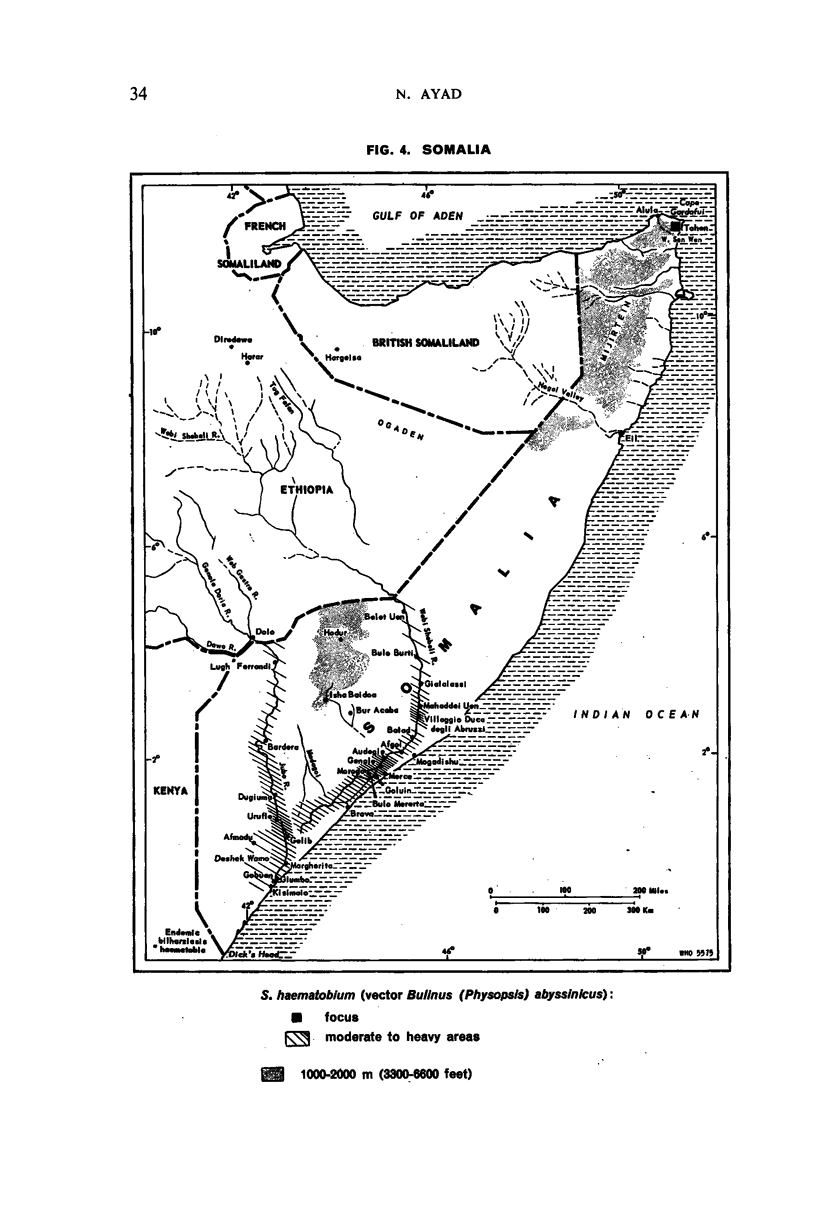

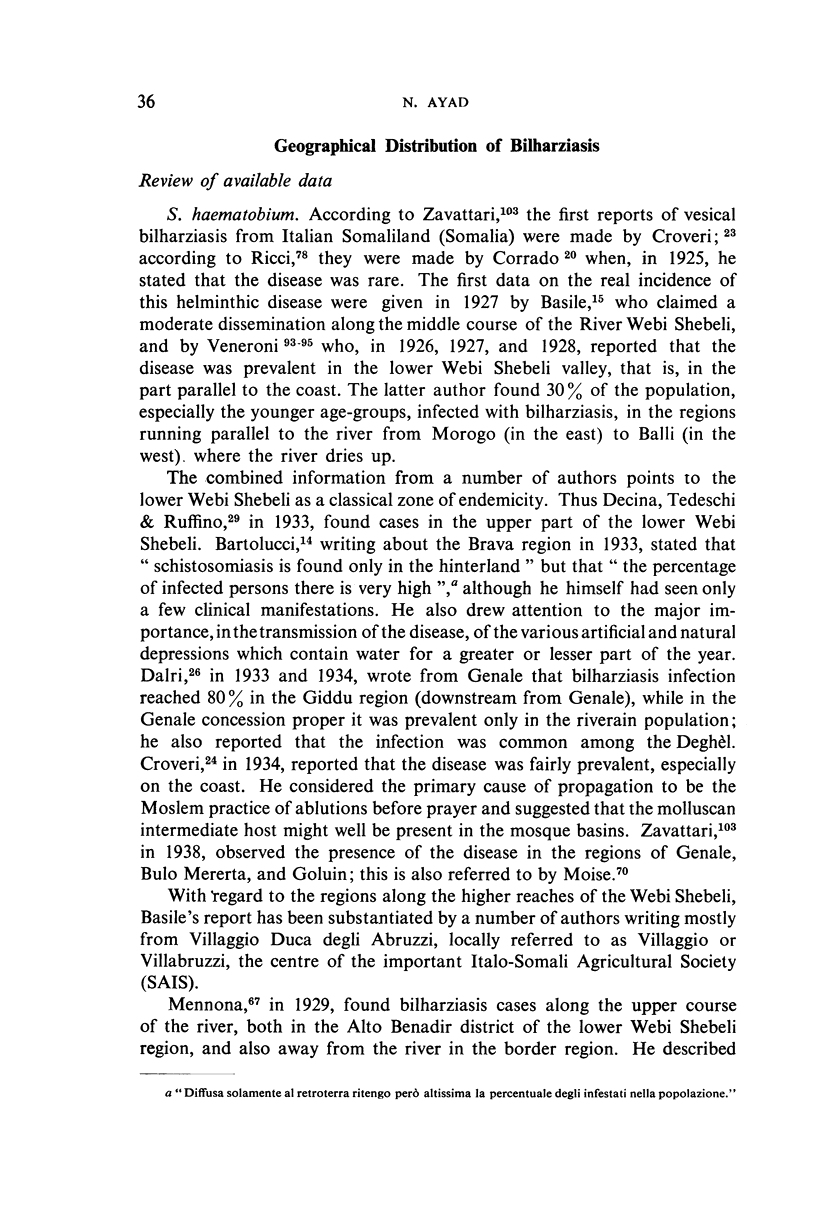

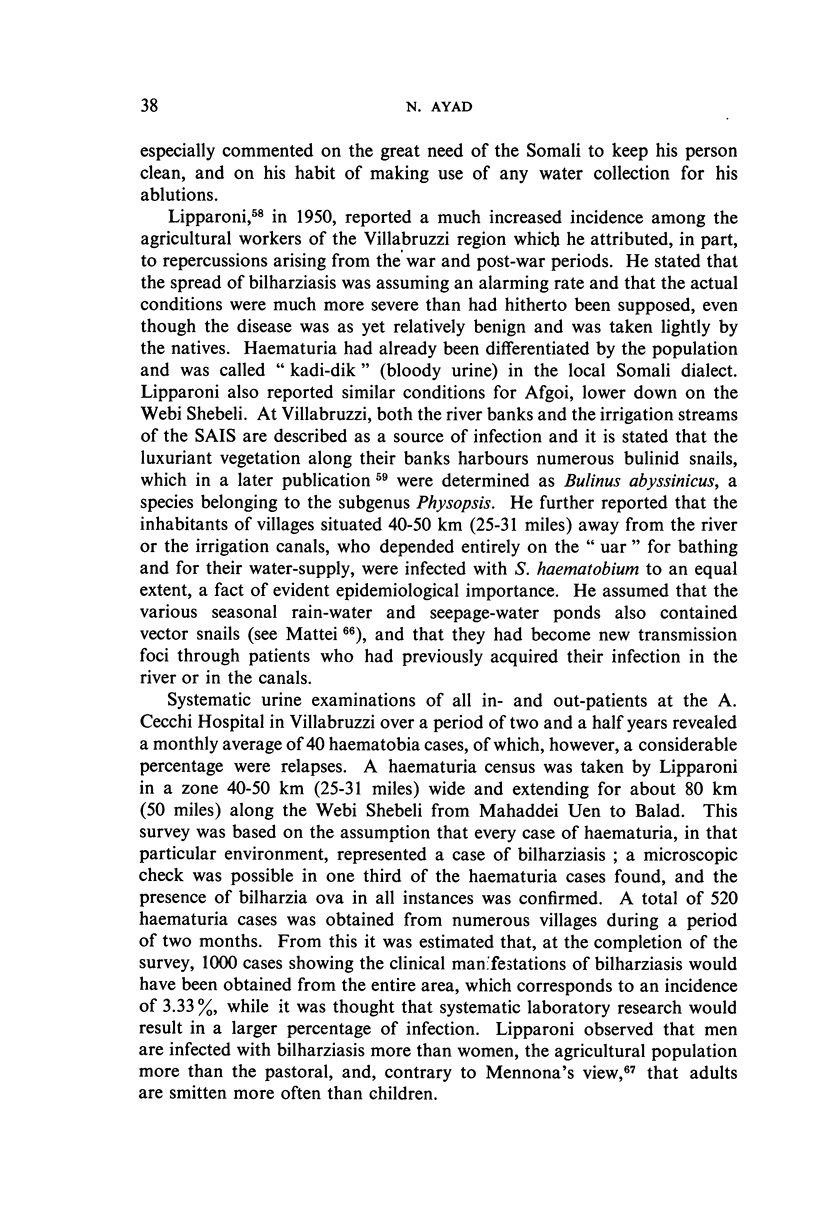
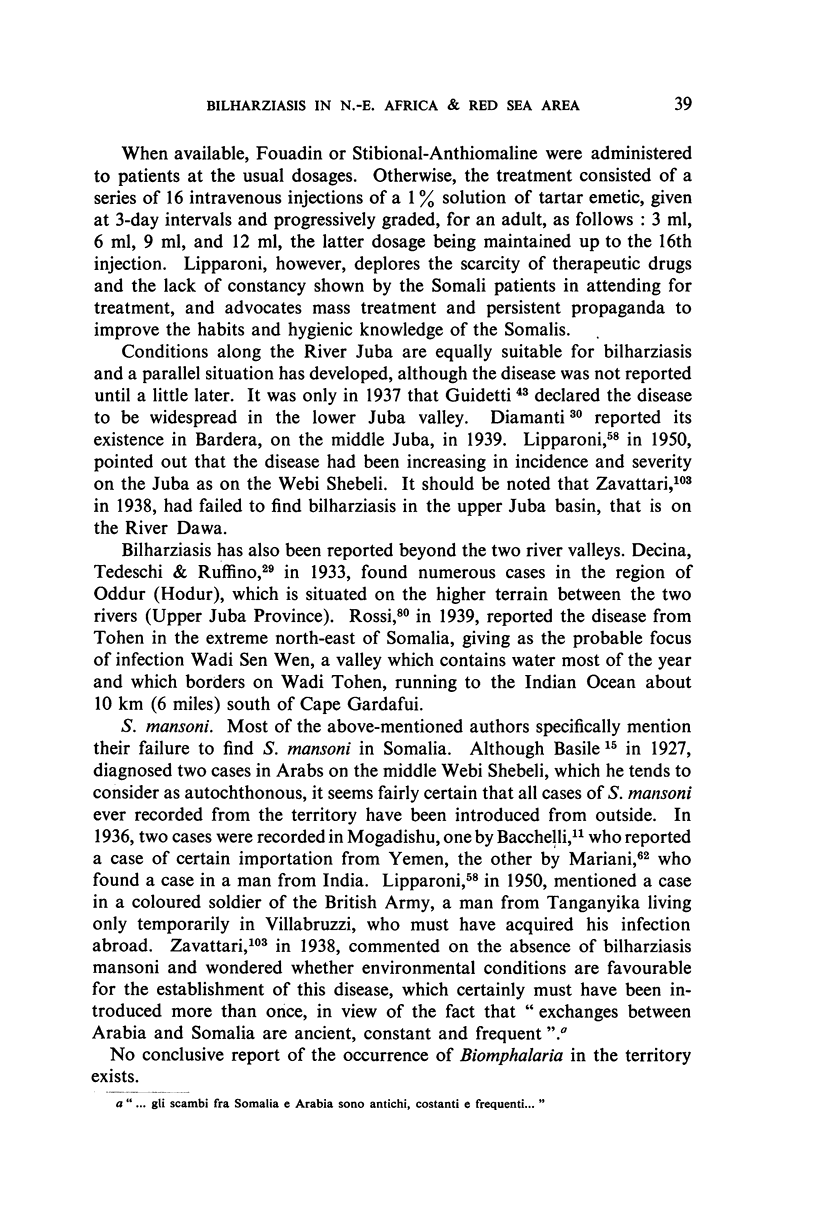

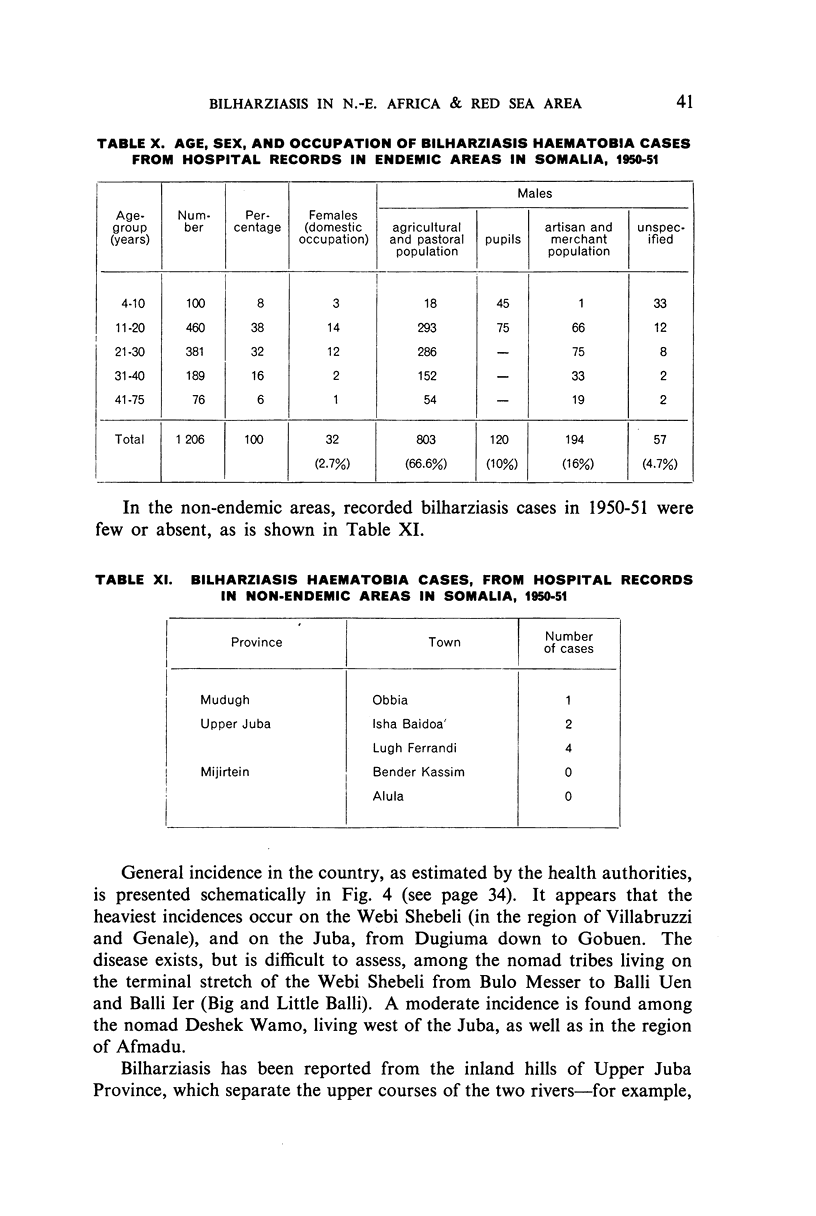
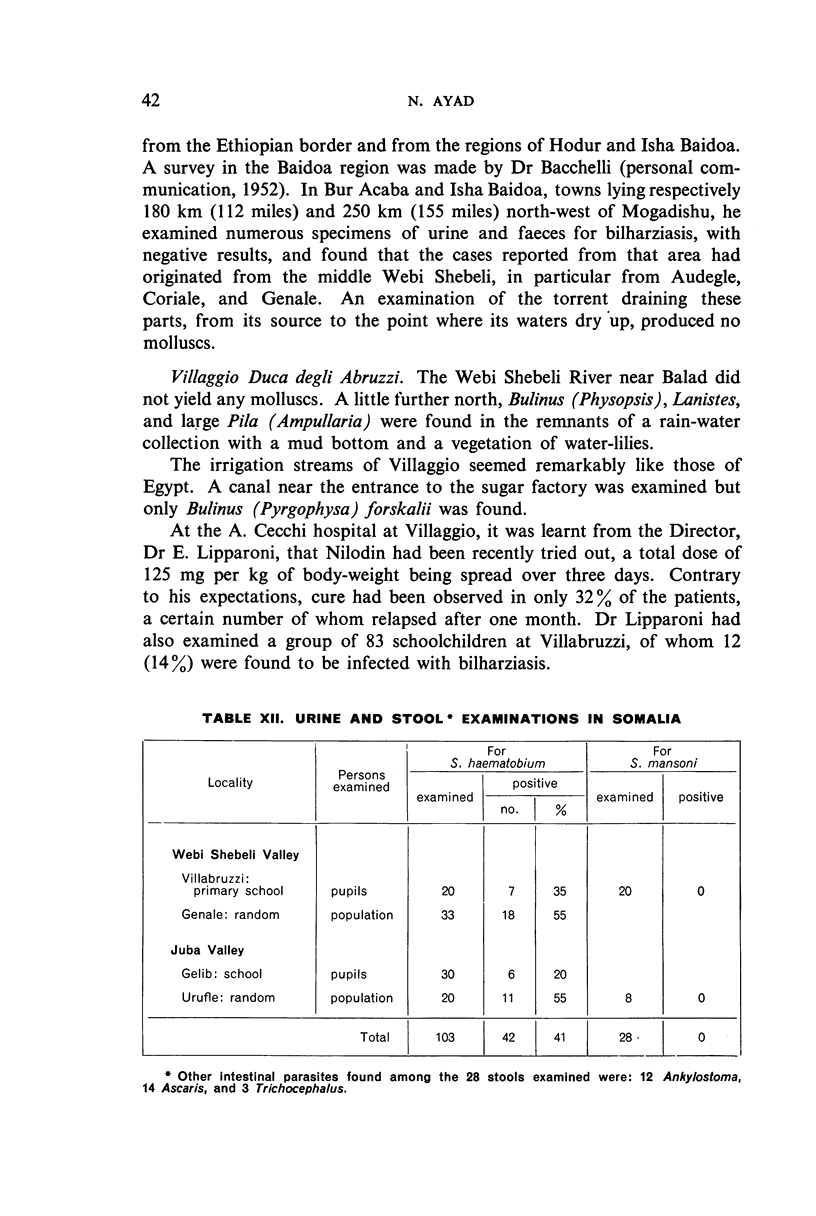
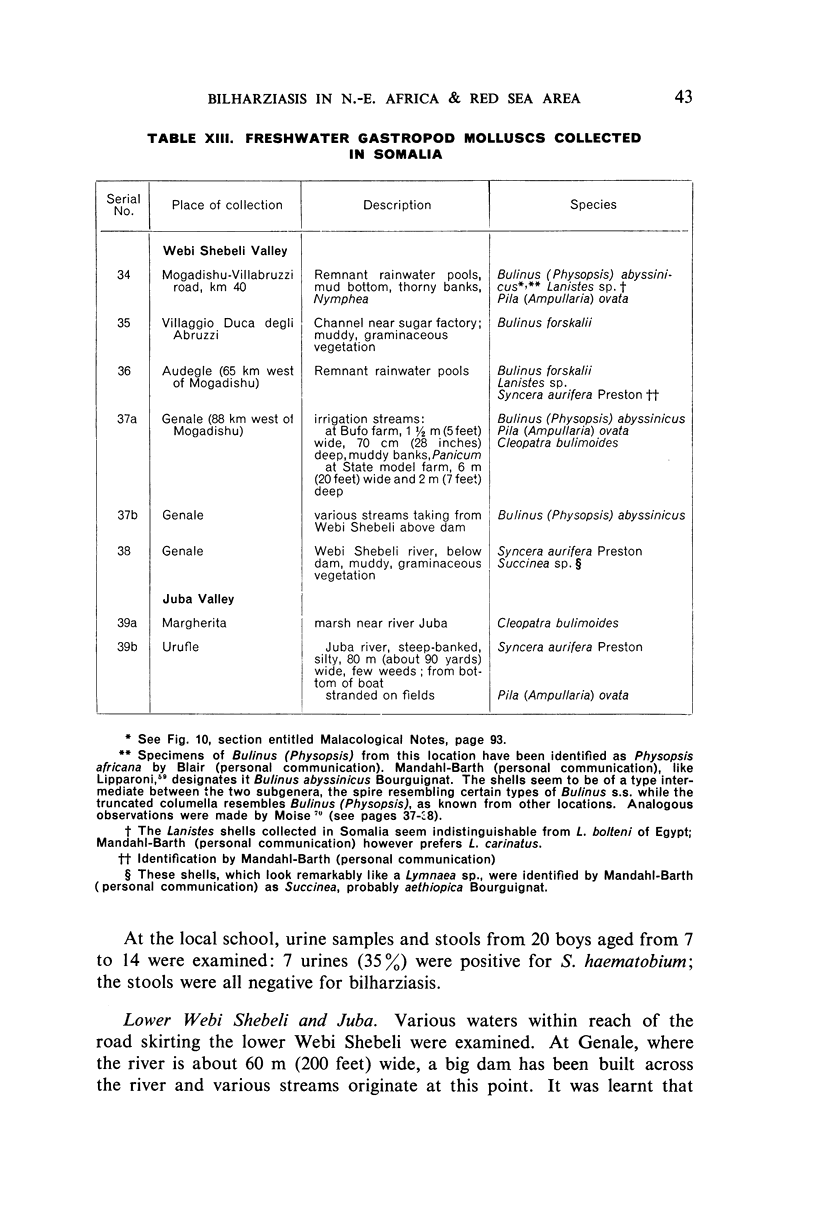
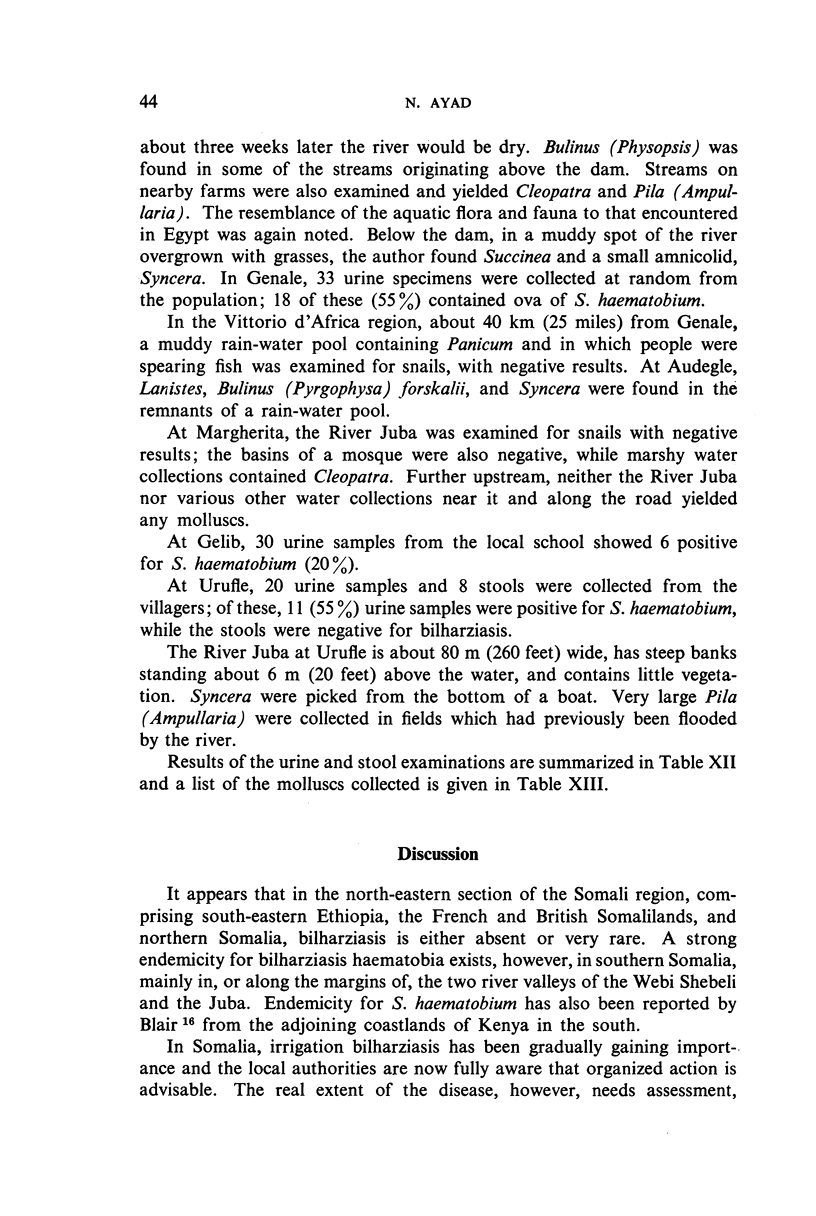
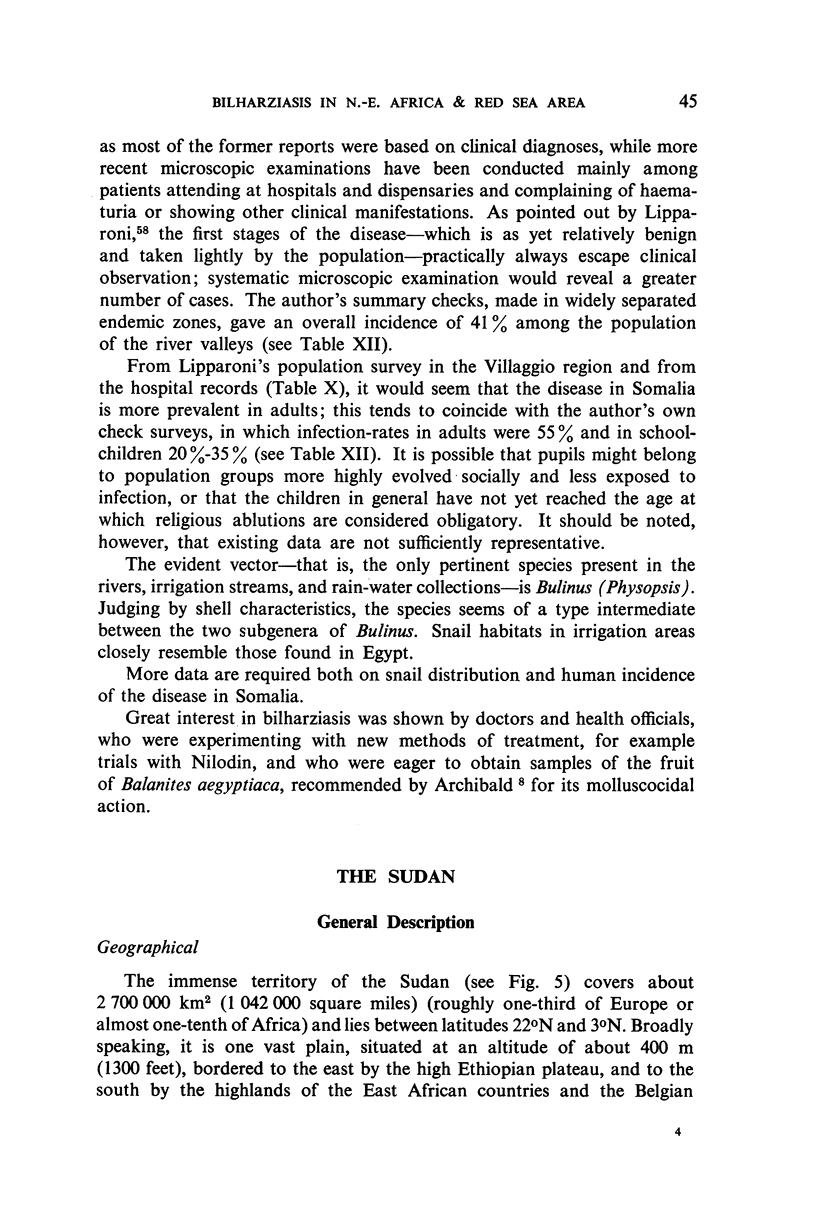
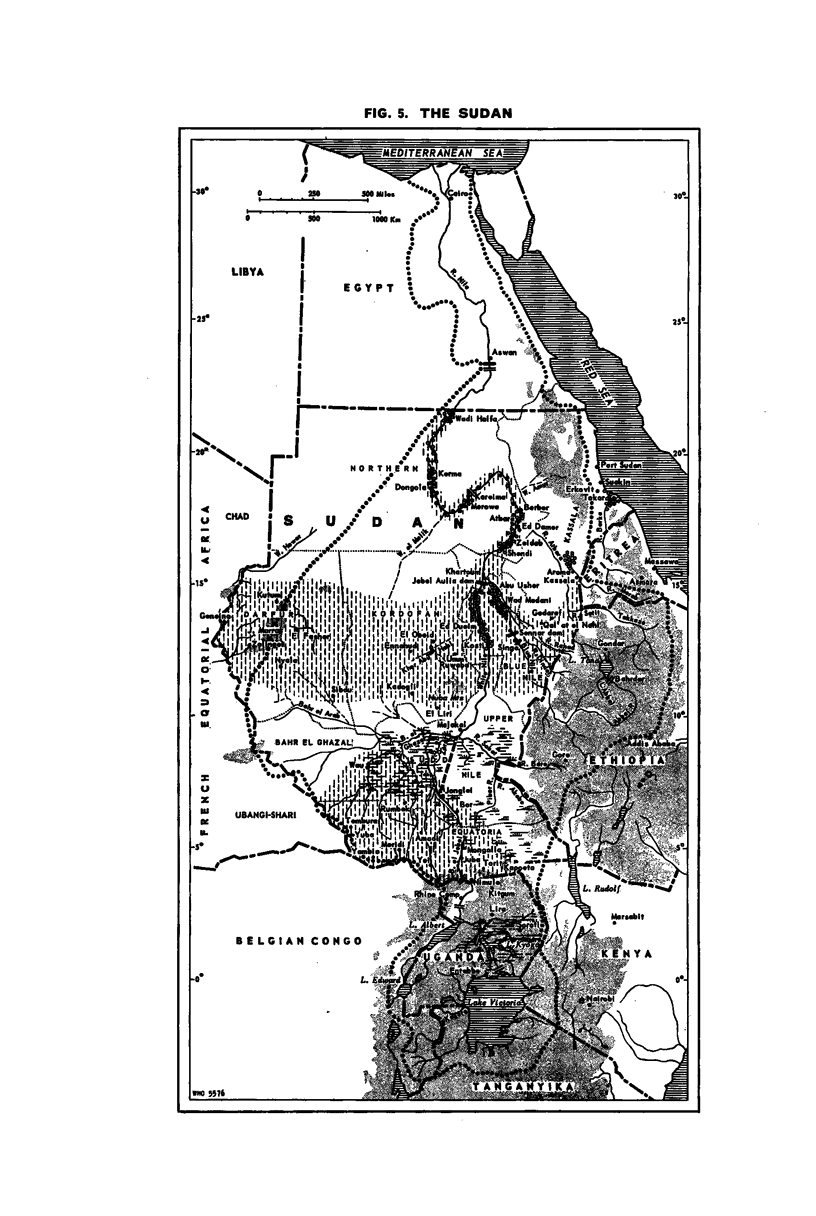

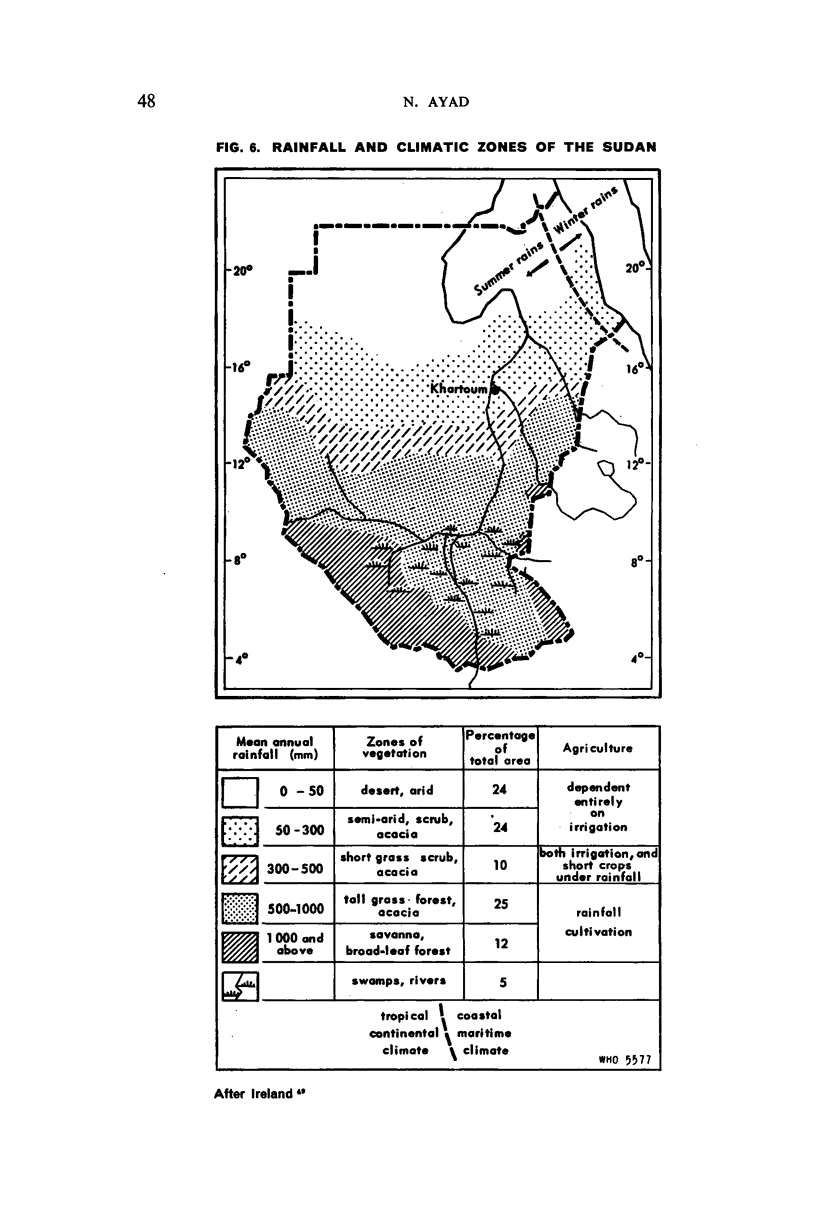
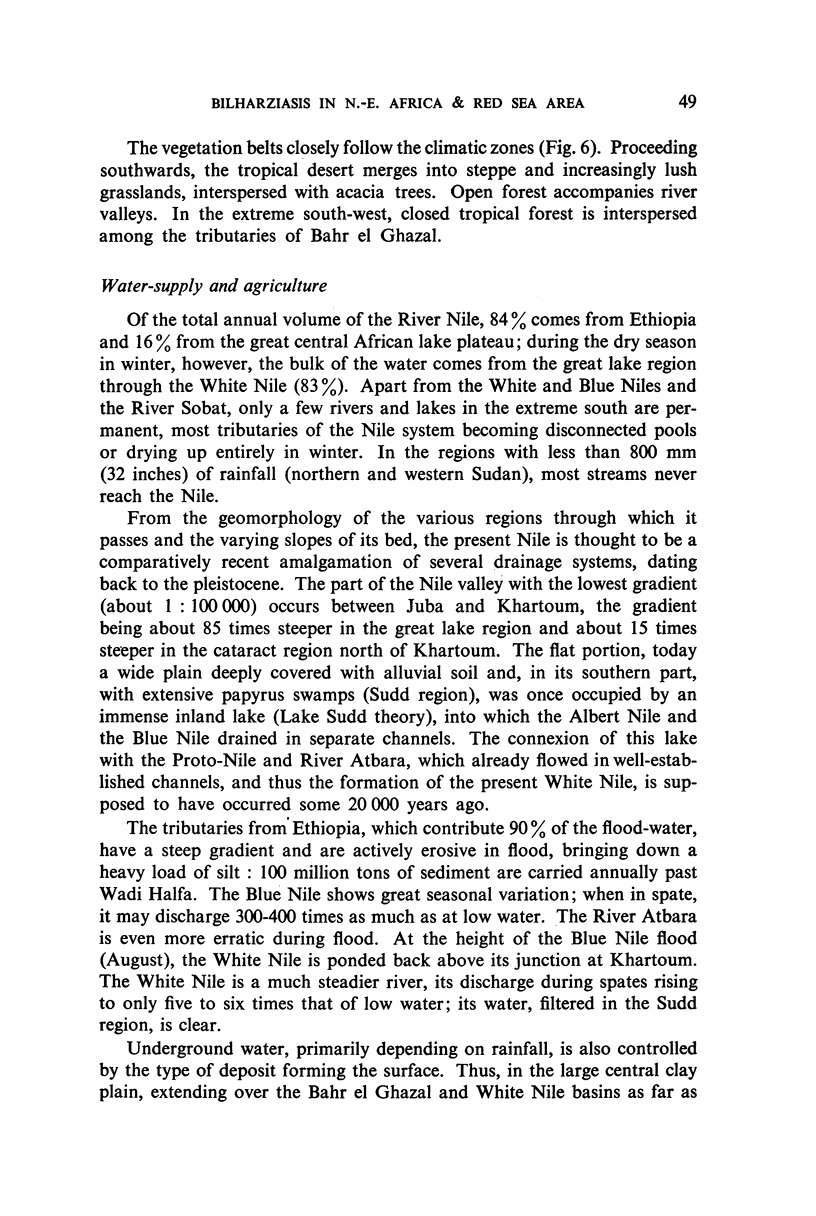
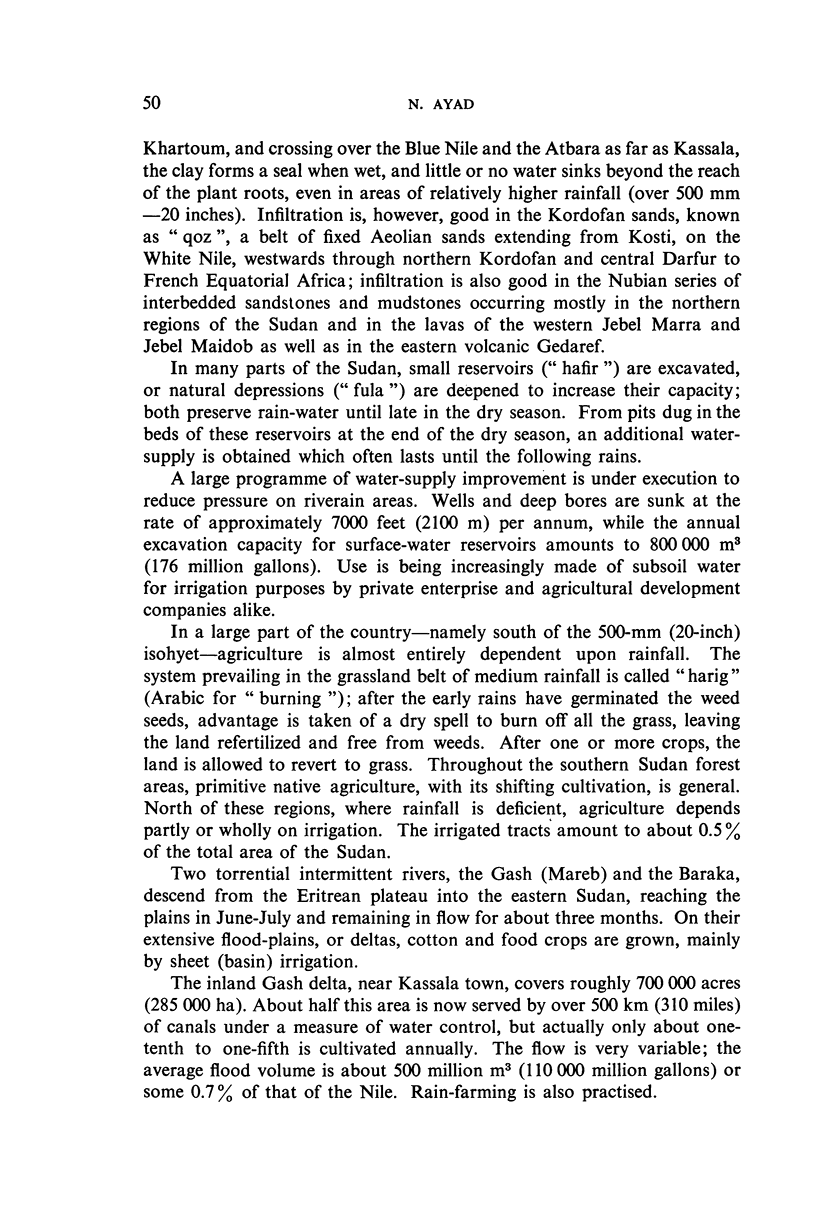
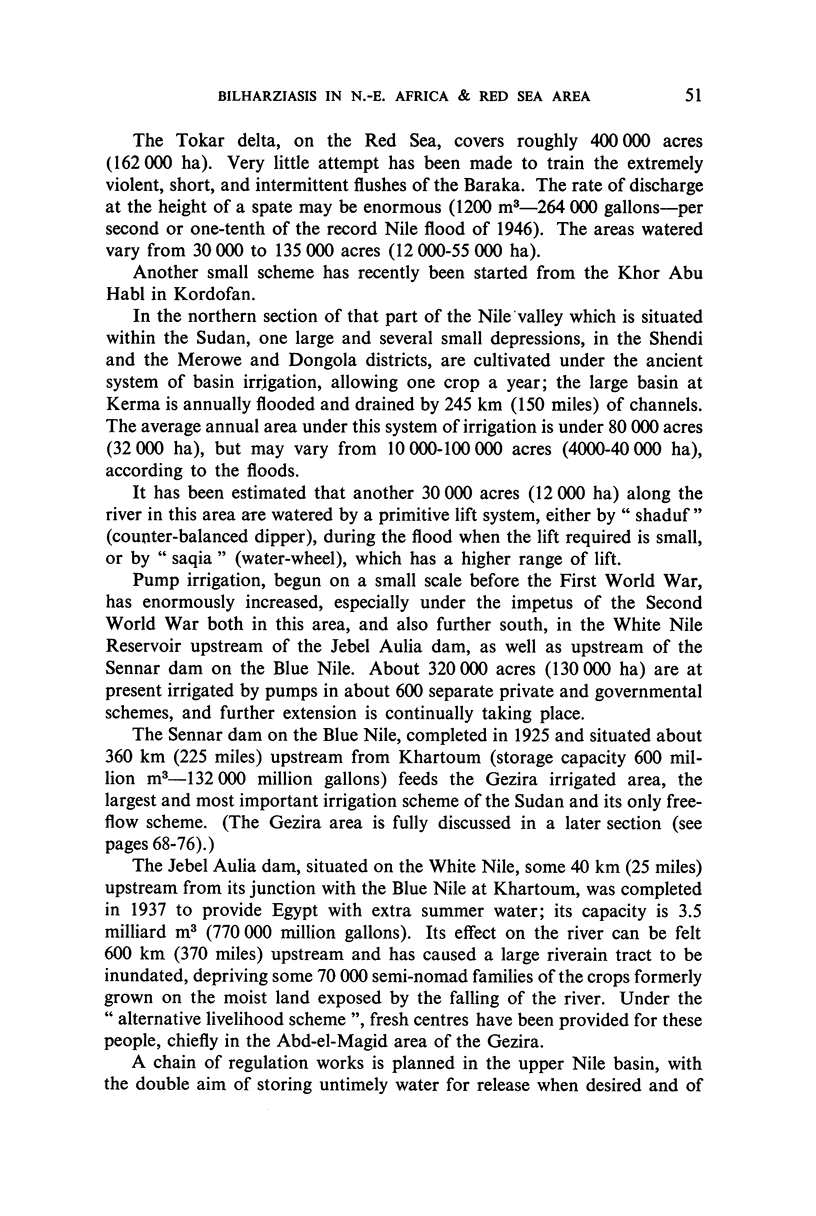
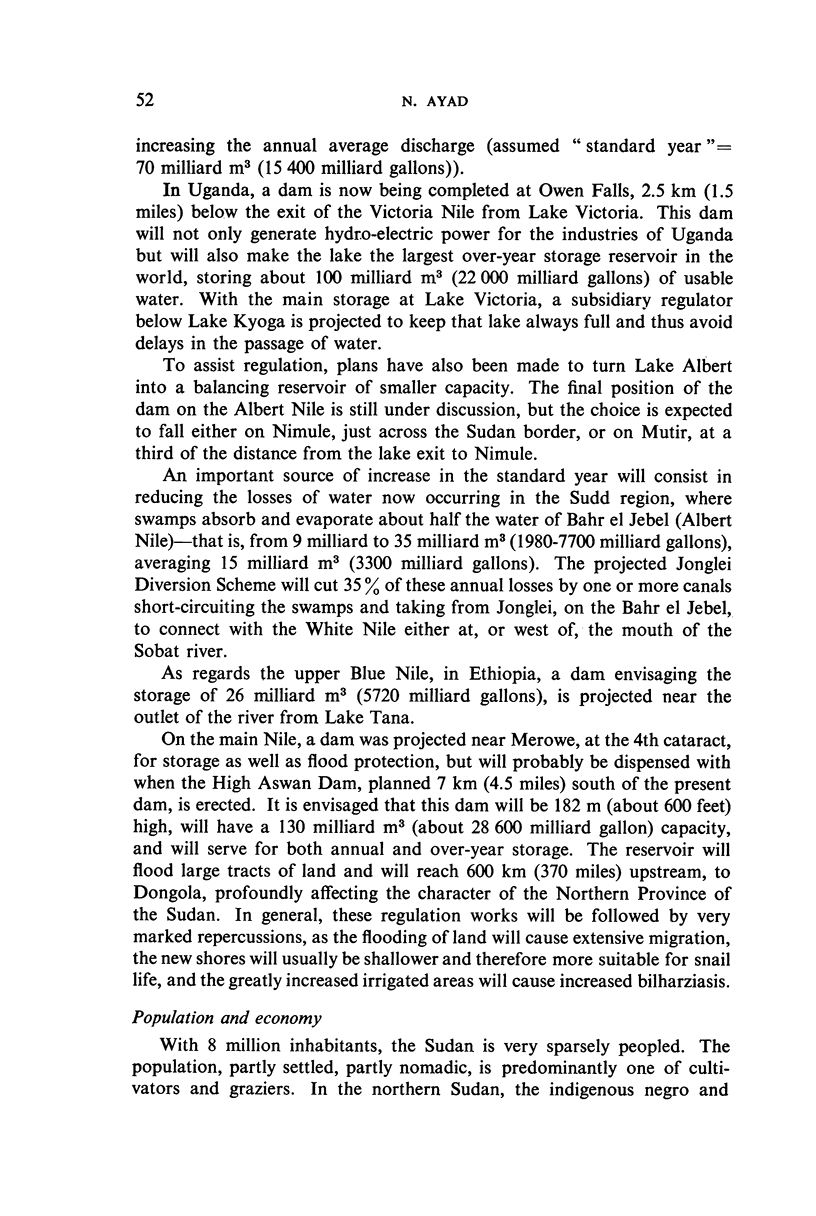
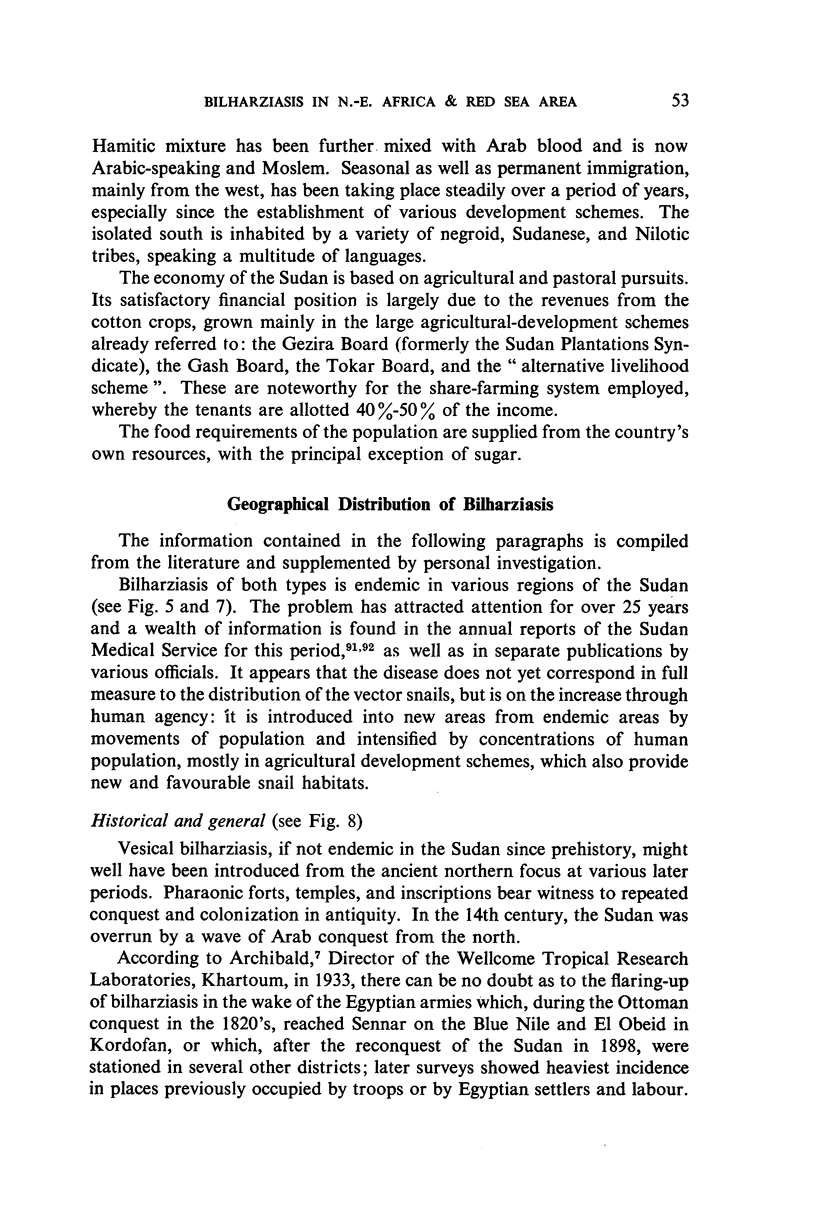
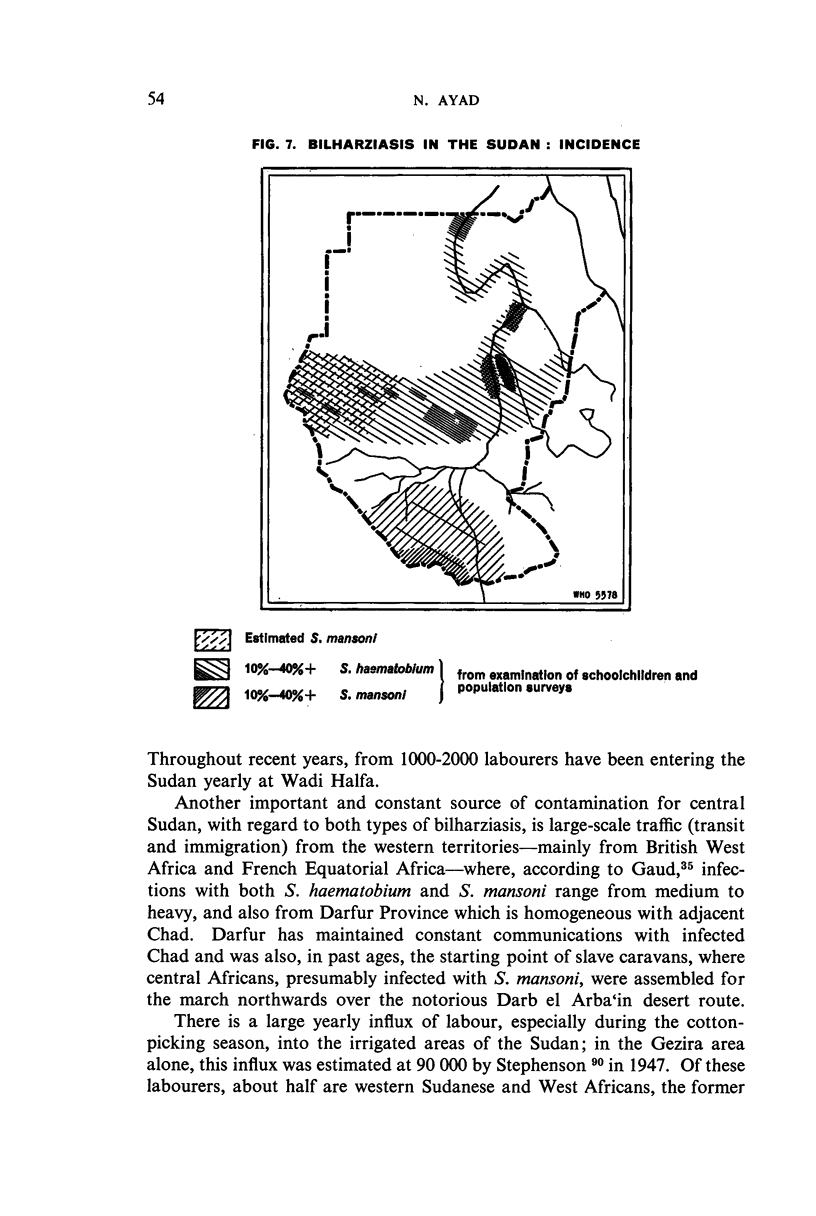
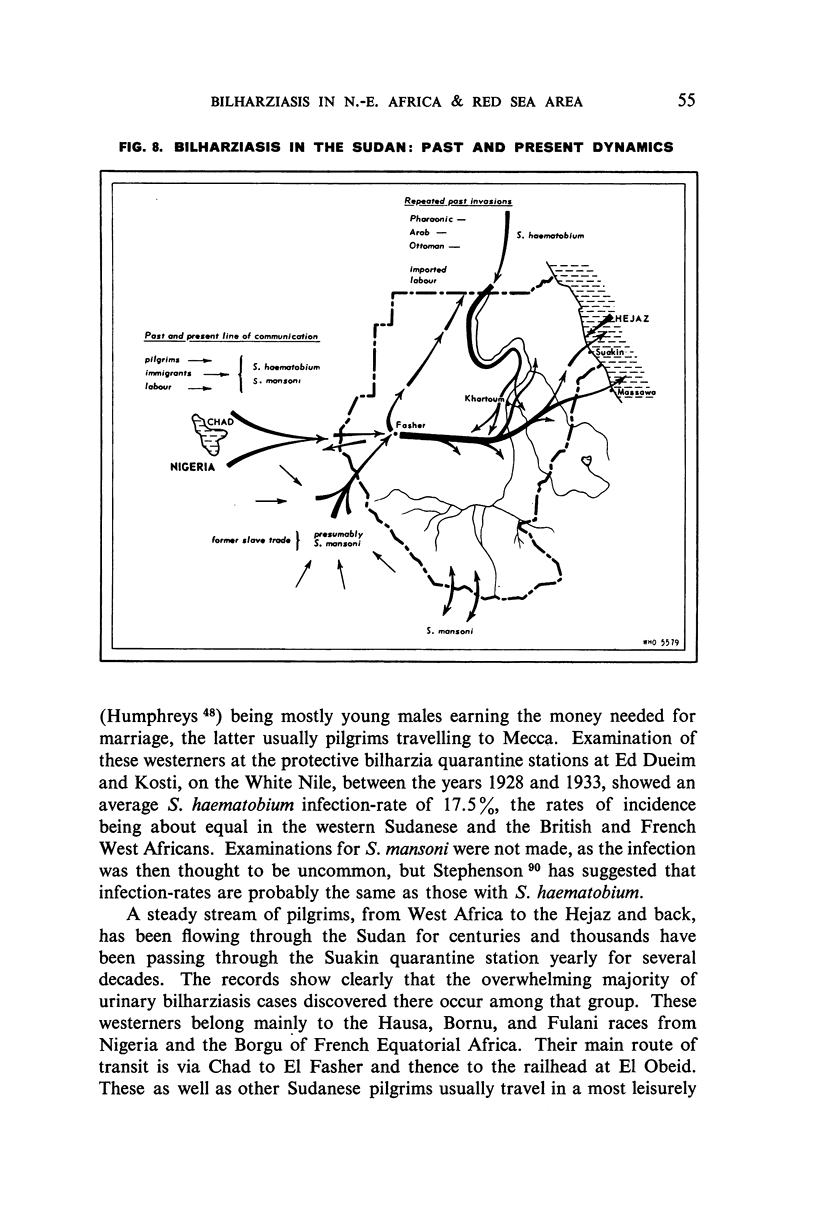
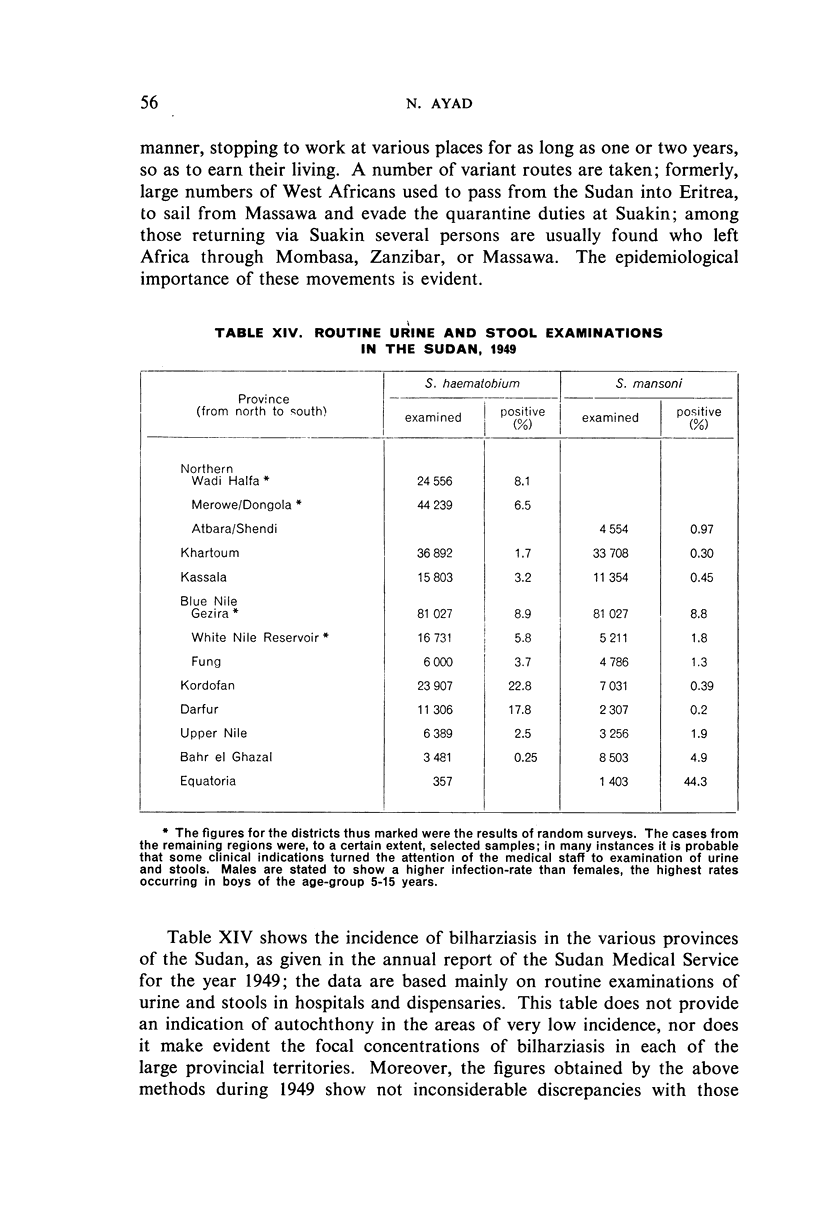
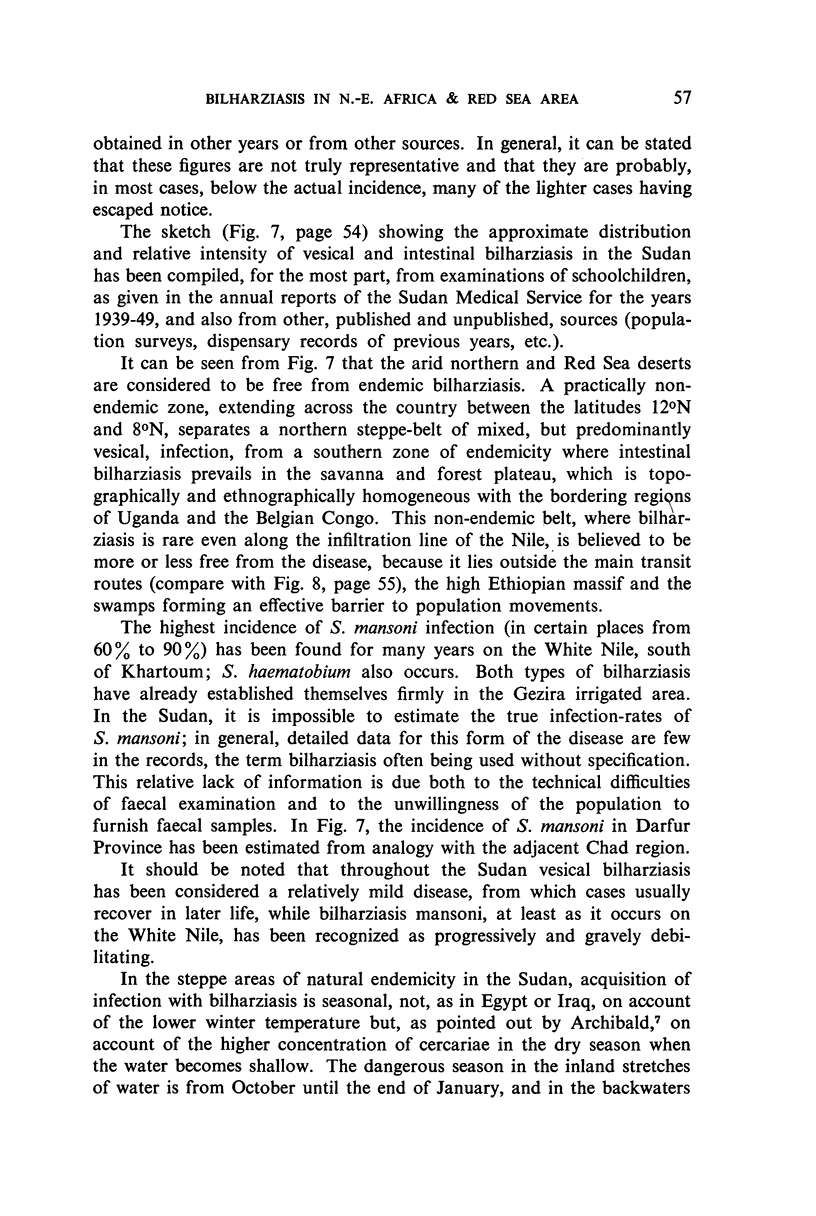
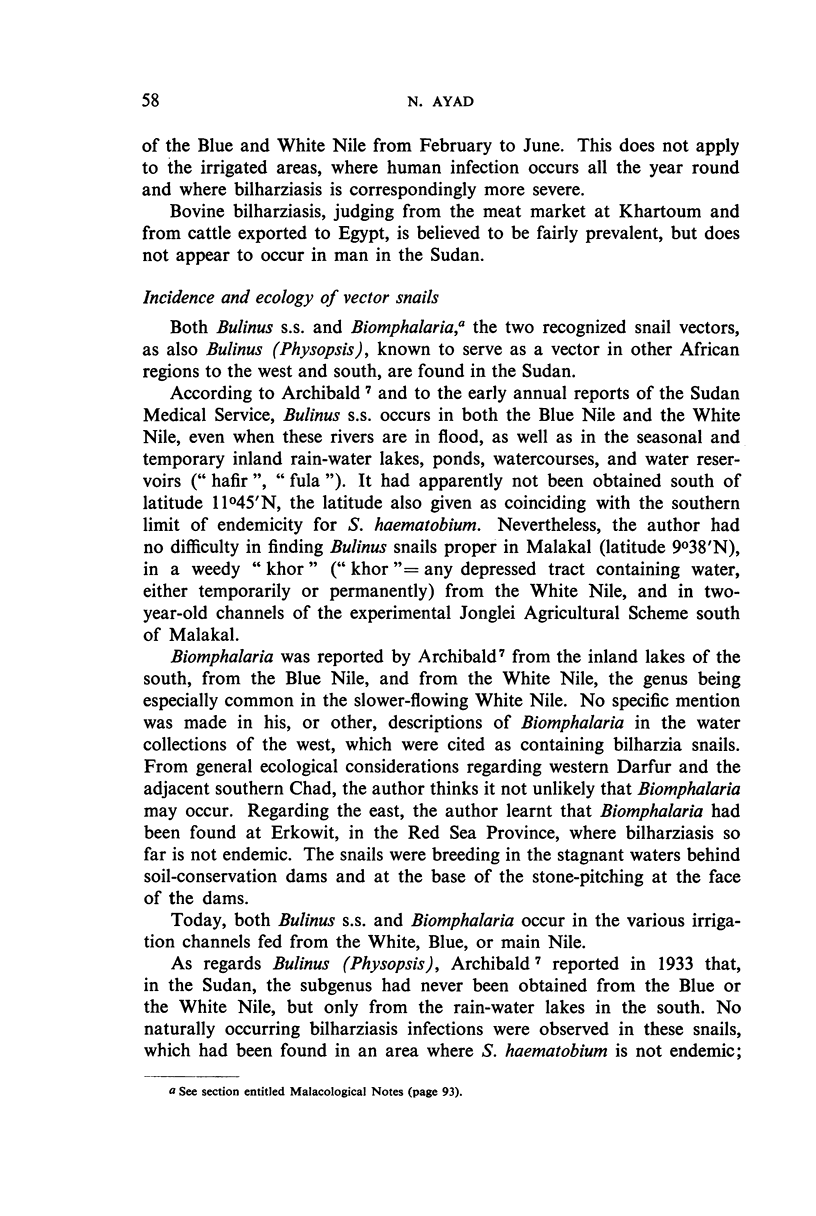

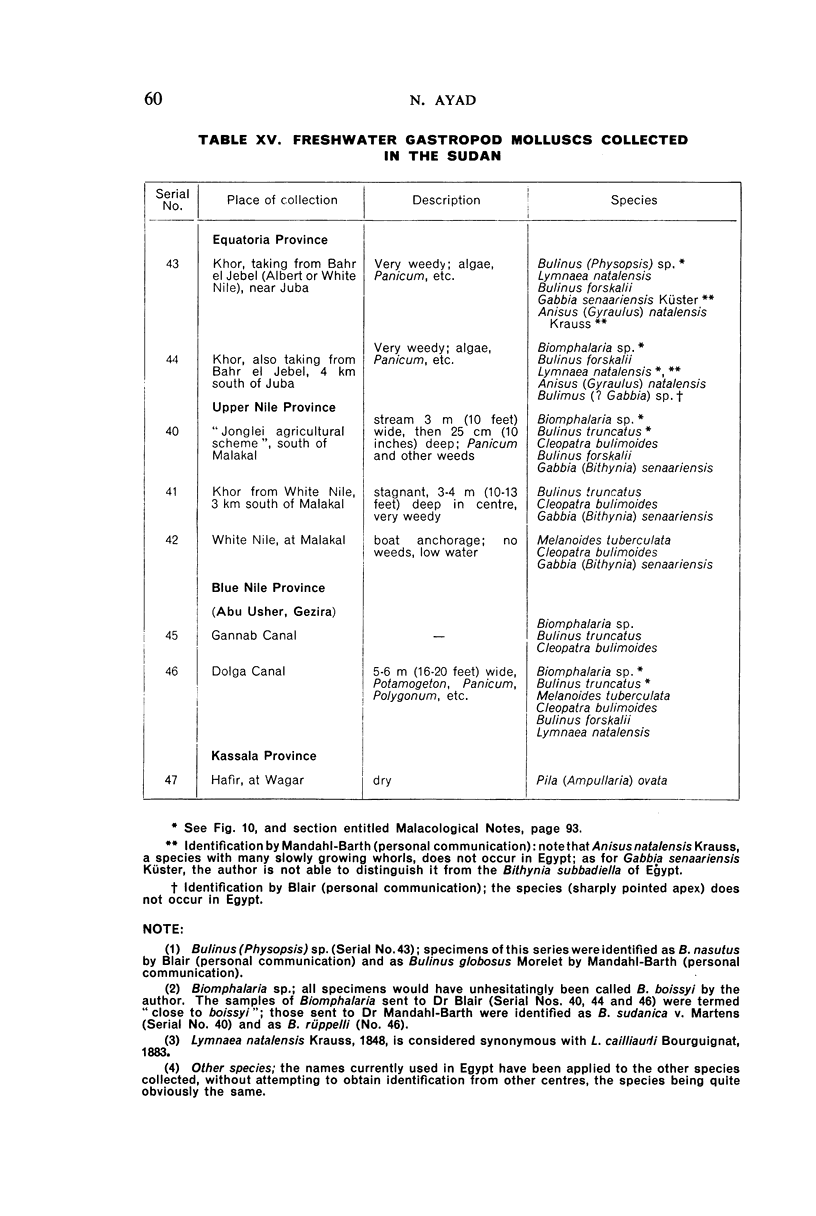
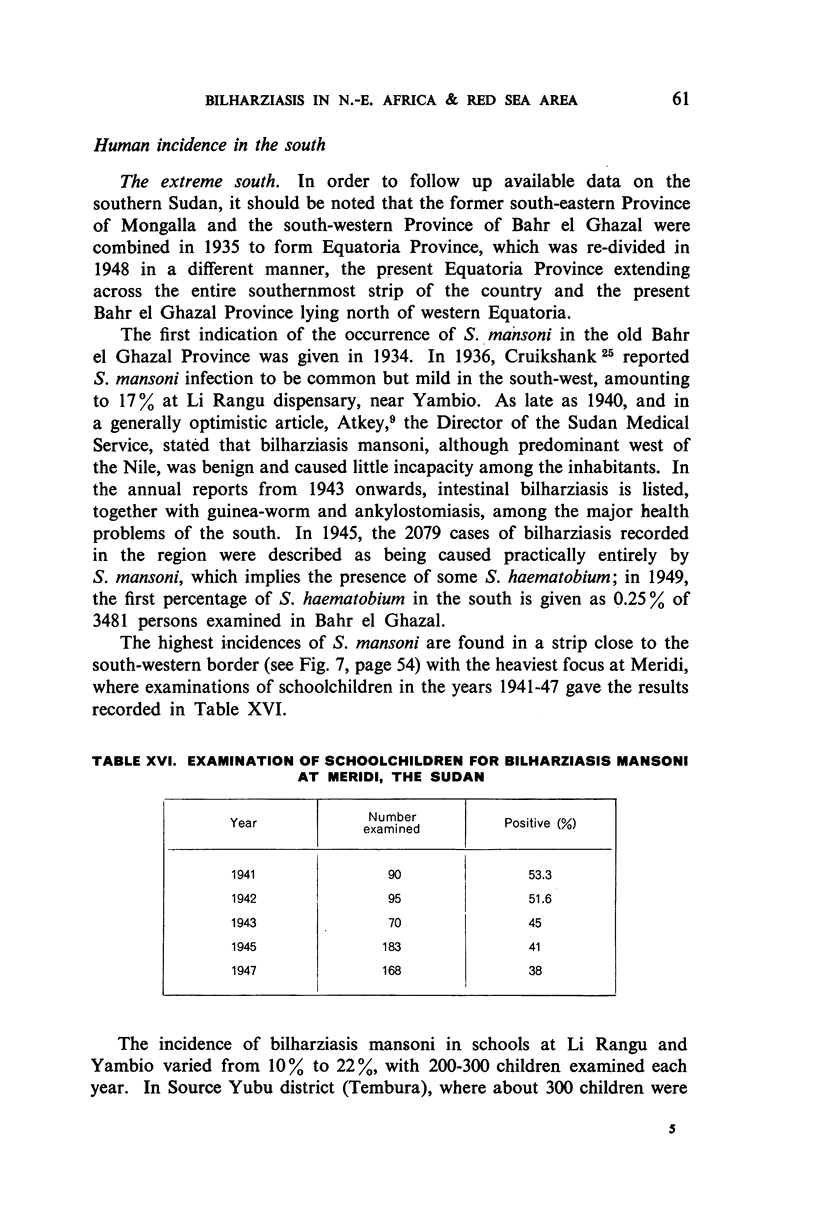
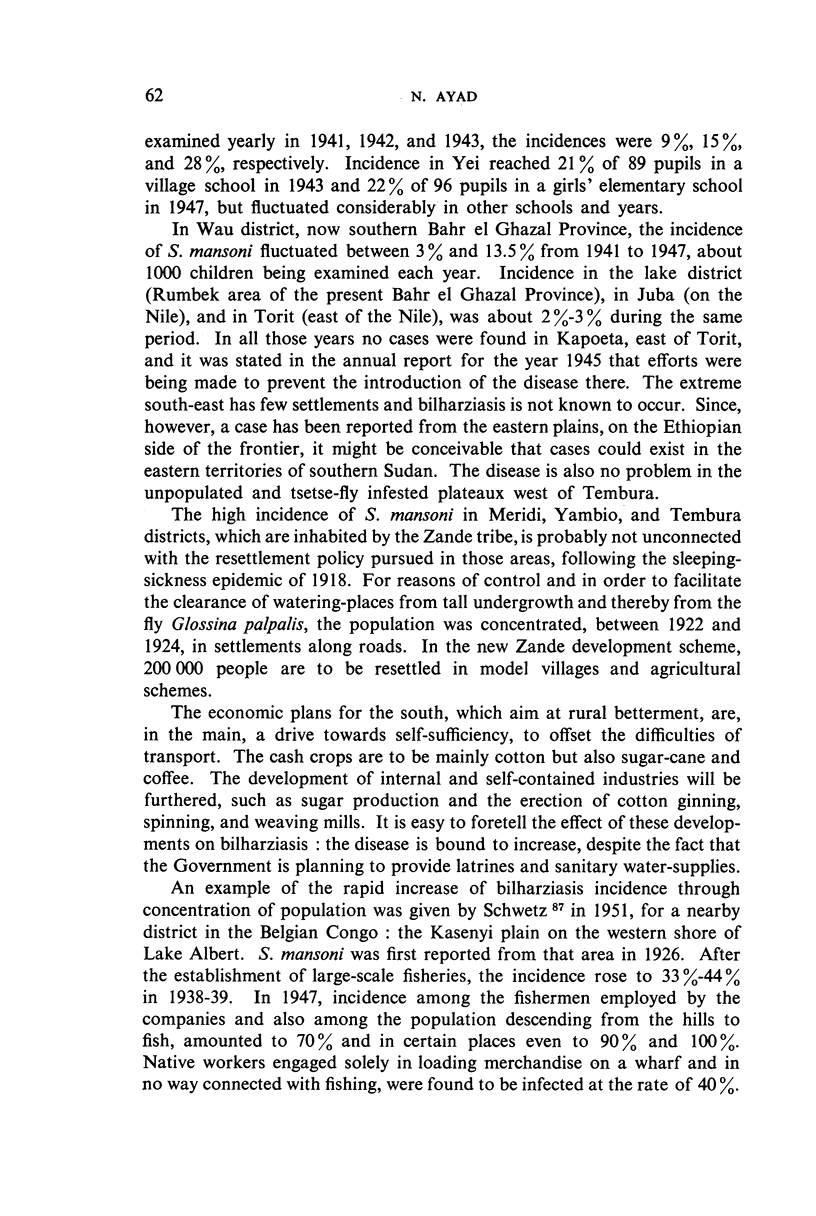
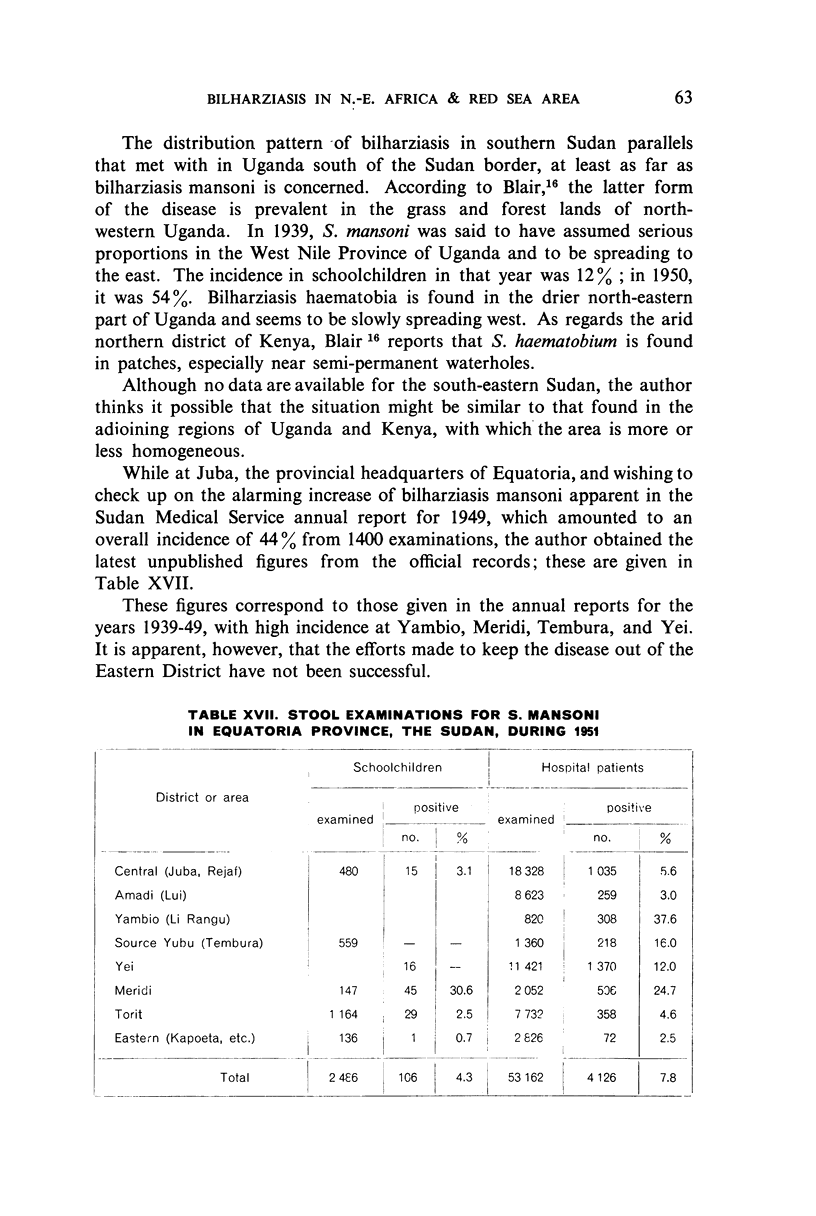
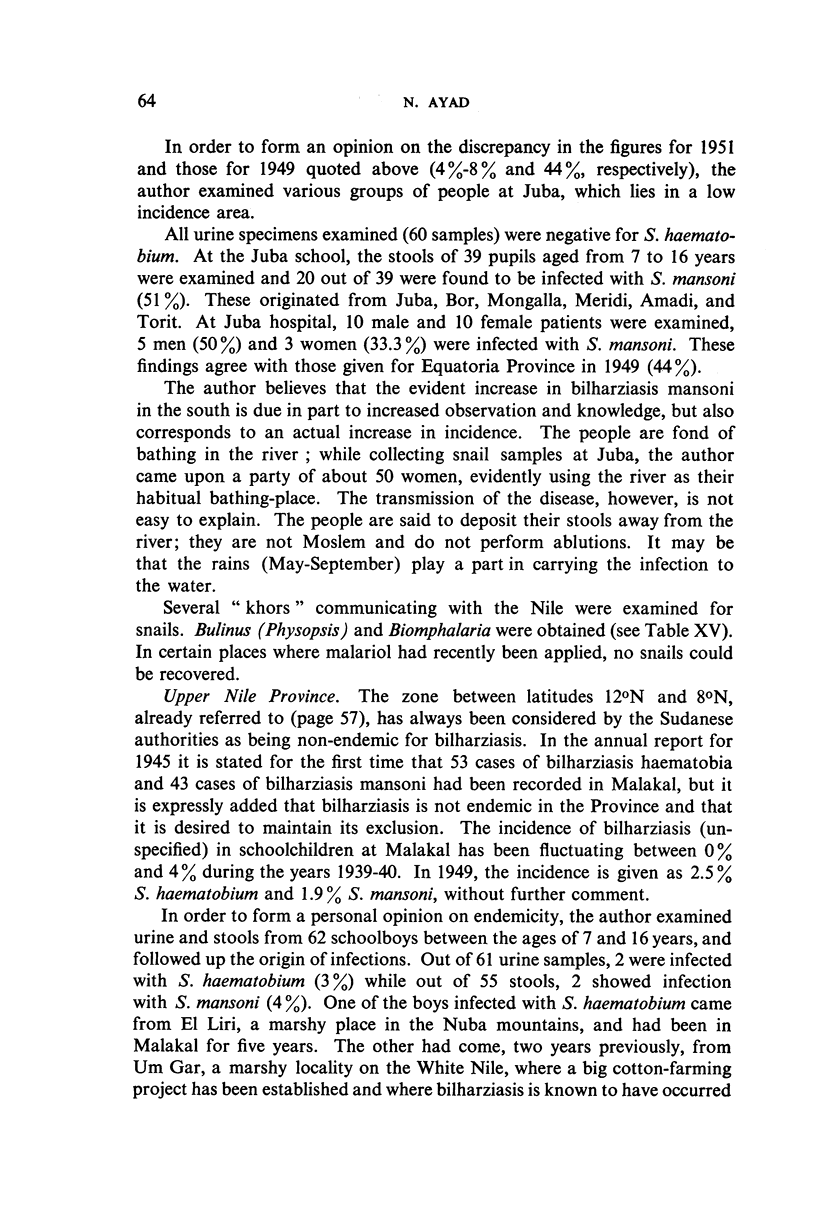
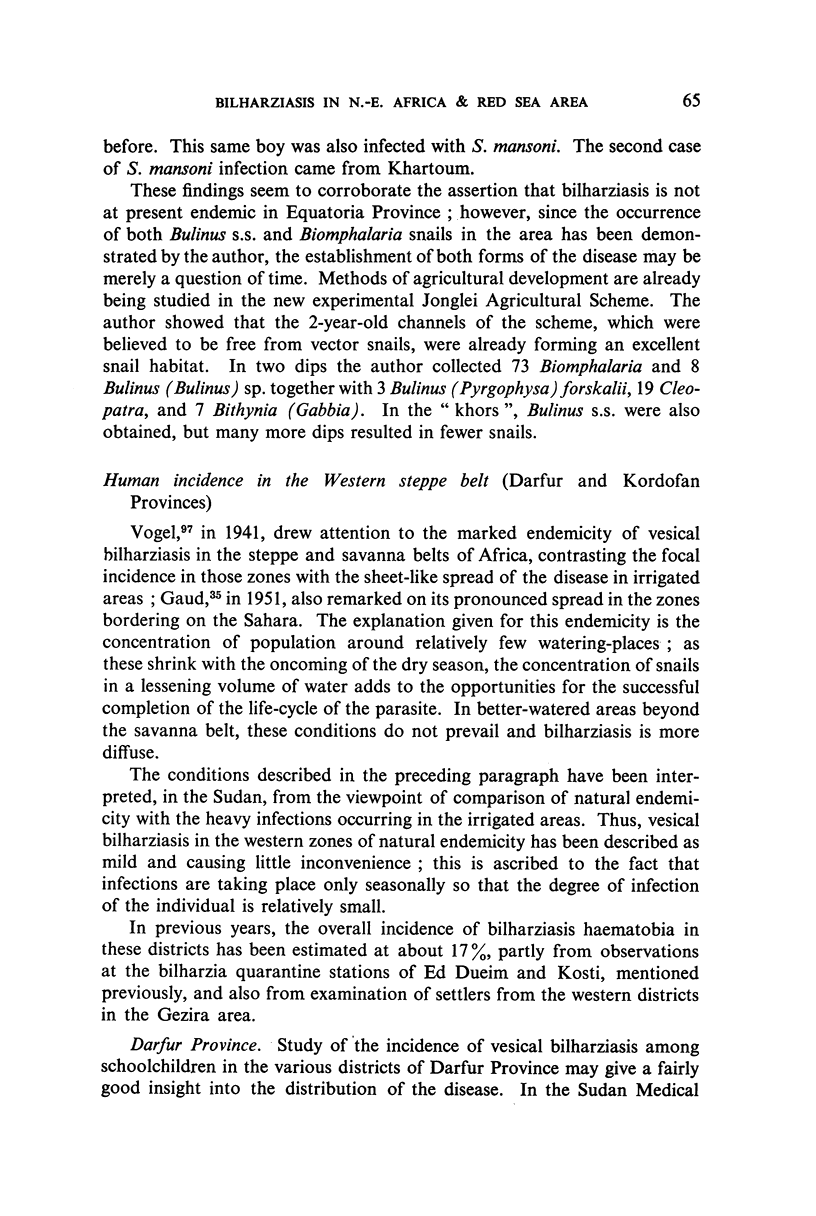
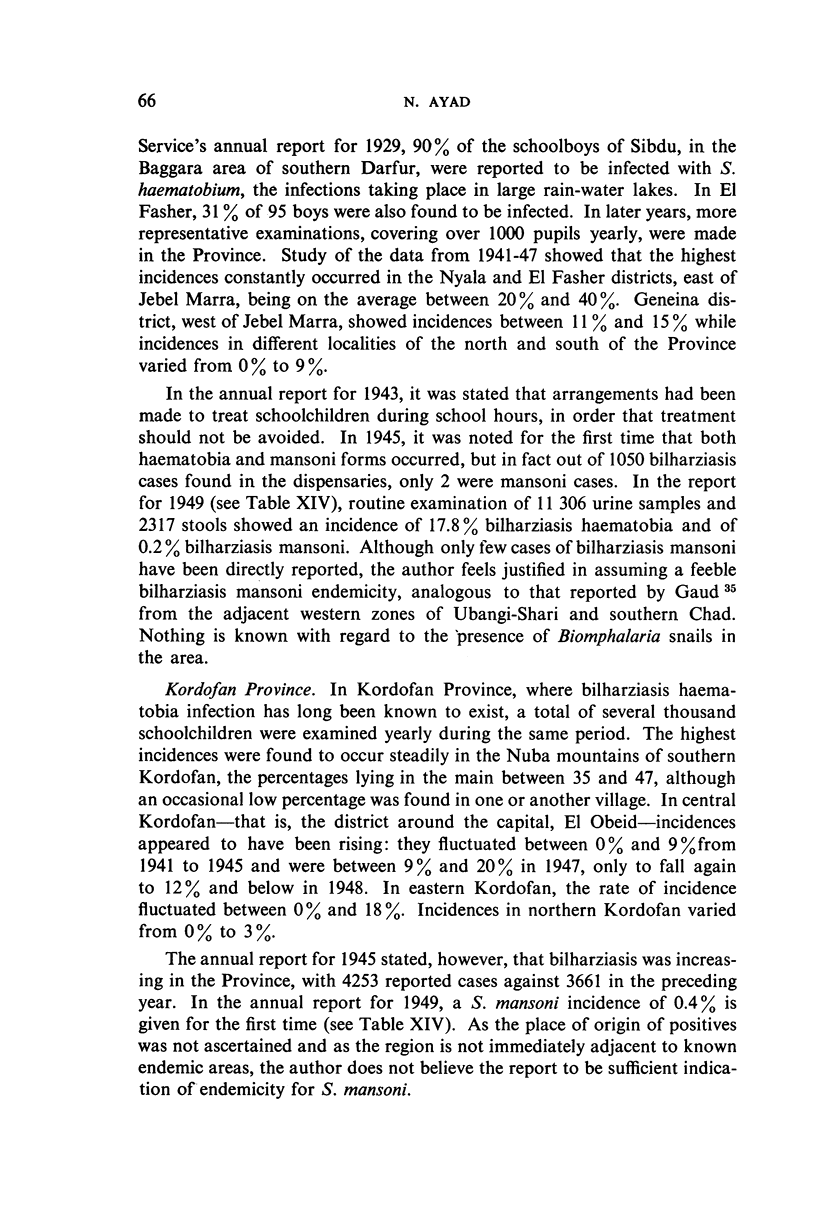

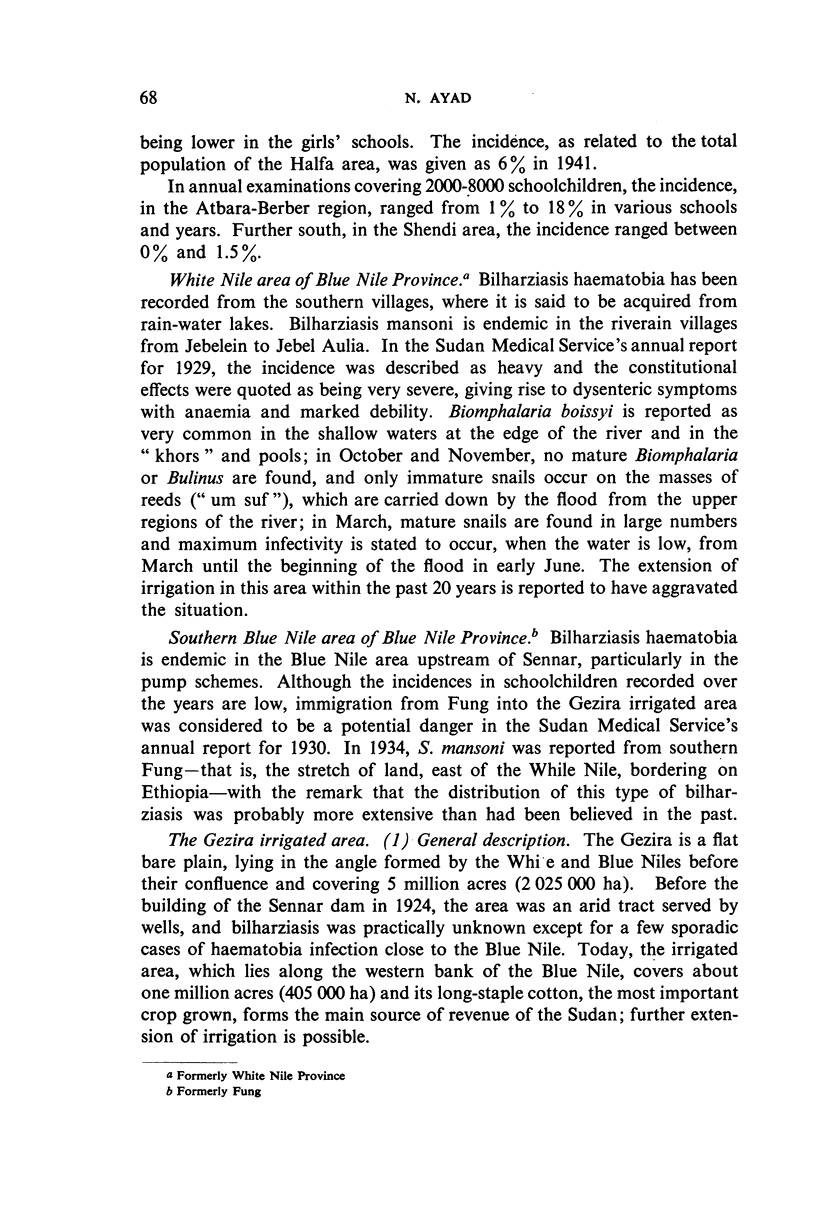


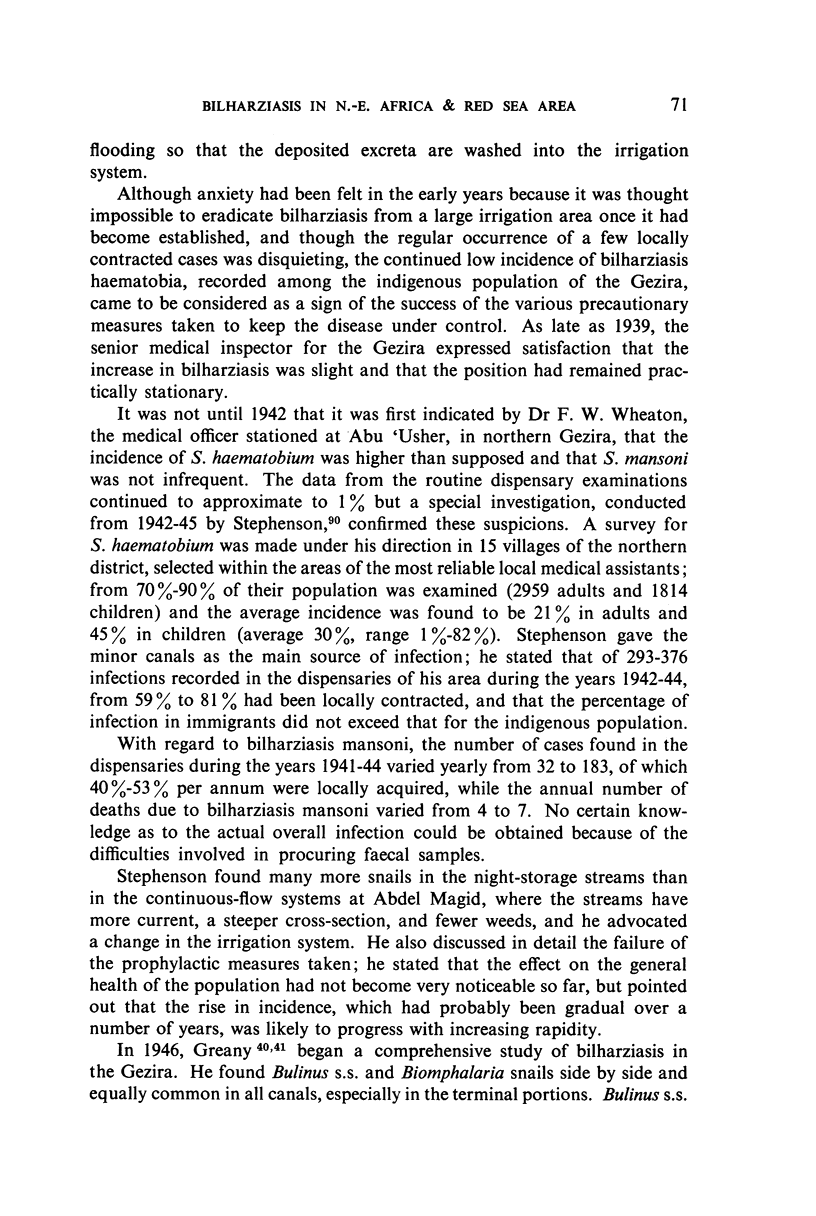

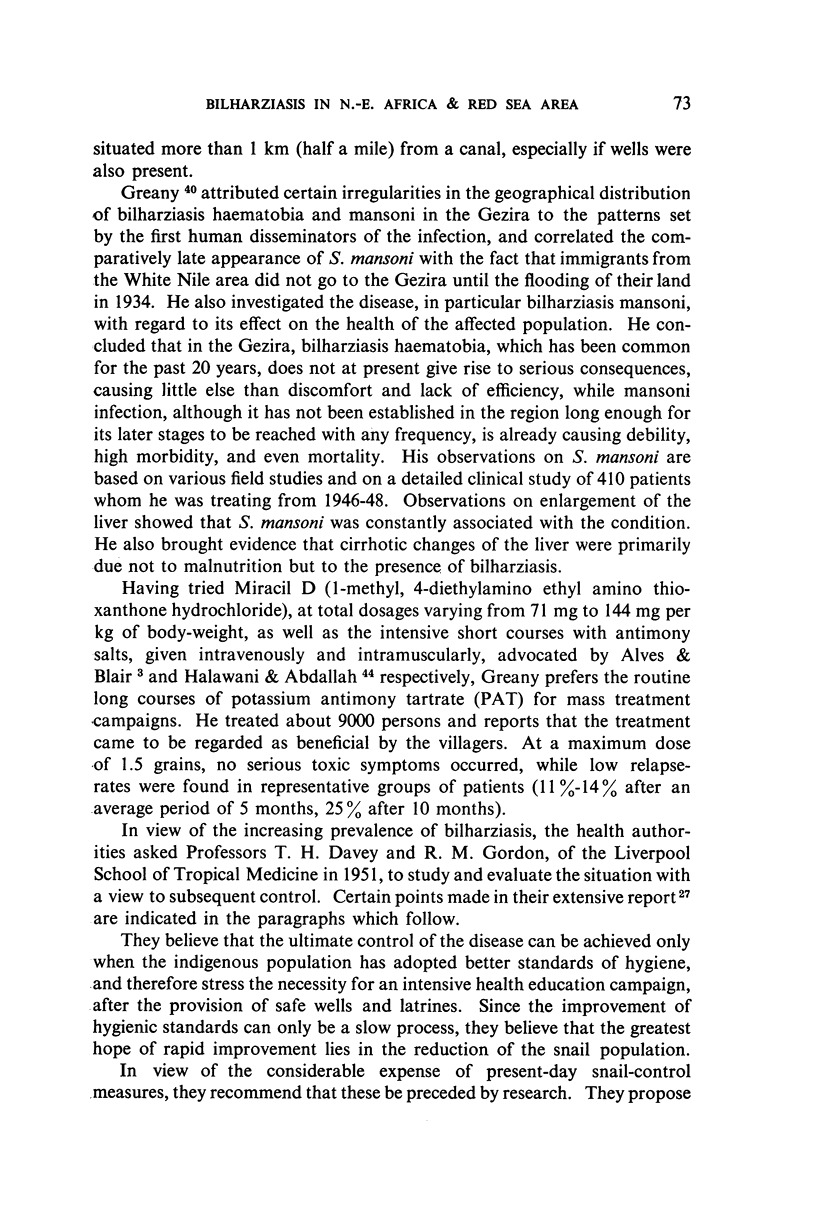

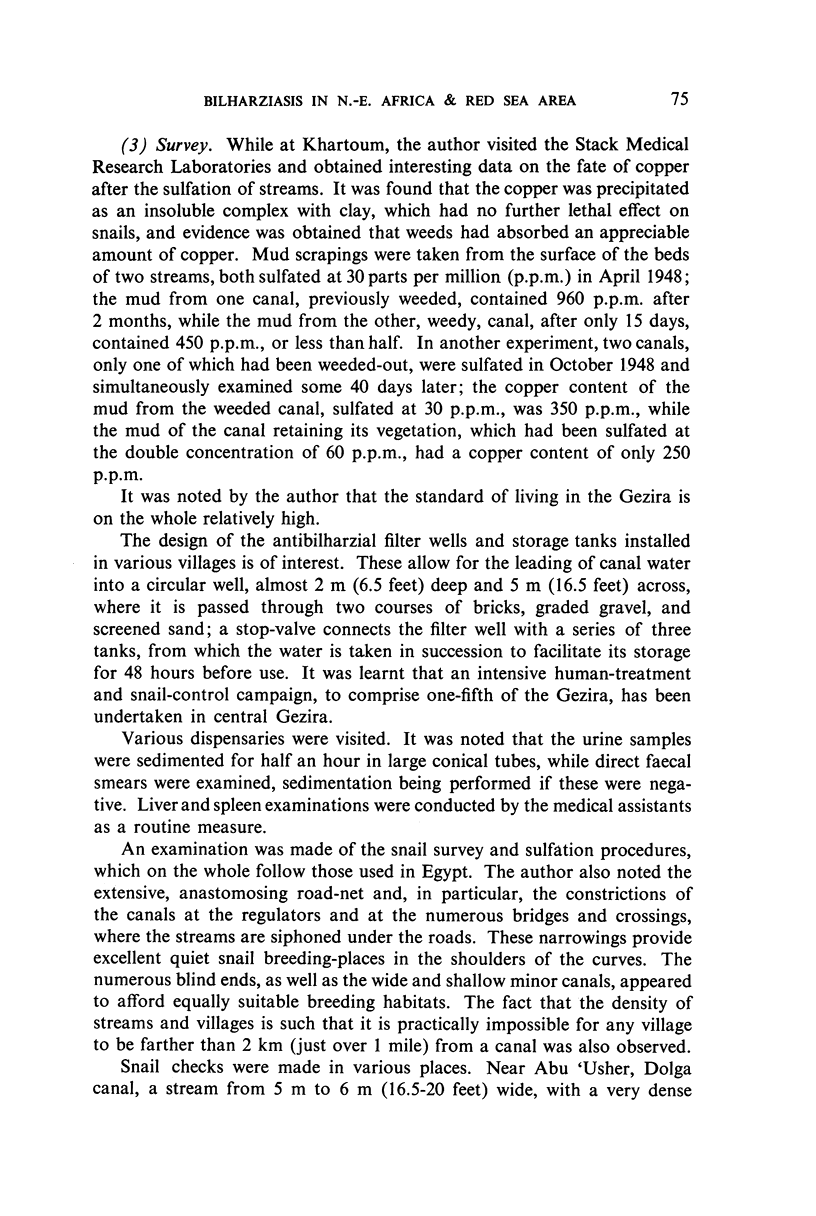

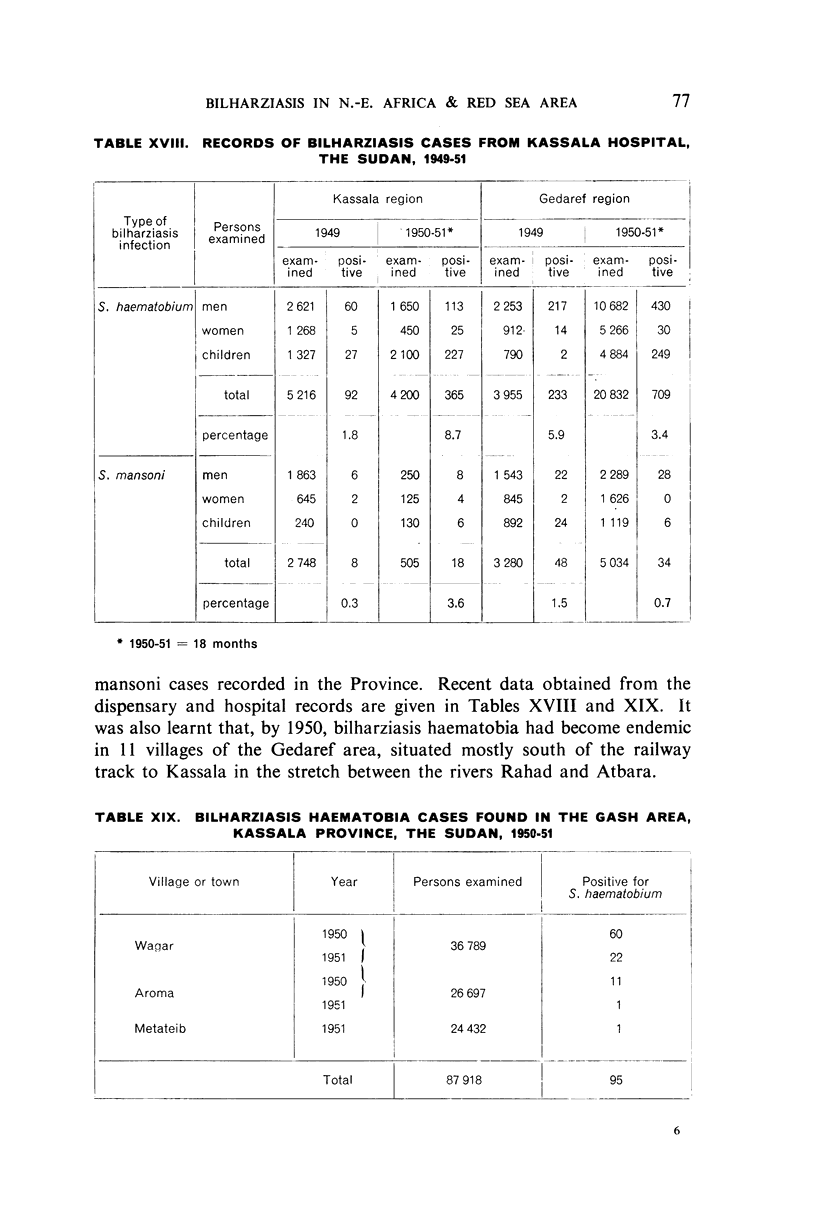
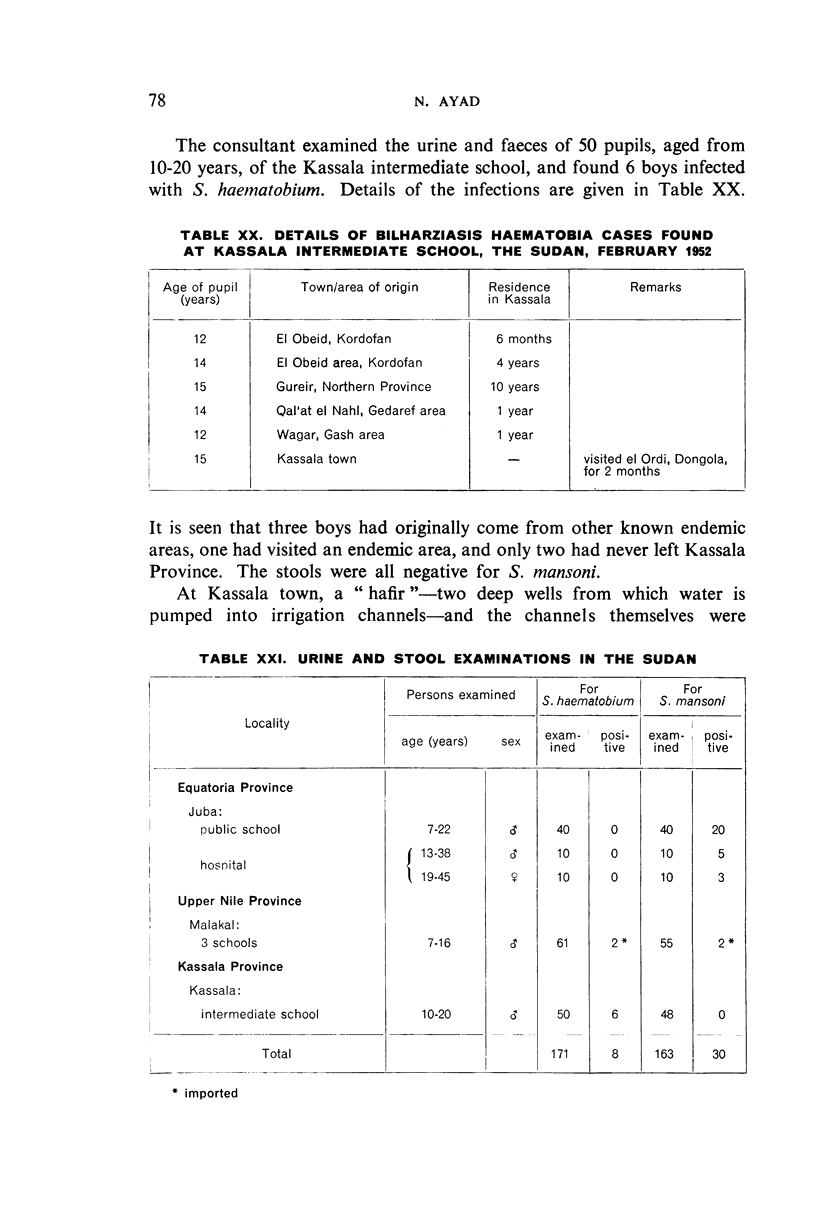
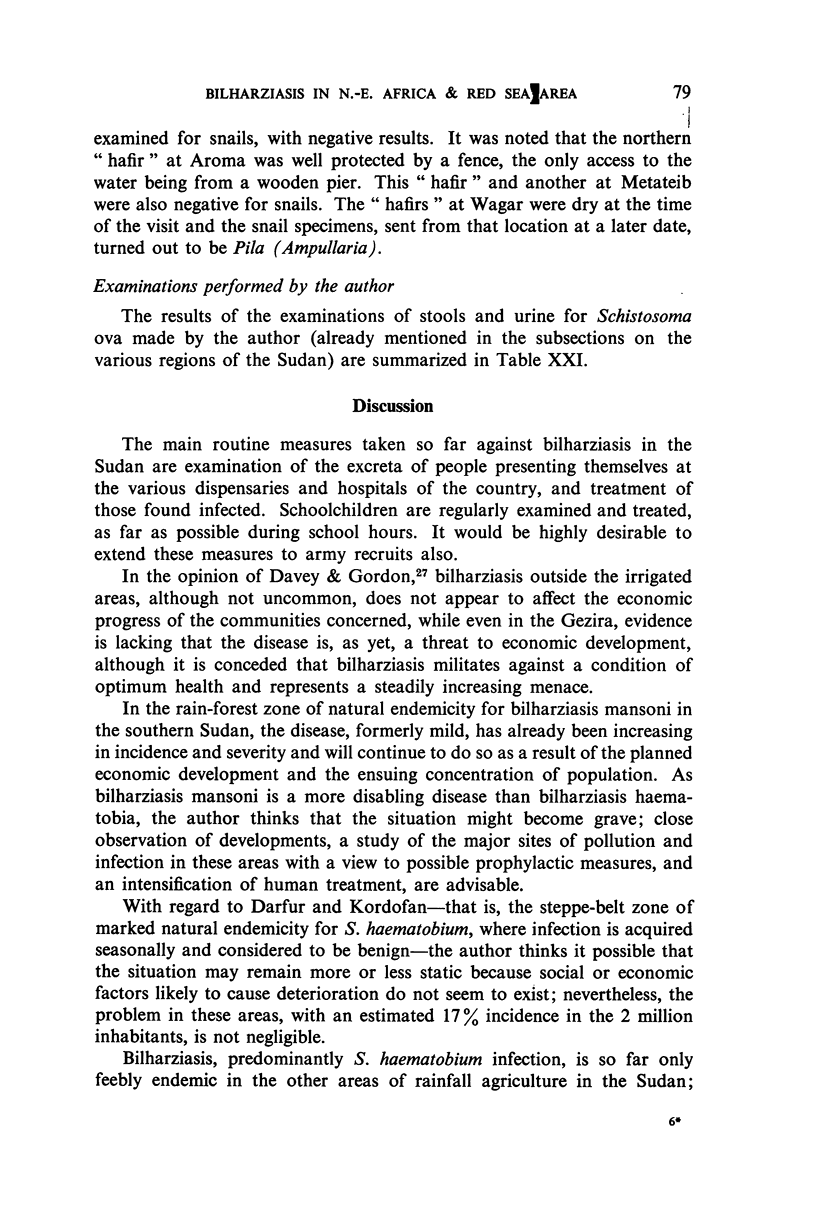
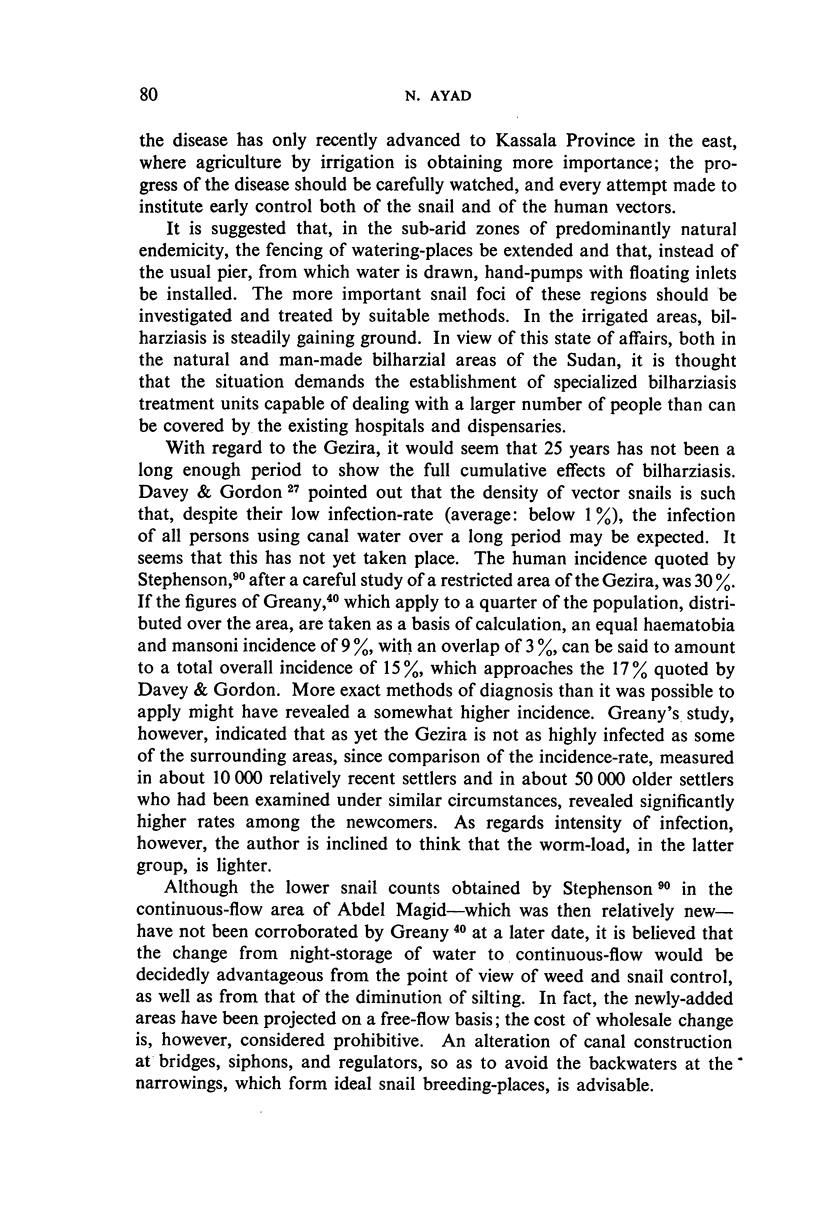
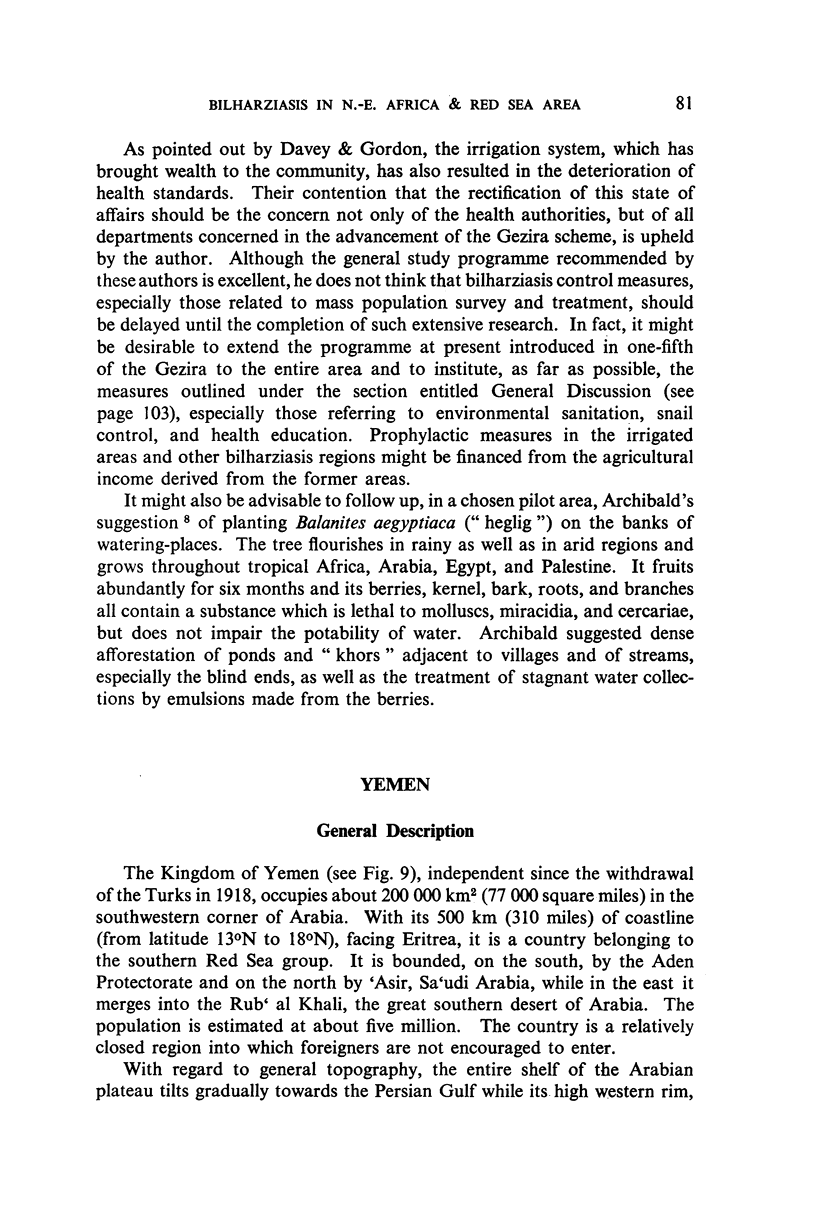
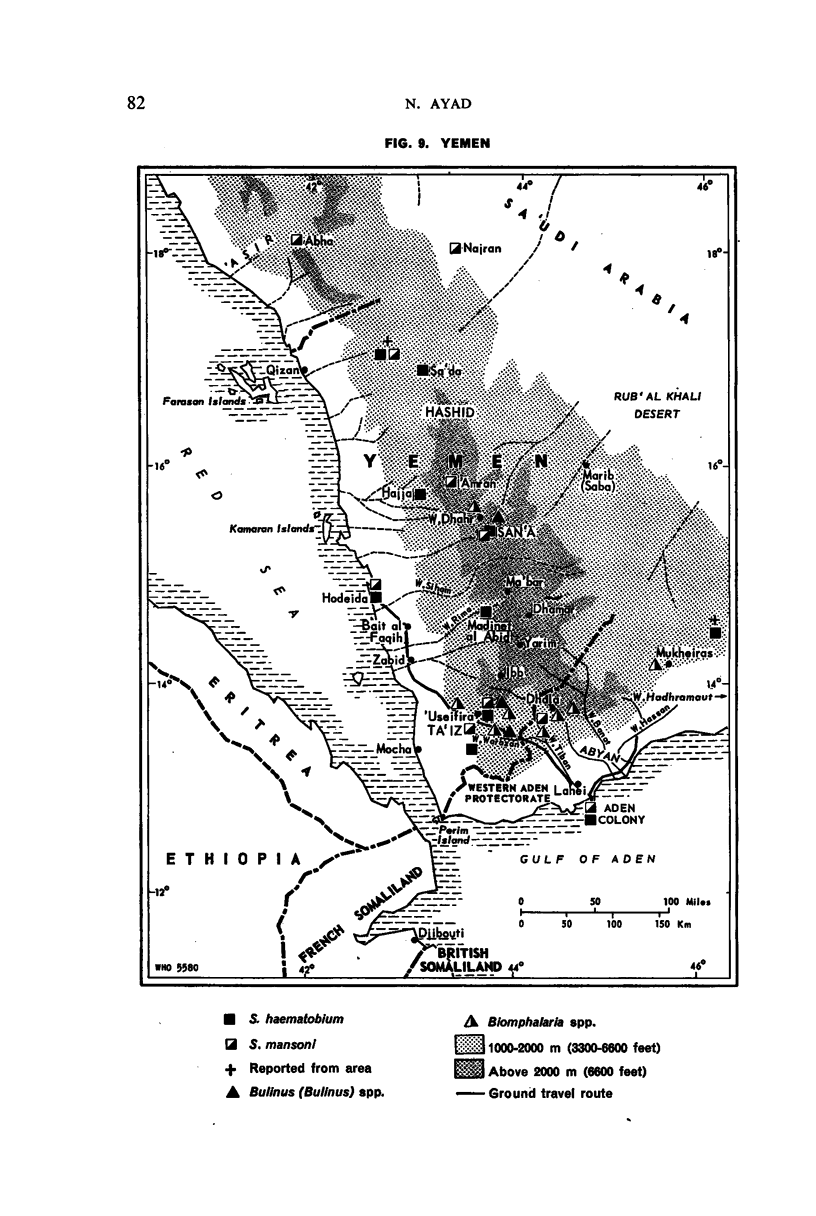

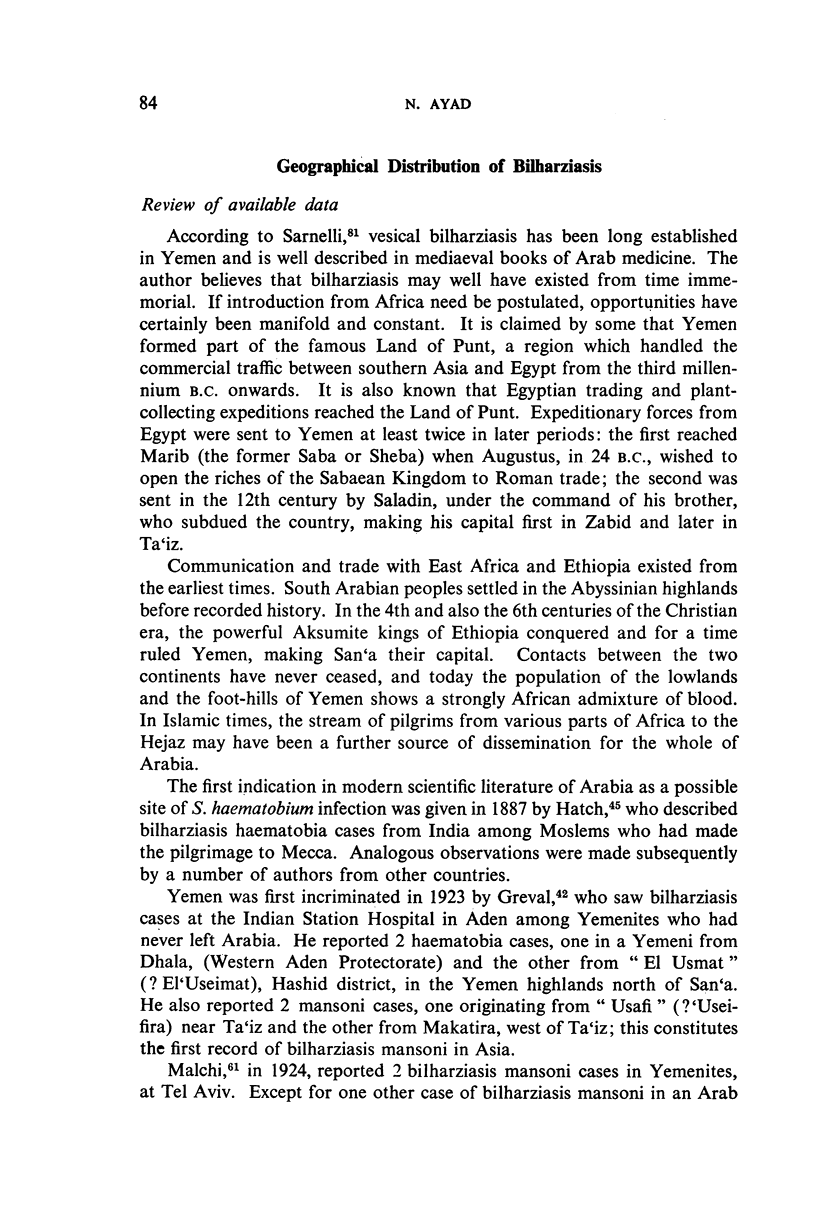
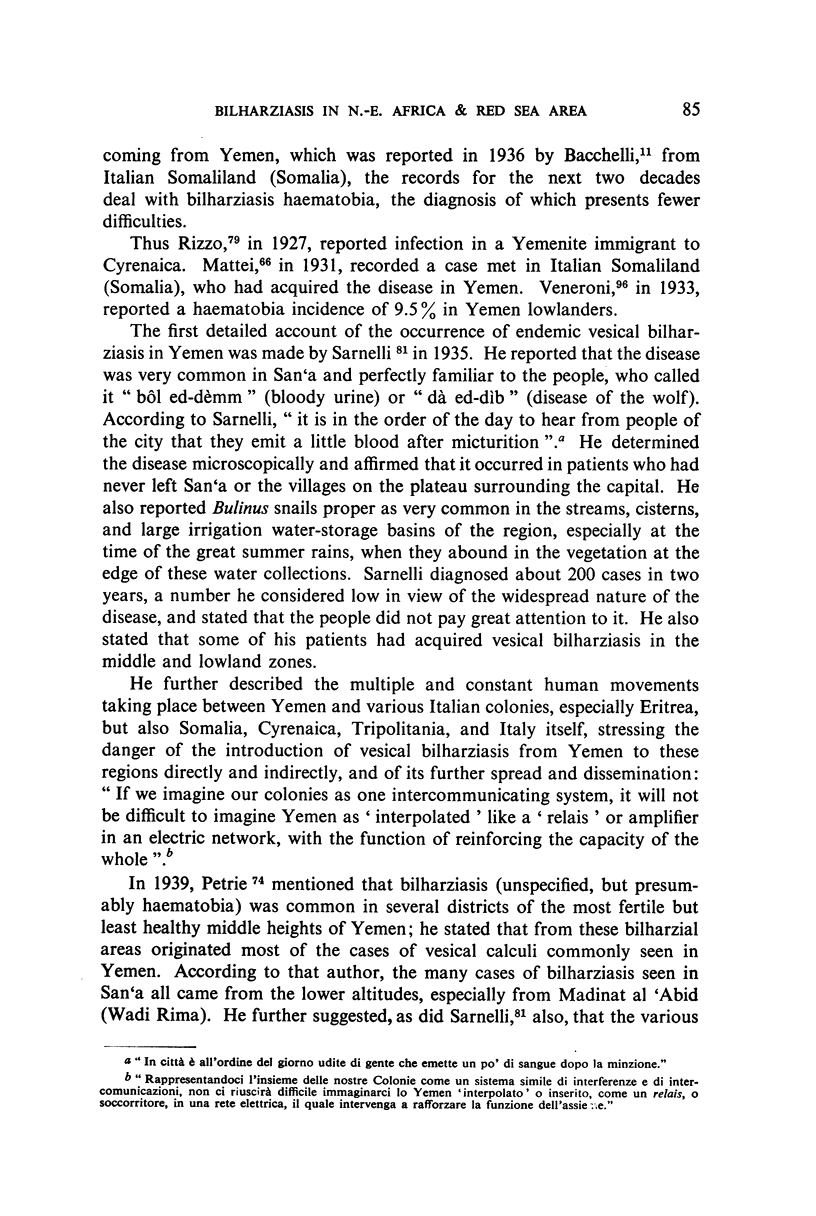
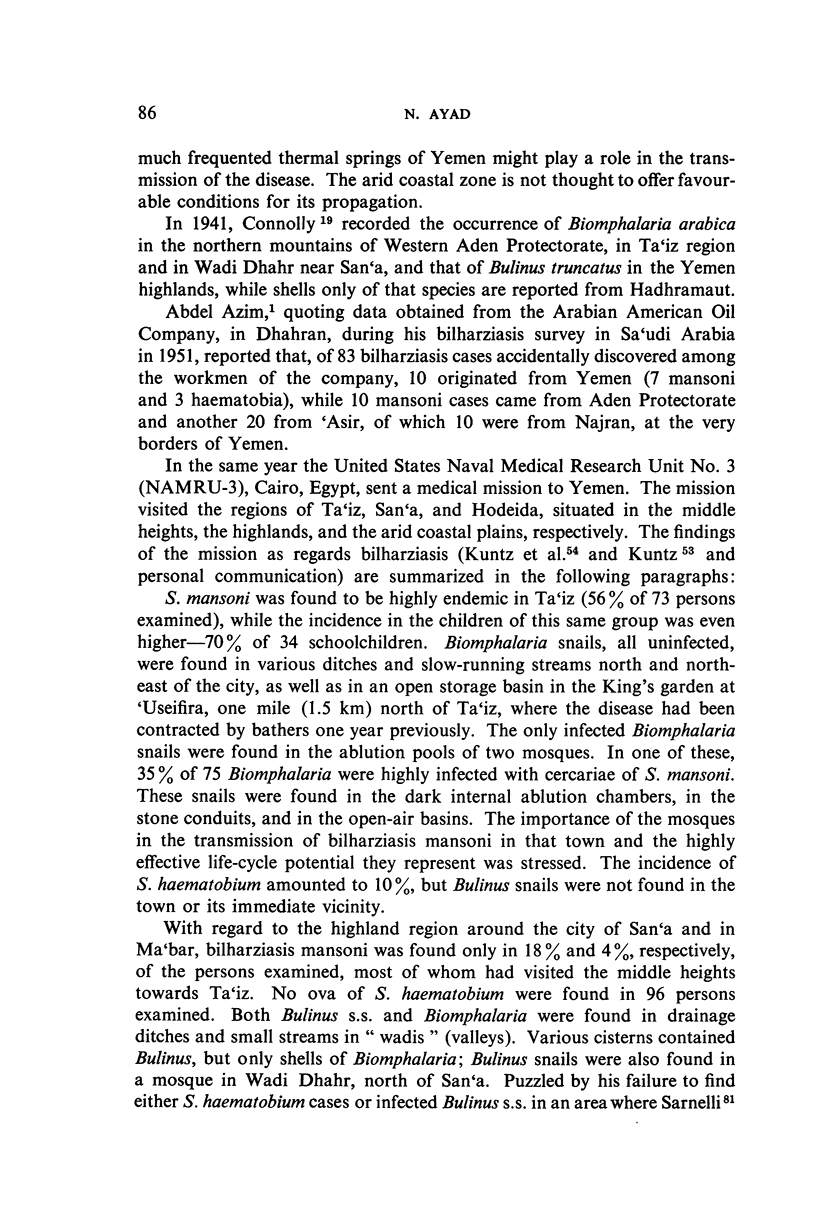
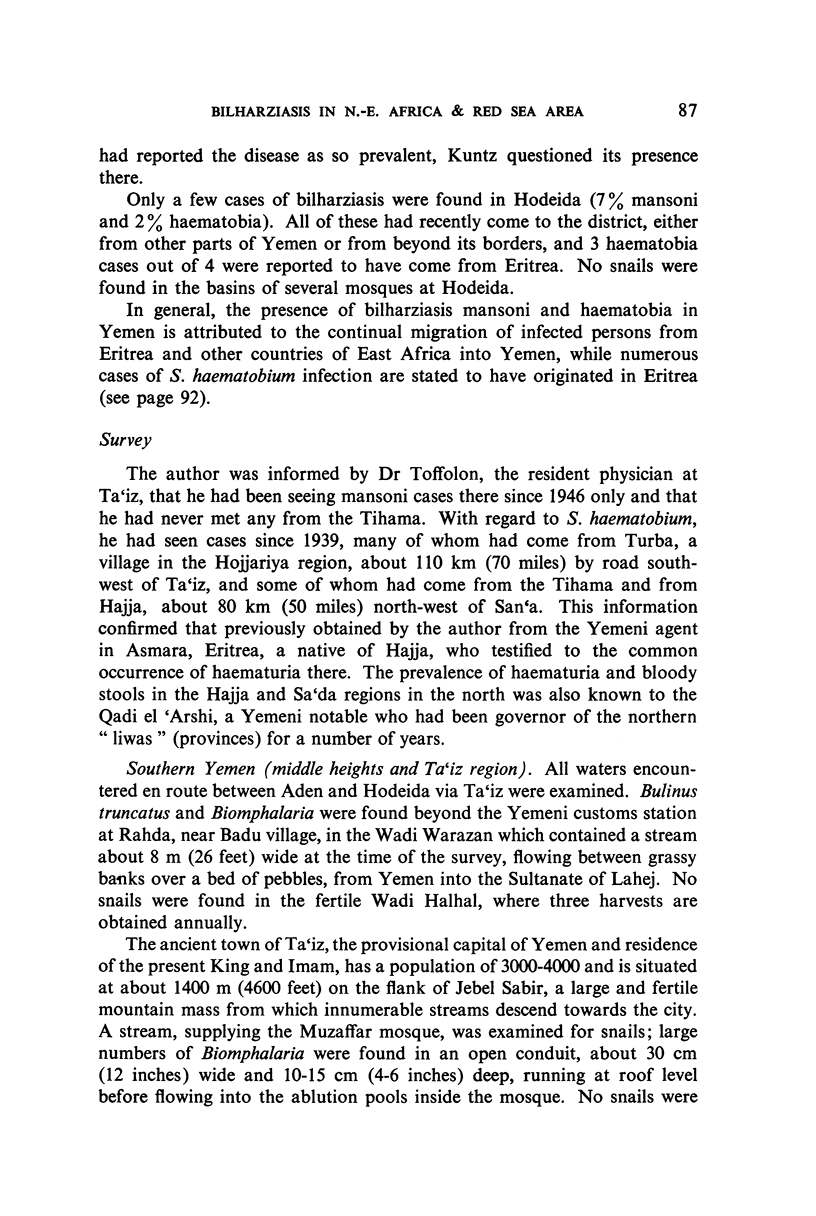
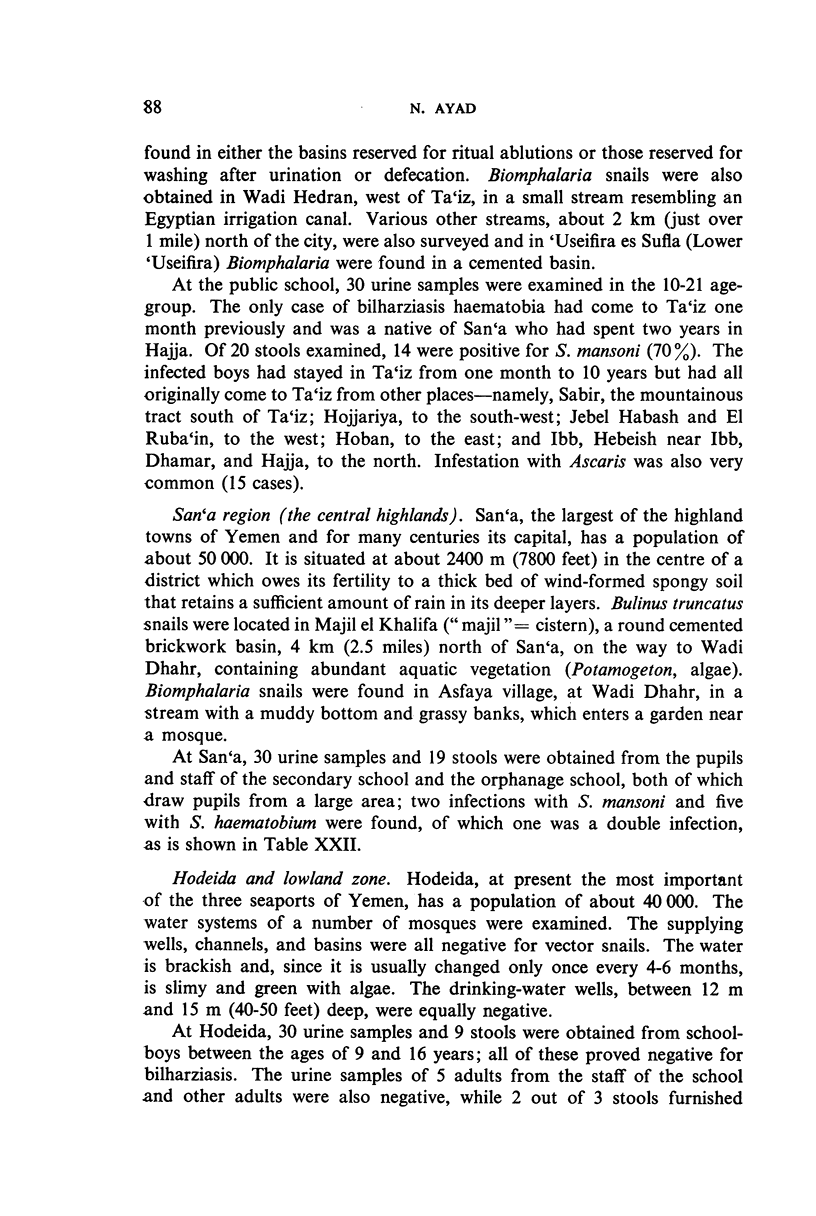





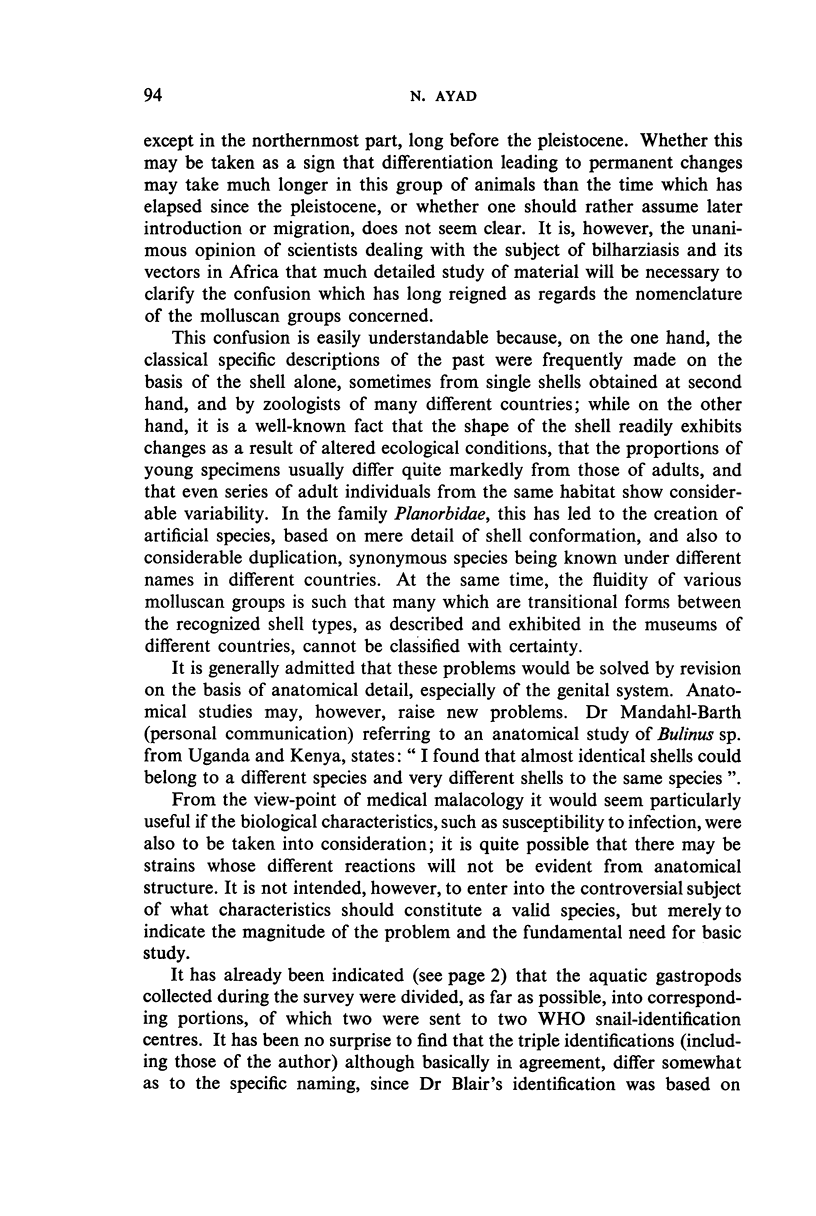


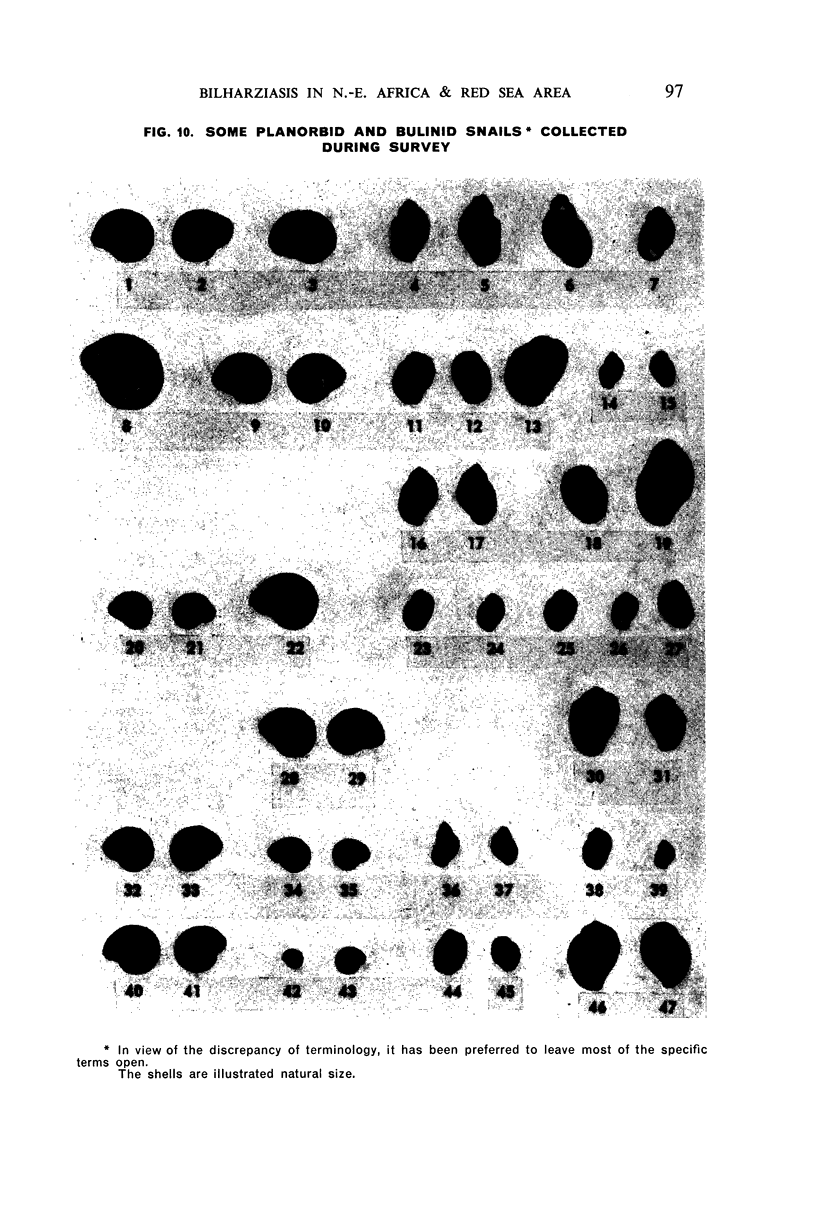
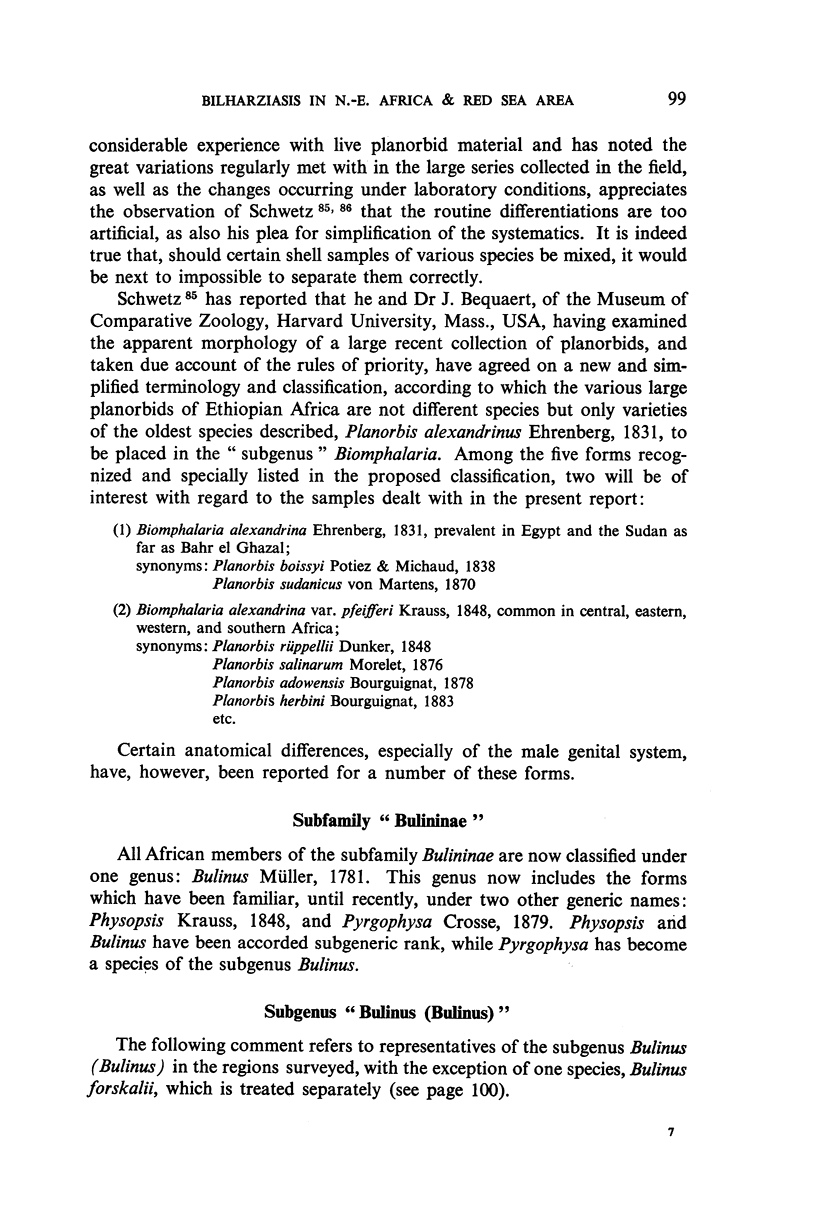
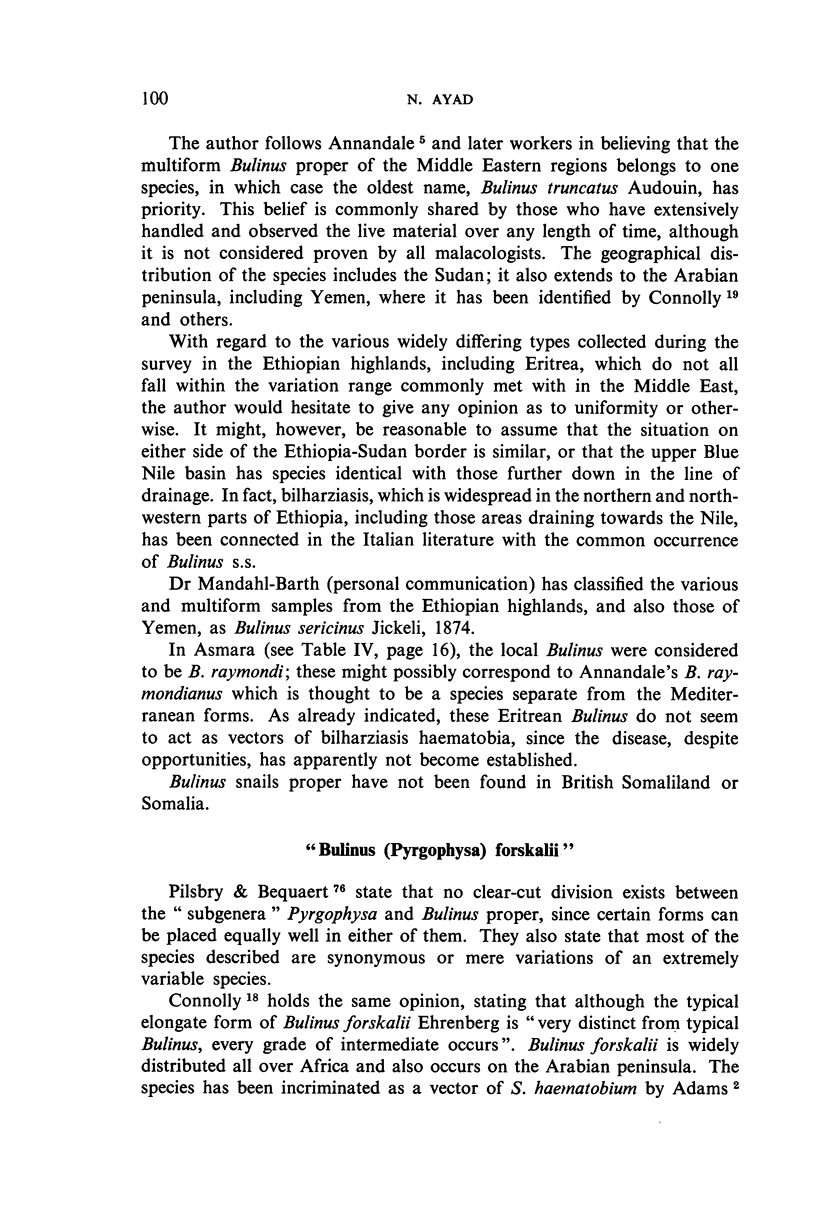

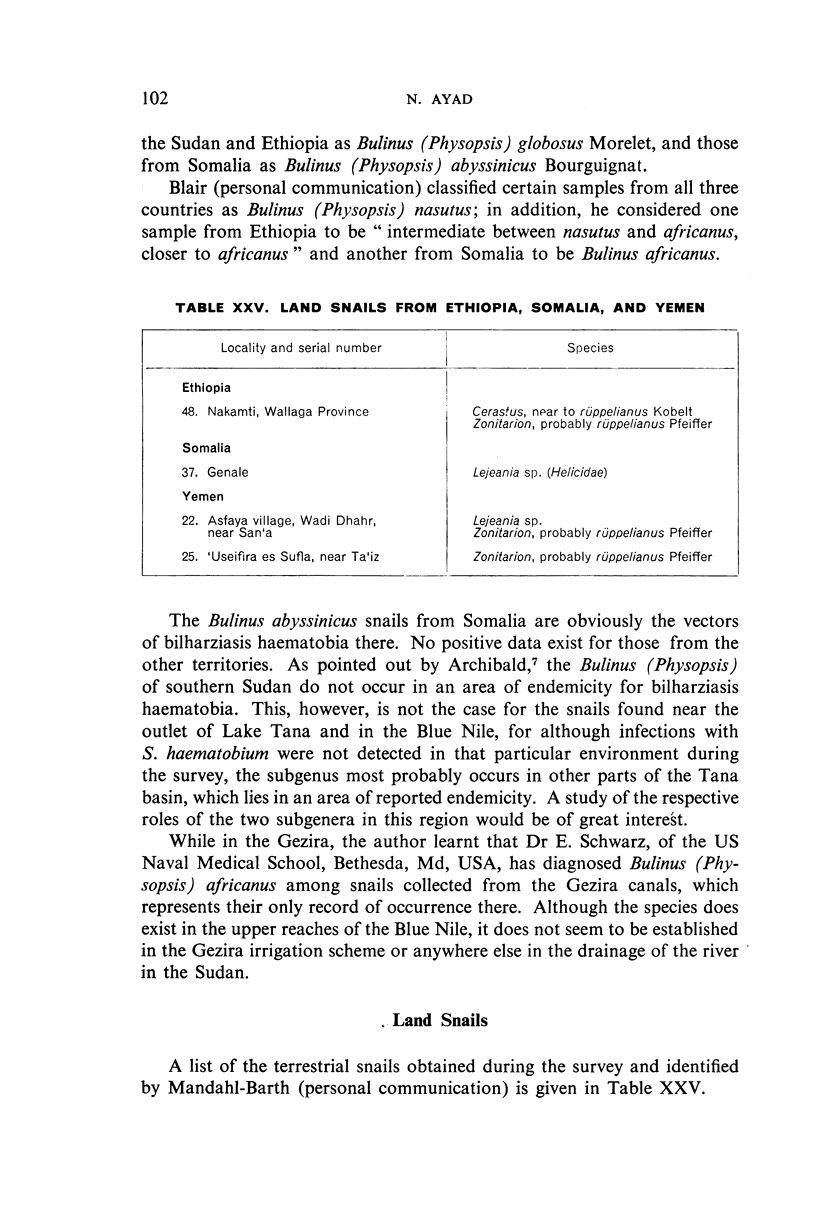
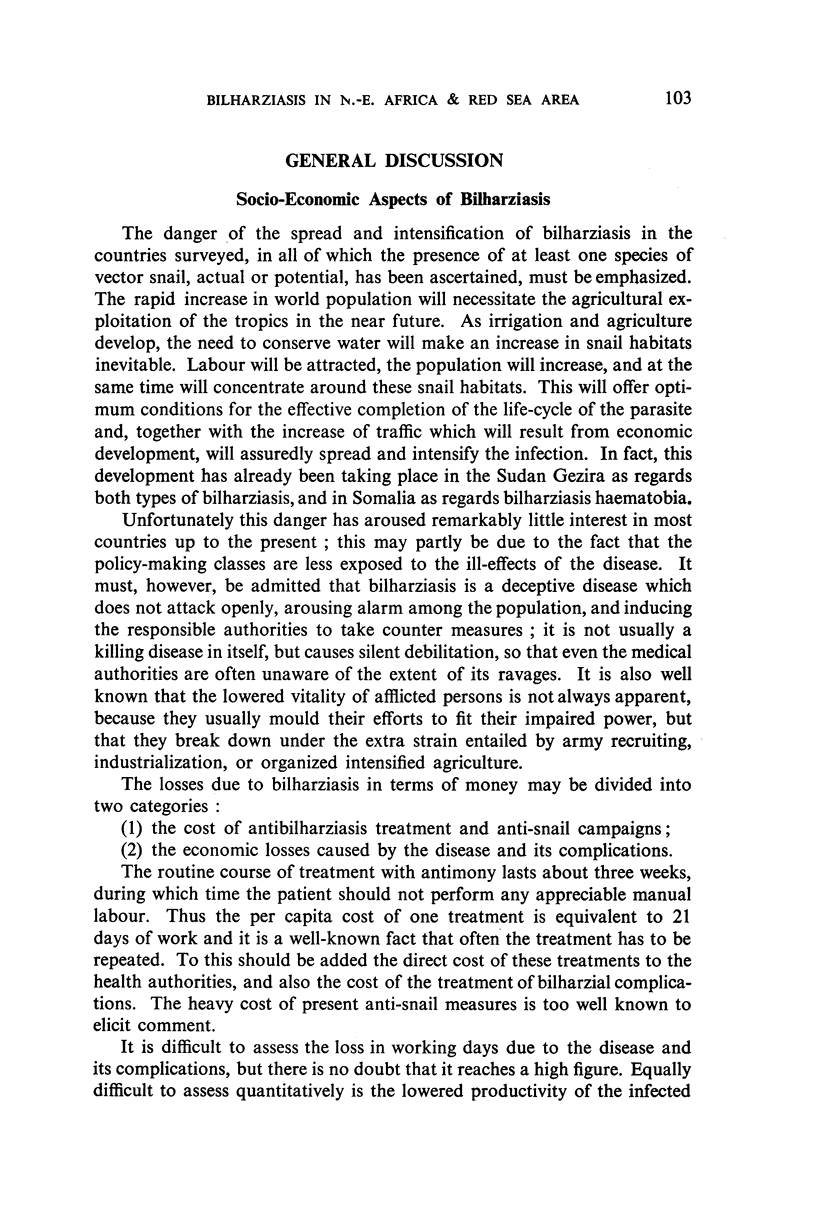

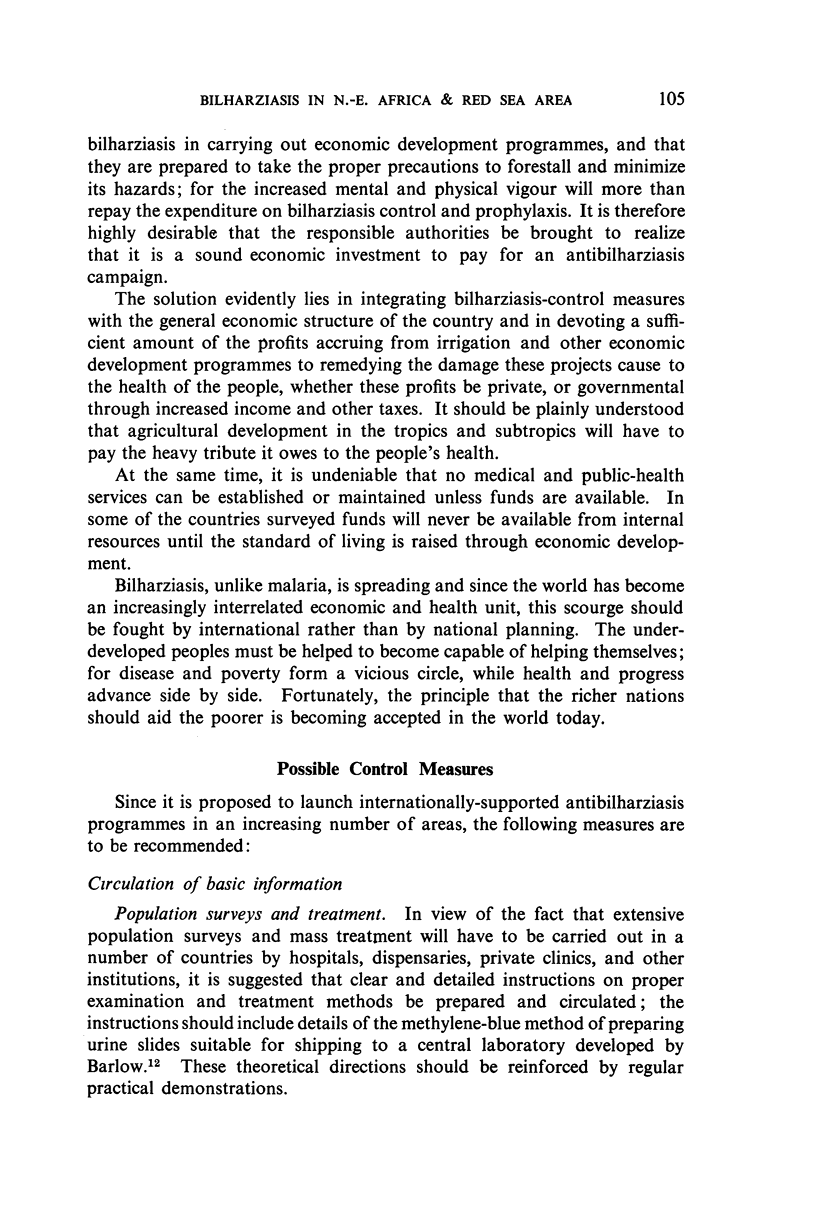
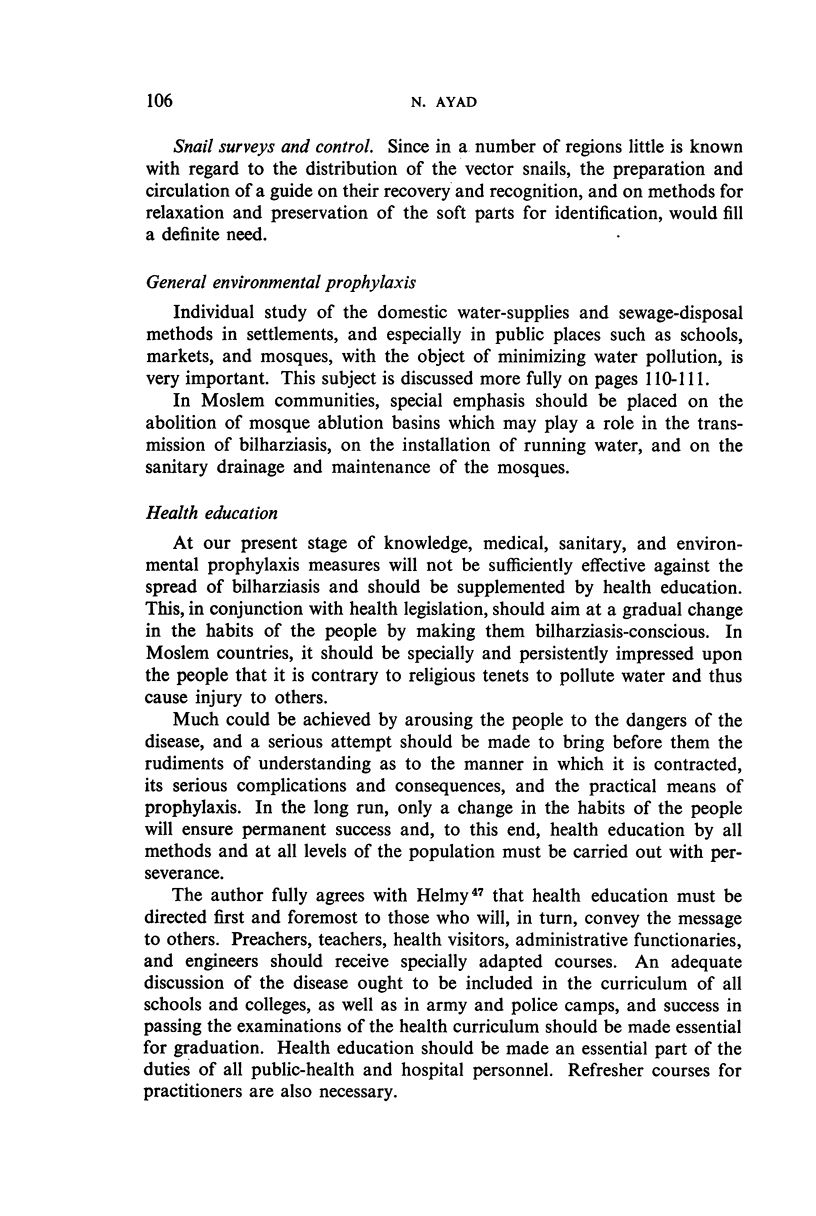
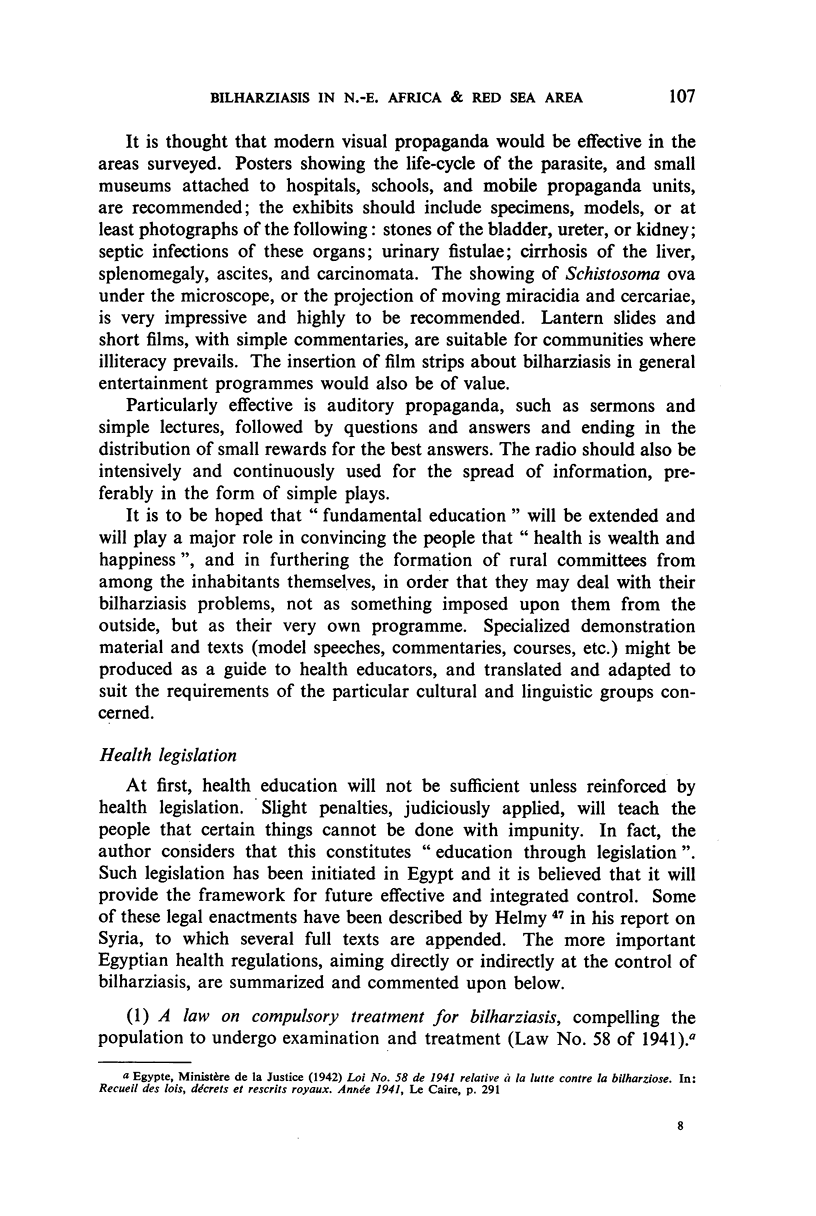
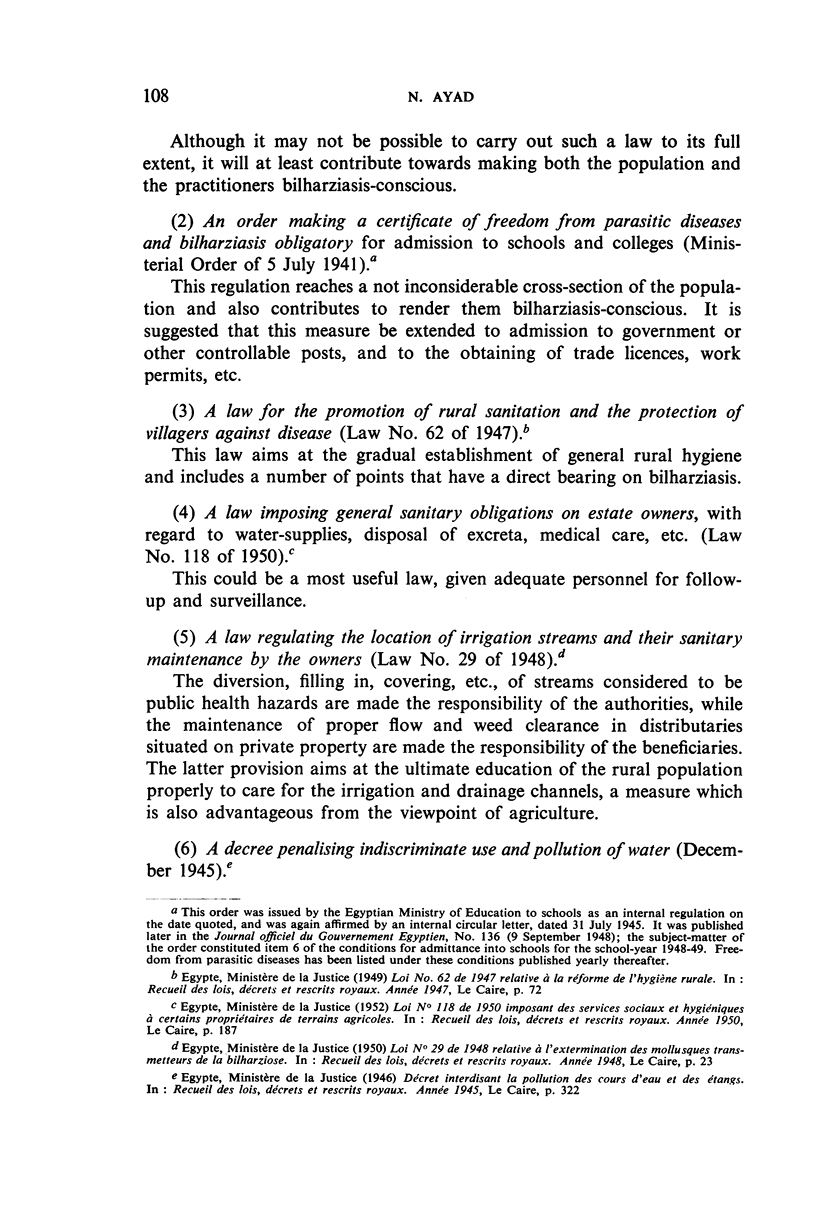
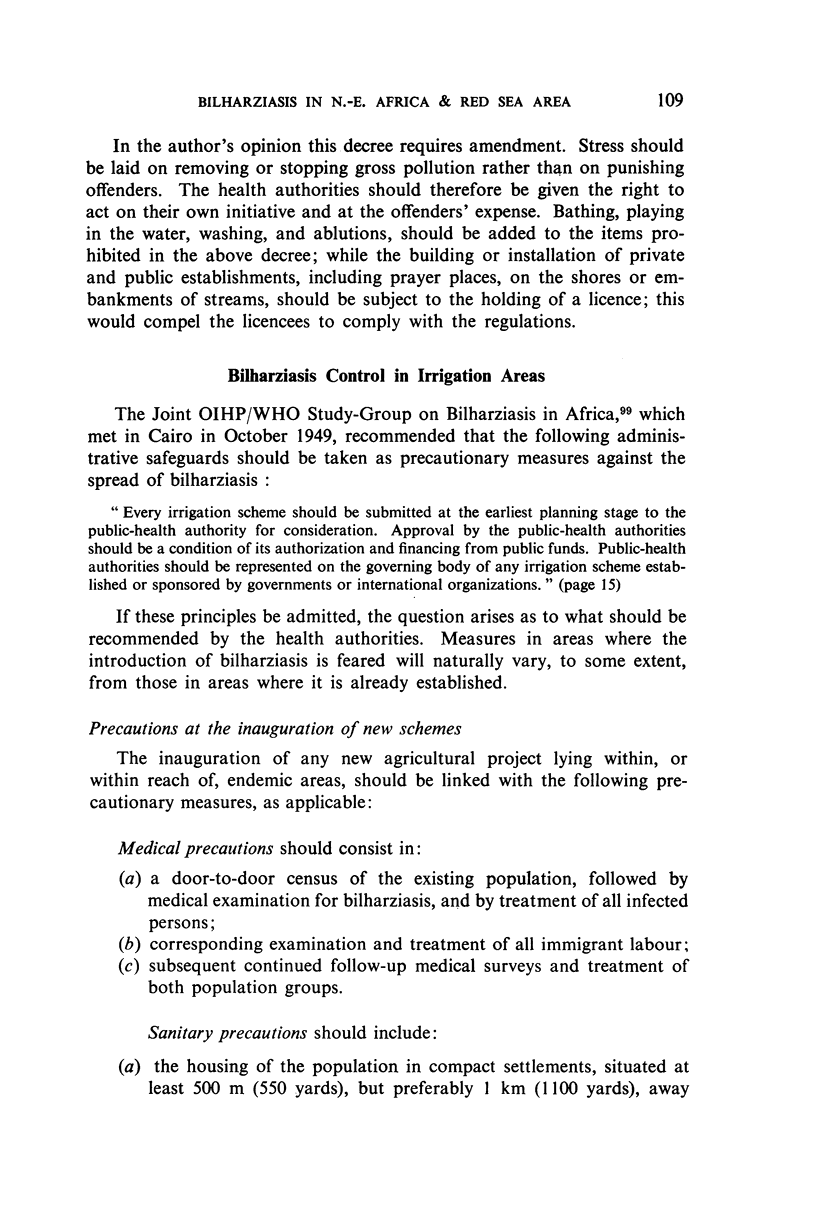
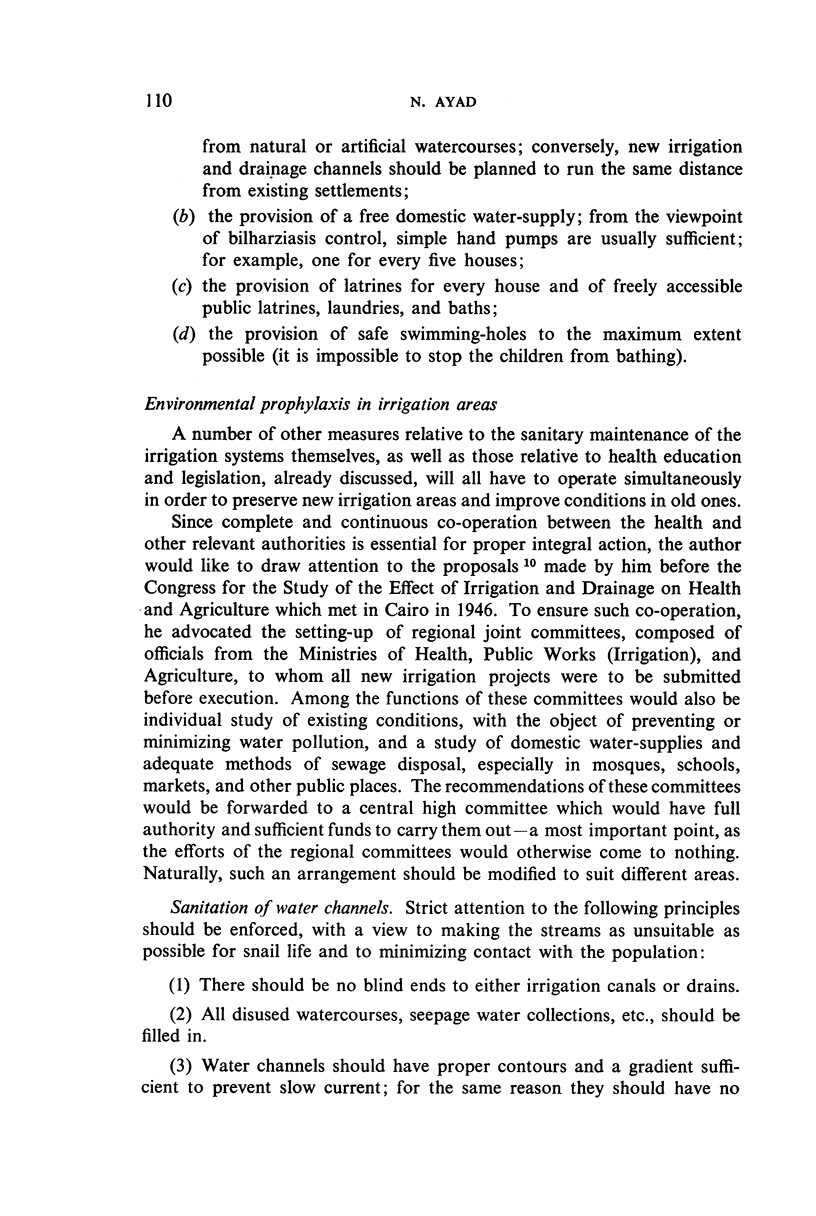
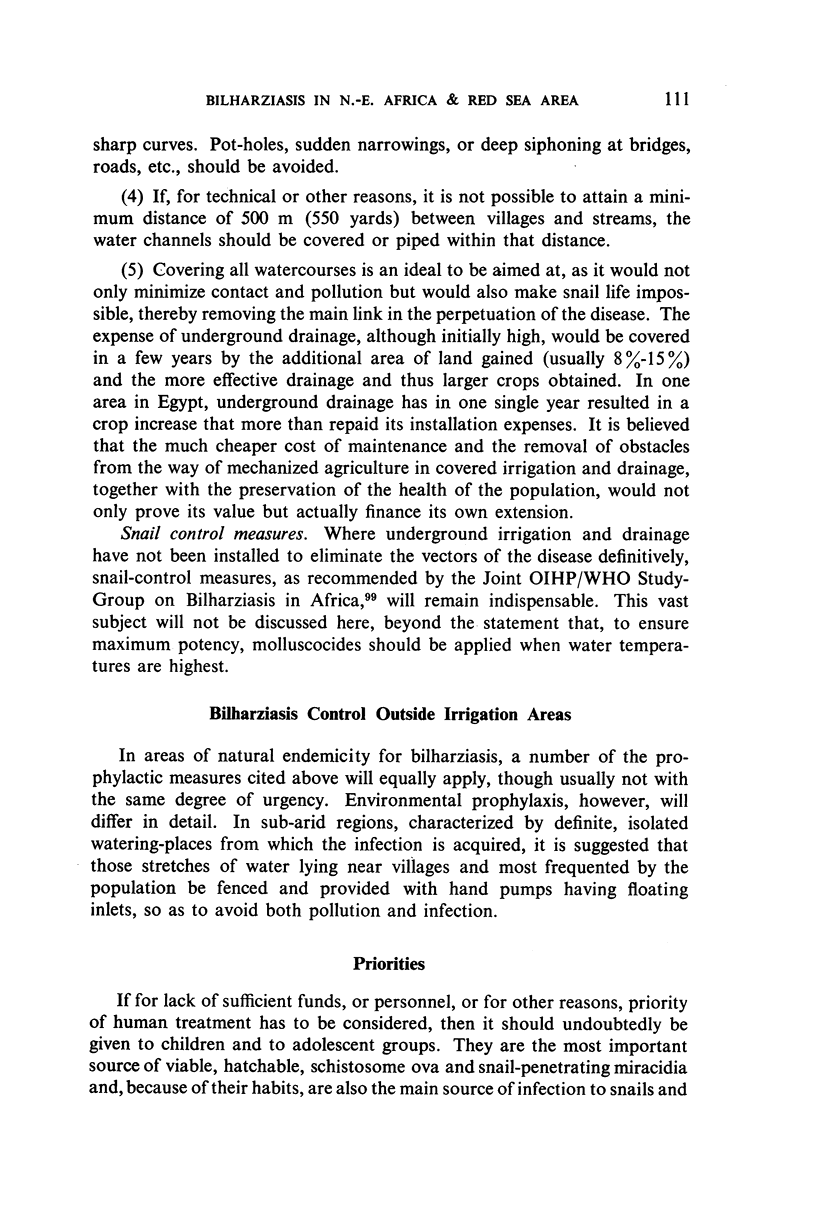
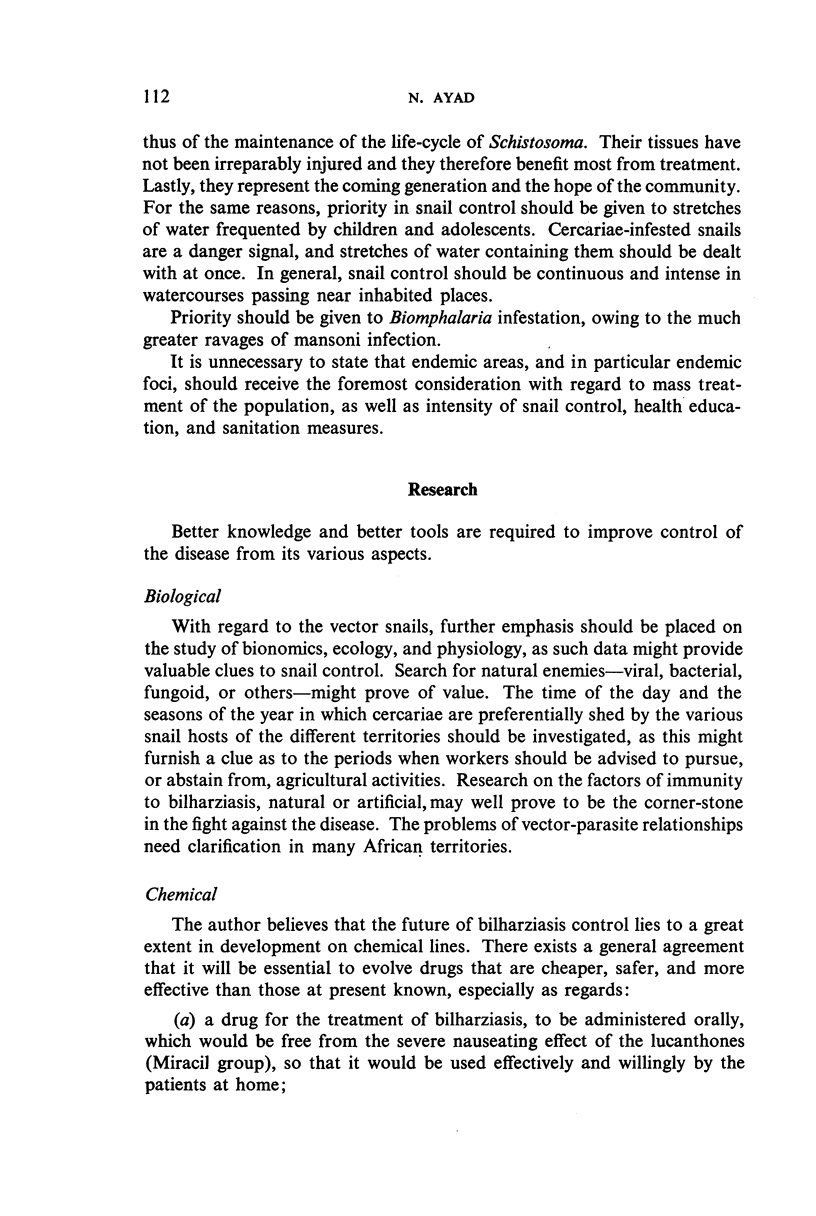
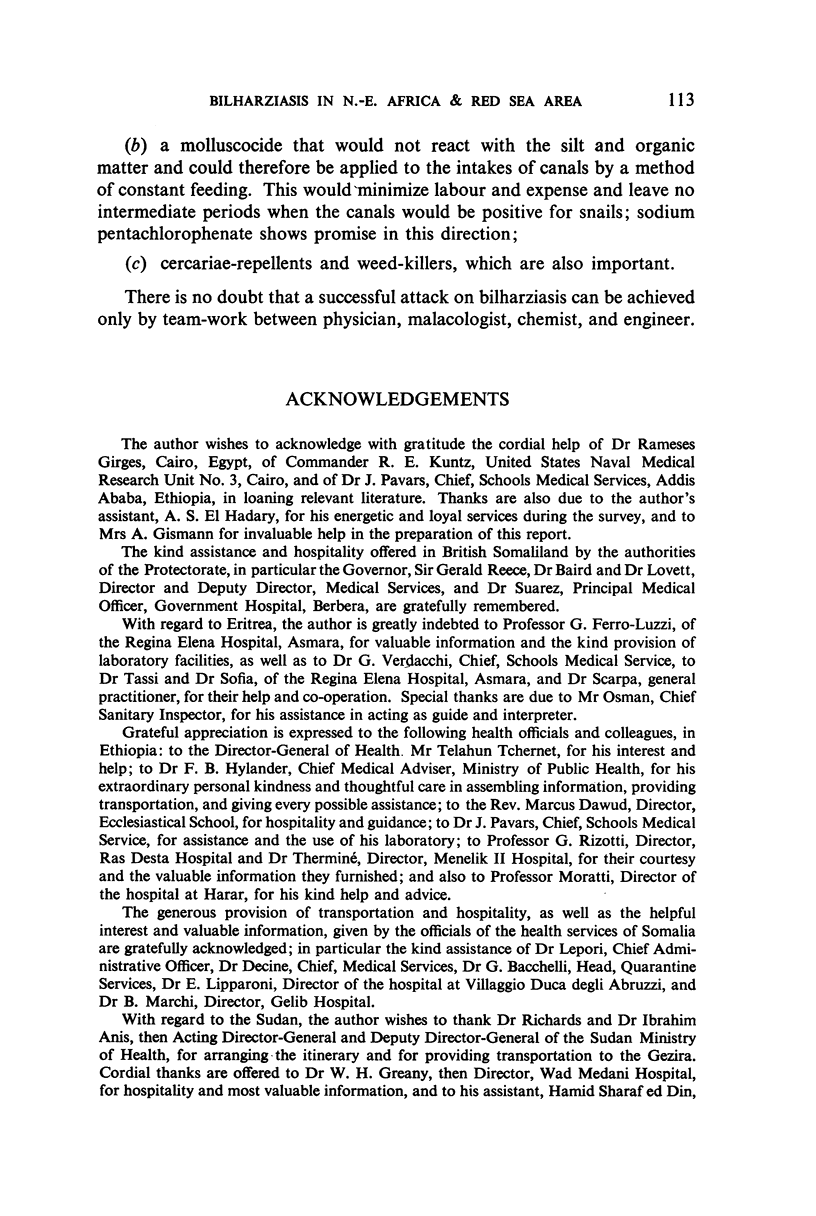


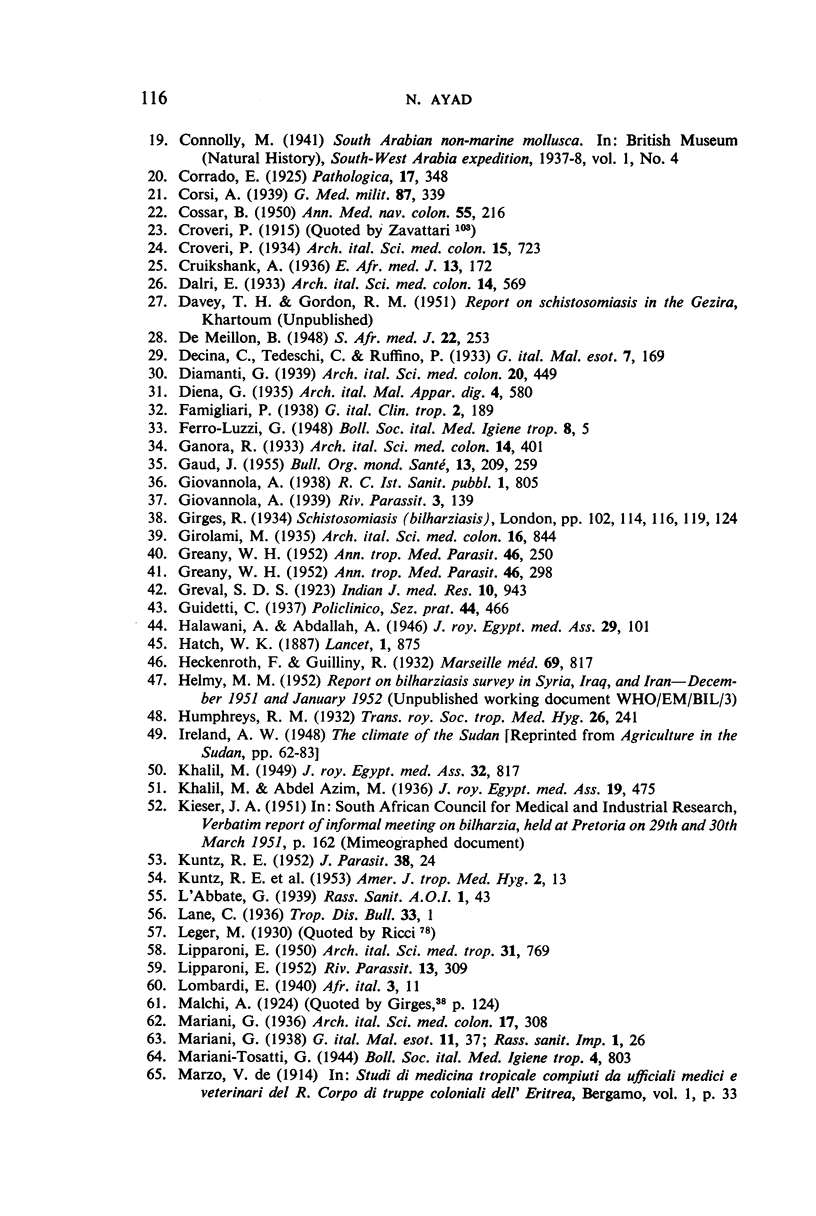

Images in this article
Selected References
These references are in PubMed. This may not be the complete list of references from this article.
- COSSAR B. Contributo alla conoscenza della nosografia dell'ovest etiopico; bilharziosi mista vescicale ed intestinale con localizzazione aberrant intestinale di Schistosoma haematobium. Ann Med Nav (Roma) 1950 Mar-Apr;55(2):216–216. [PubMed] [Google Scholar]
- GREANY W. H. Schistosomiasis in the Gezira irrigated area of the Anglo-Egyptian Sudan. II. Clinical study of Schistosomiasis mansoni. Ann Trop Med Parasitol. 1952 Dec;46(4):298–310. doi: 10.1080/00034983.1952.11685535. [DOI] [PubMed] [Google Scholar]
- GREANY W. H. Schistosomiasis in the Gezira irrigated area of the Anglo-Egyption Sudan. I. Public health and field aspects. Ann Trop Med Parasitol. 1952 Nov;46(3):250–267. doi: 10.1080/00034983.1952.11685530. [DOI] [PubMed] [Google Scholar]
- KUNTZ R. E., MALAKATIS G. M., LAWLESS D. K., STROME C. P. A. Medical mission to the Yemen, Southwest Arabia, 1951. II. A cursory survey of the intestinal protozoa and helminth parasites in the people of the Yemen. Am J Trop Med Hyg. 1953 Jan;2(1):13–19. doi: 10.4269/ajtmh.1953.2.13. [DOI] [PubMed] [Google Scholar]
- KUNTZ R. E. Schistosoma mansoni and Shaematobium in the Yemen, Southwest Arabia; with a report of an unusual factor in the epidemiology of Schistosomiasis mansoni. J Parasitol. 1952 Feb;38(1):24–28. [PubMed] [Google Scholar]
- WRIGHT W. H. Medical parasitology in a changing world. What of the future? J Parasitol. 1951 Feb;37(1):1–12. [PubMed] [Google Scholar]



